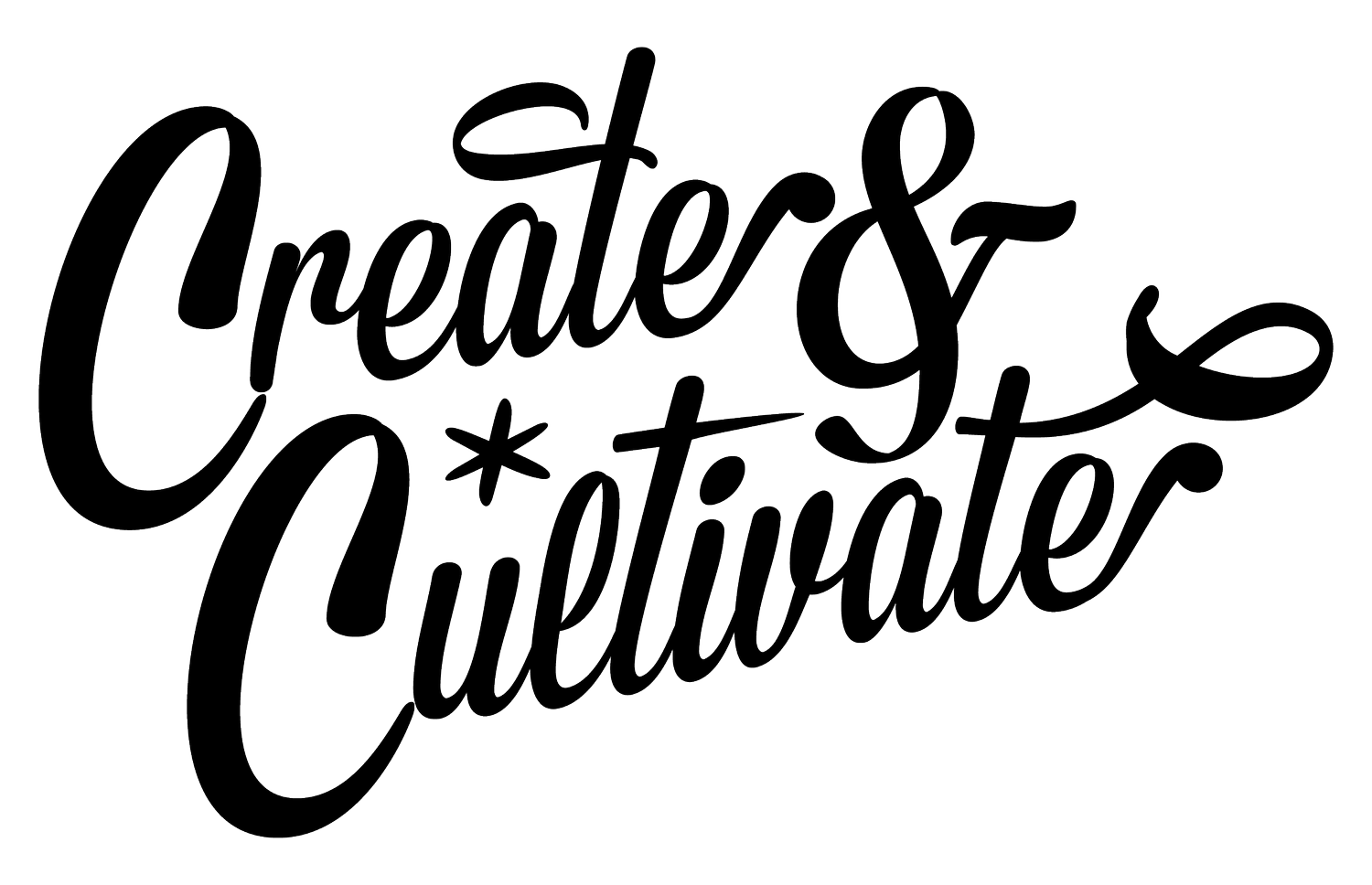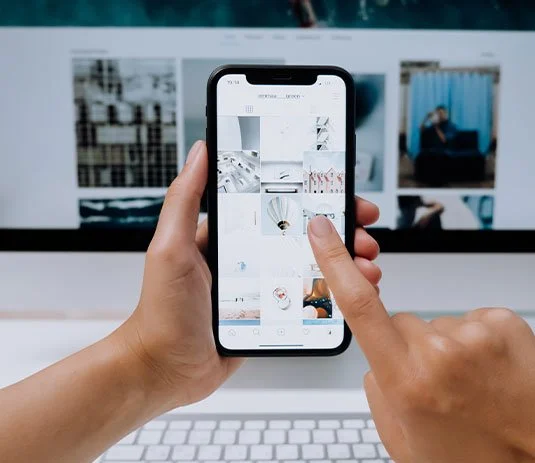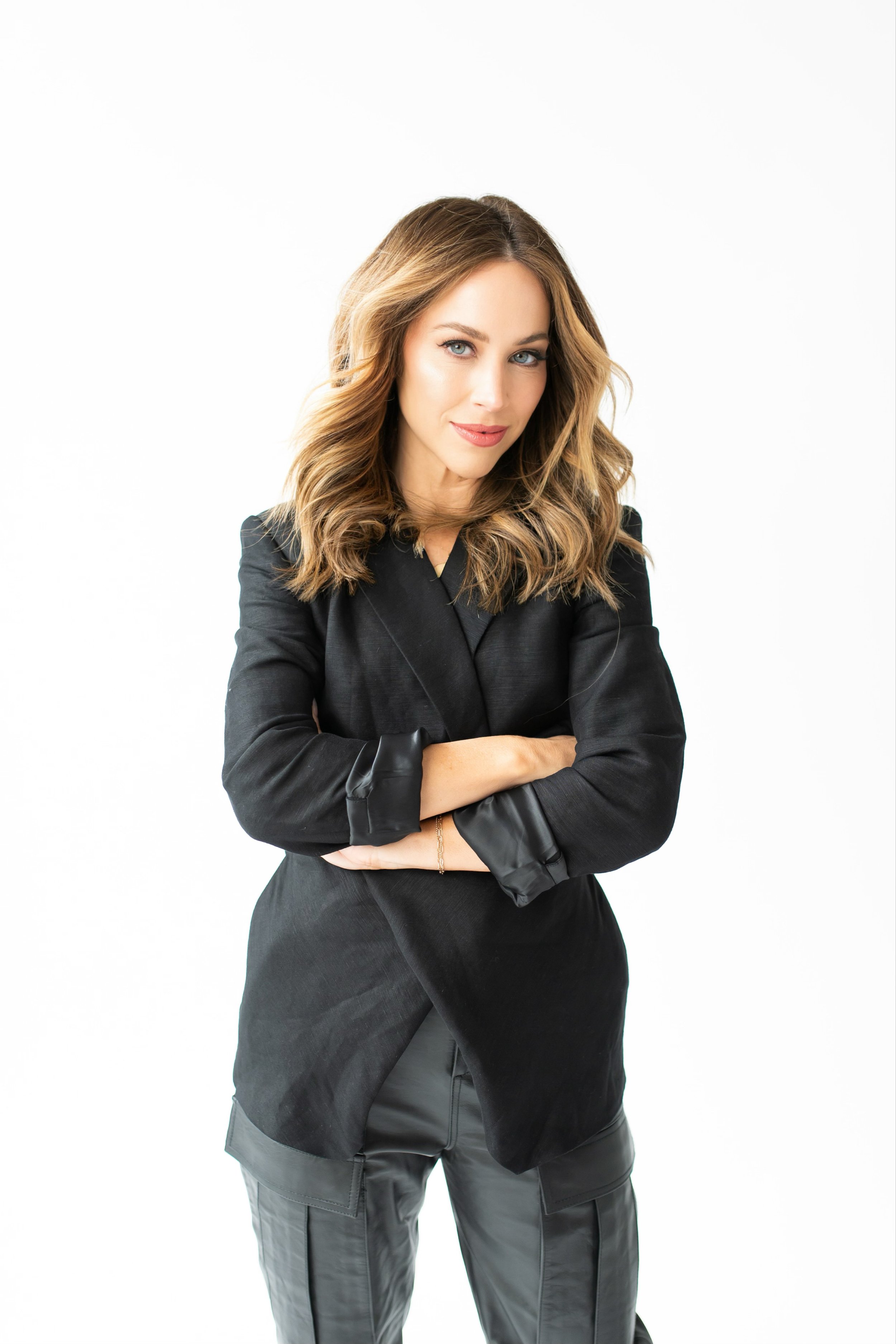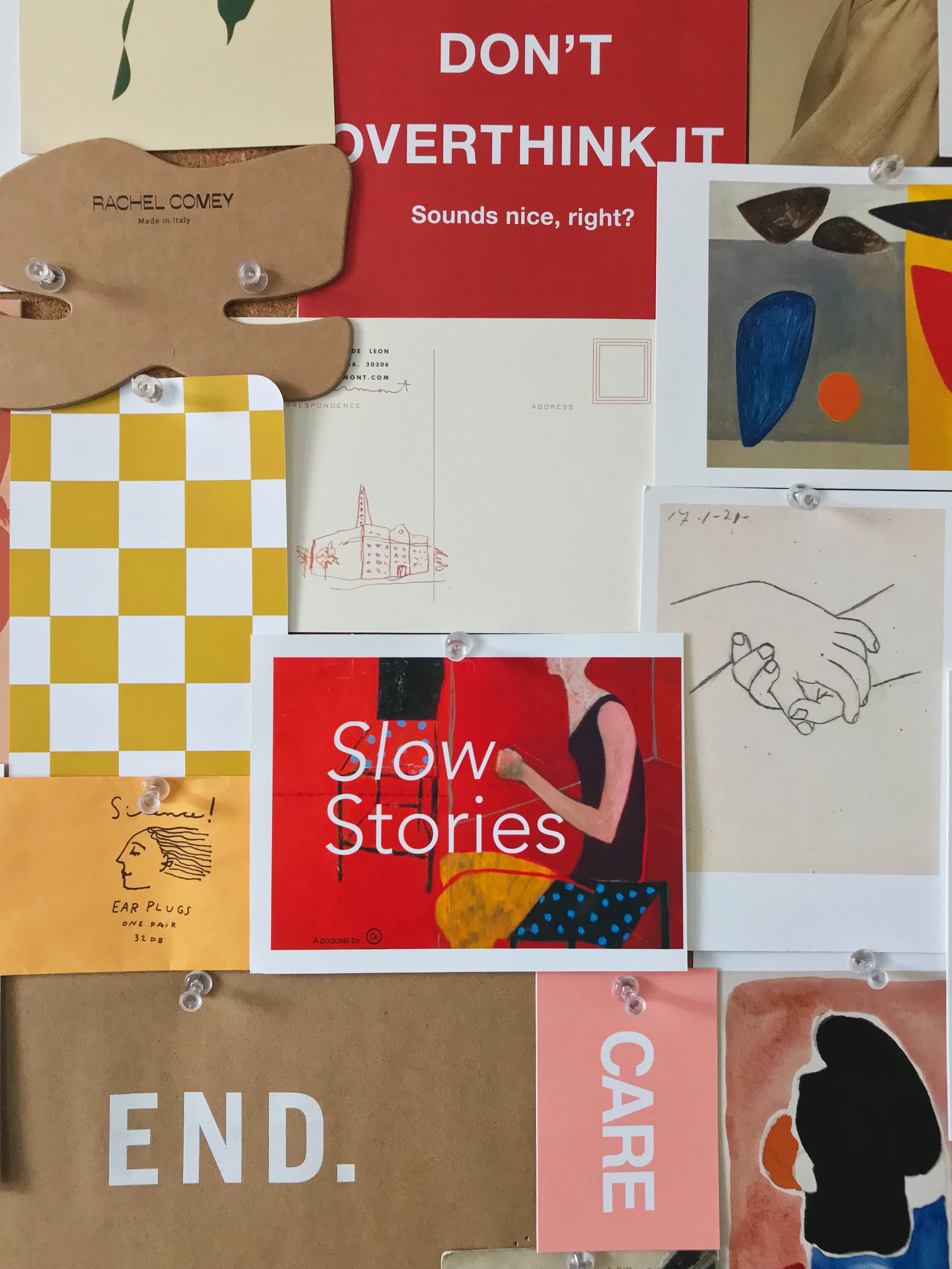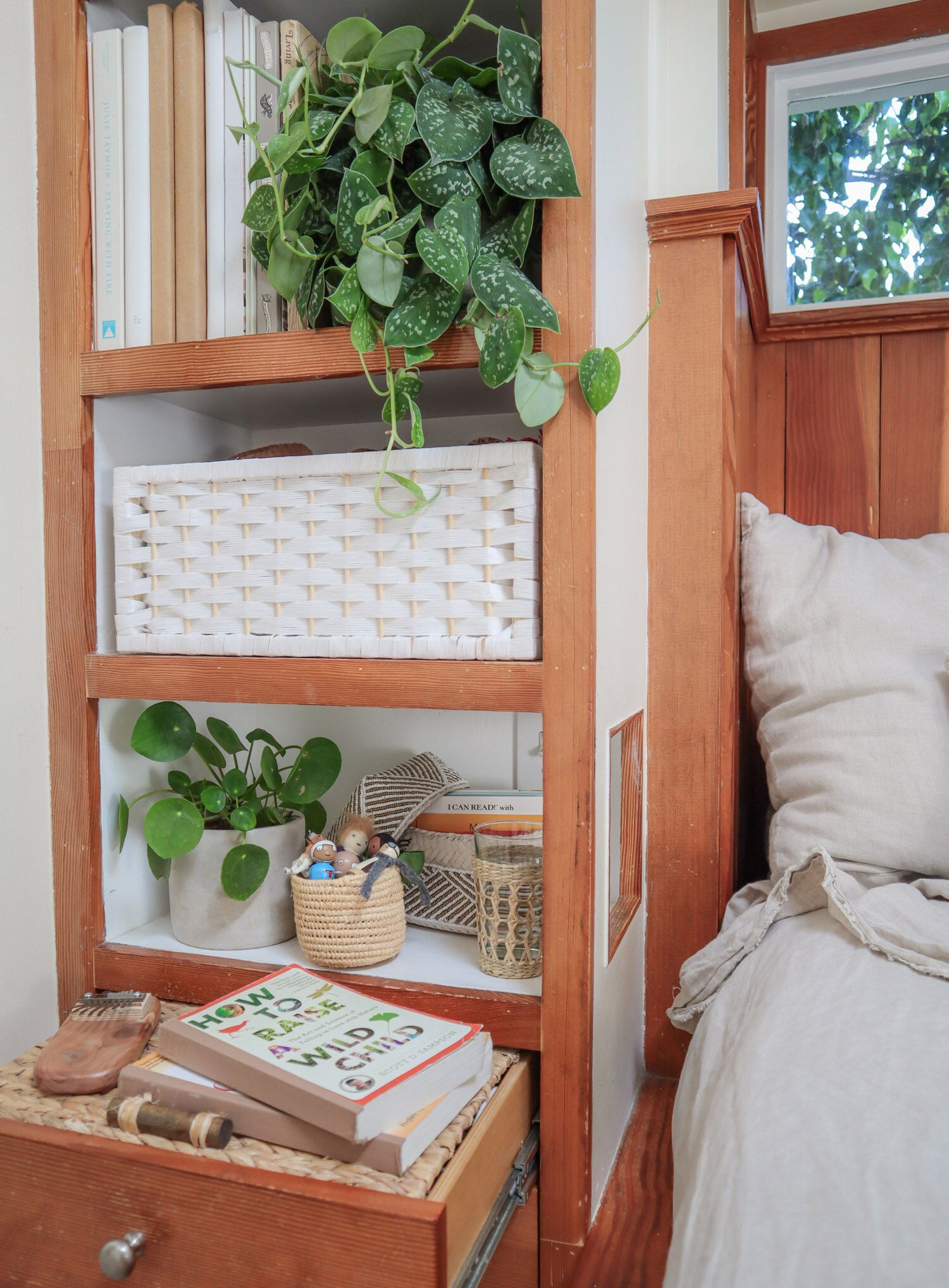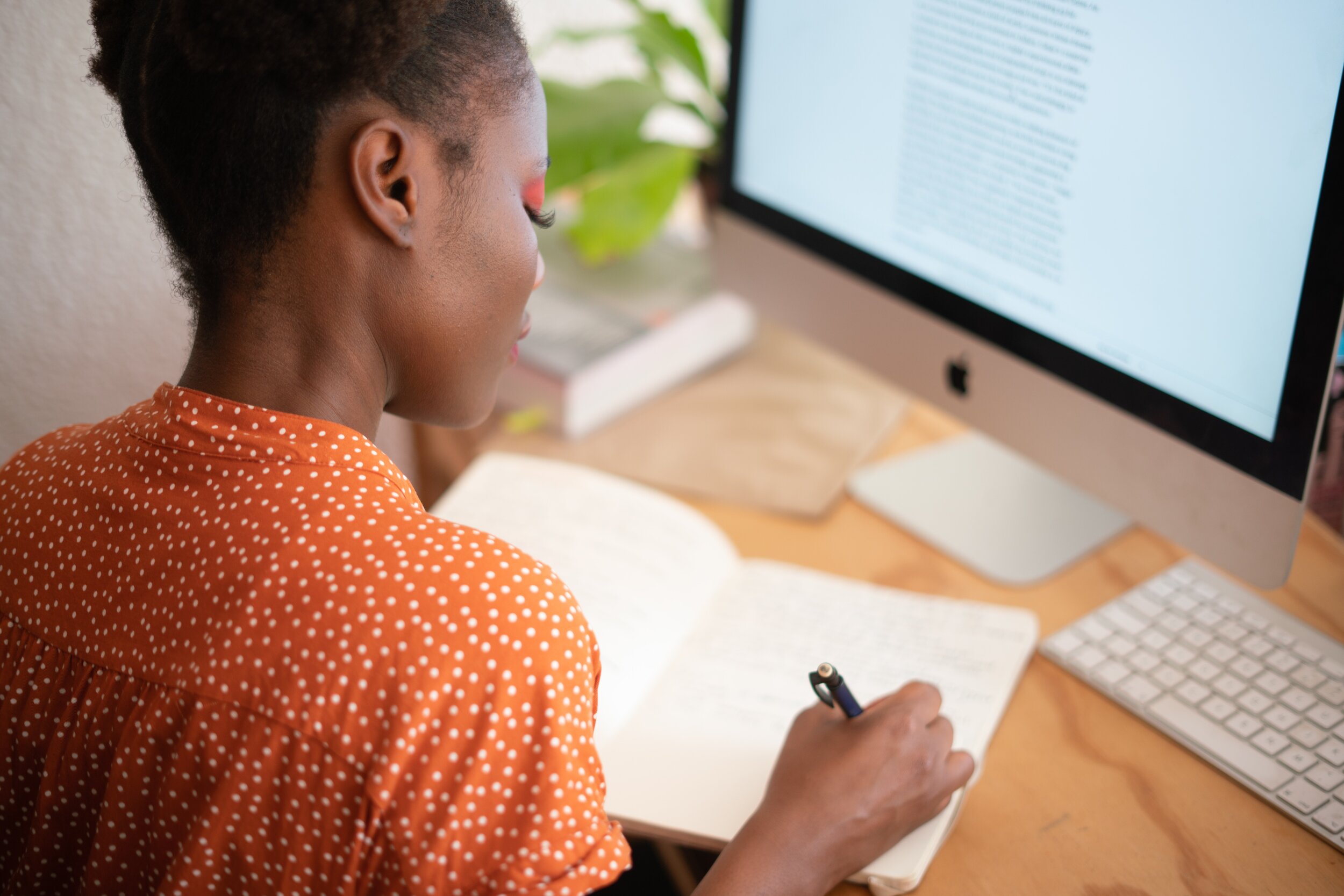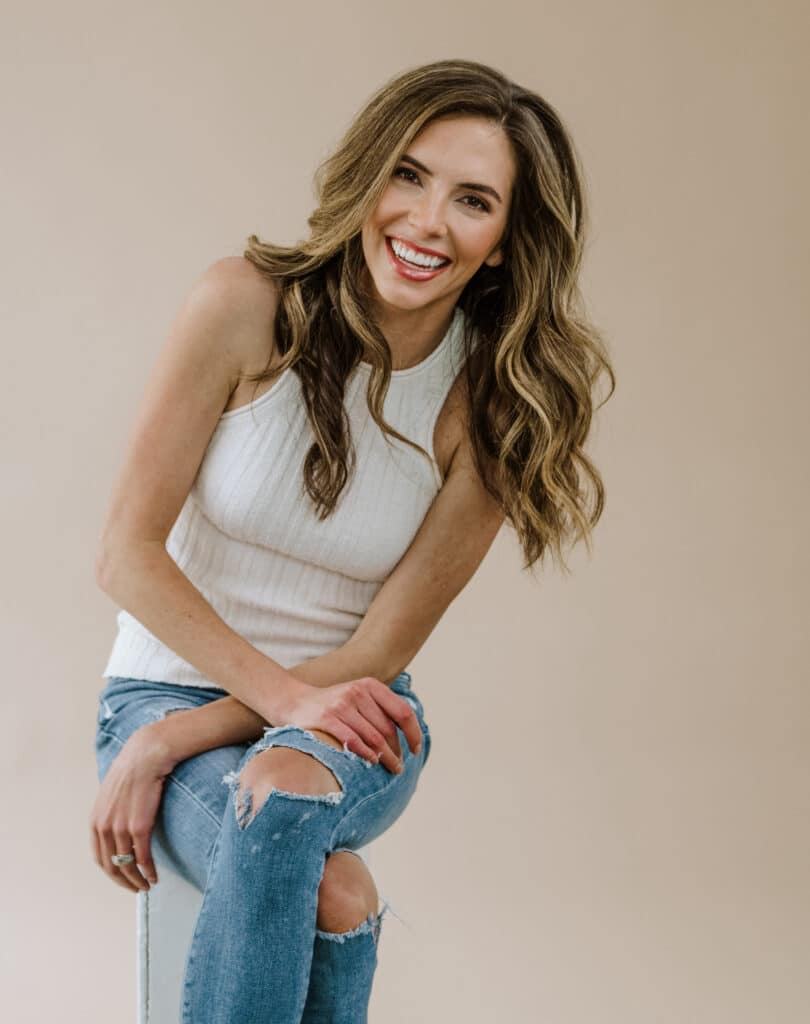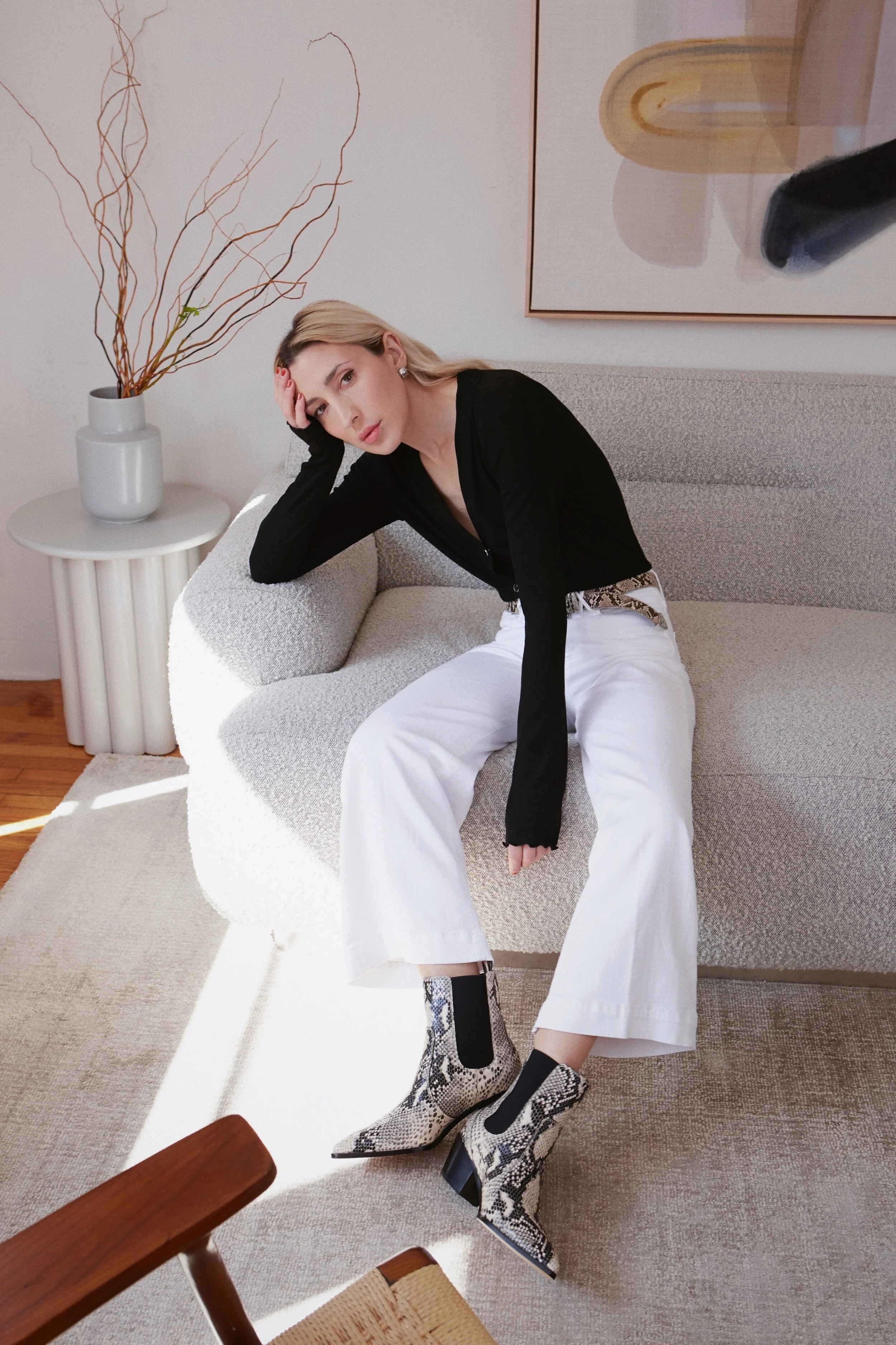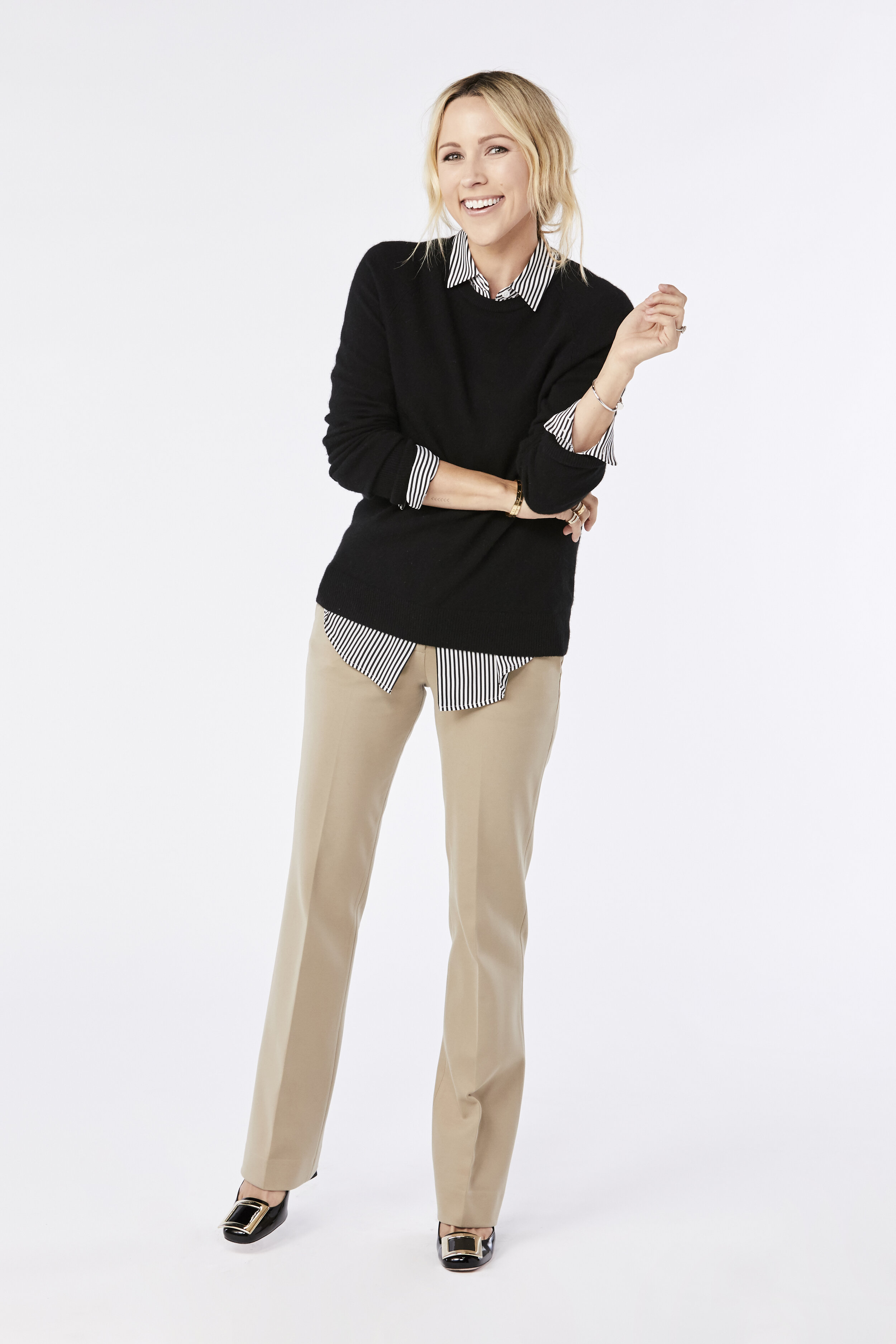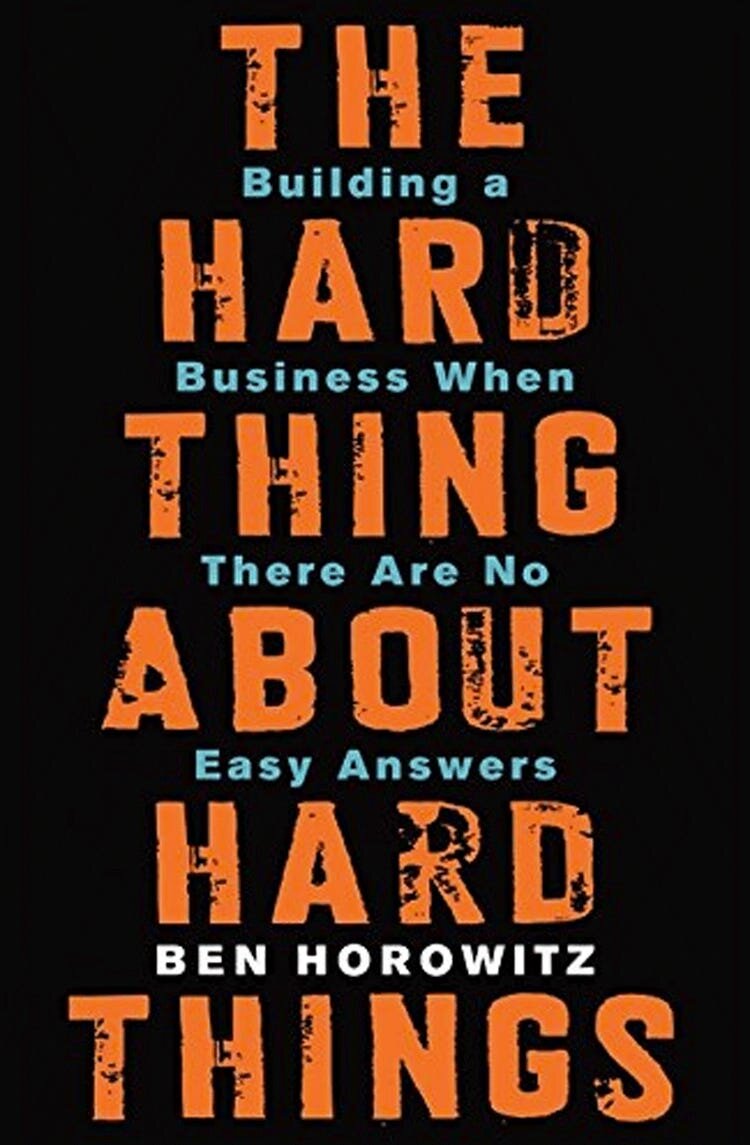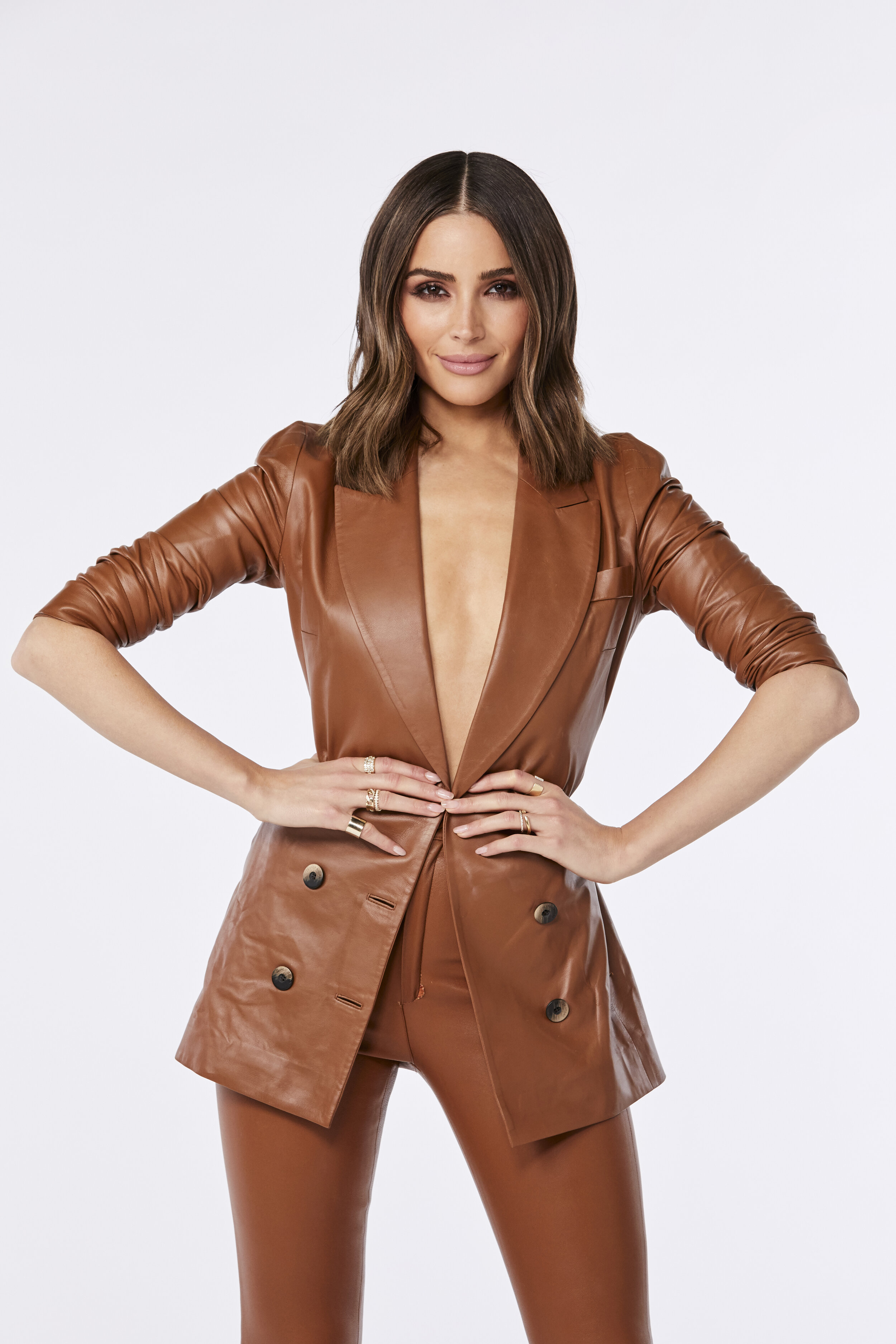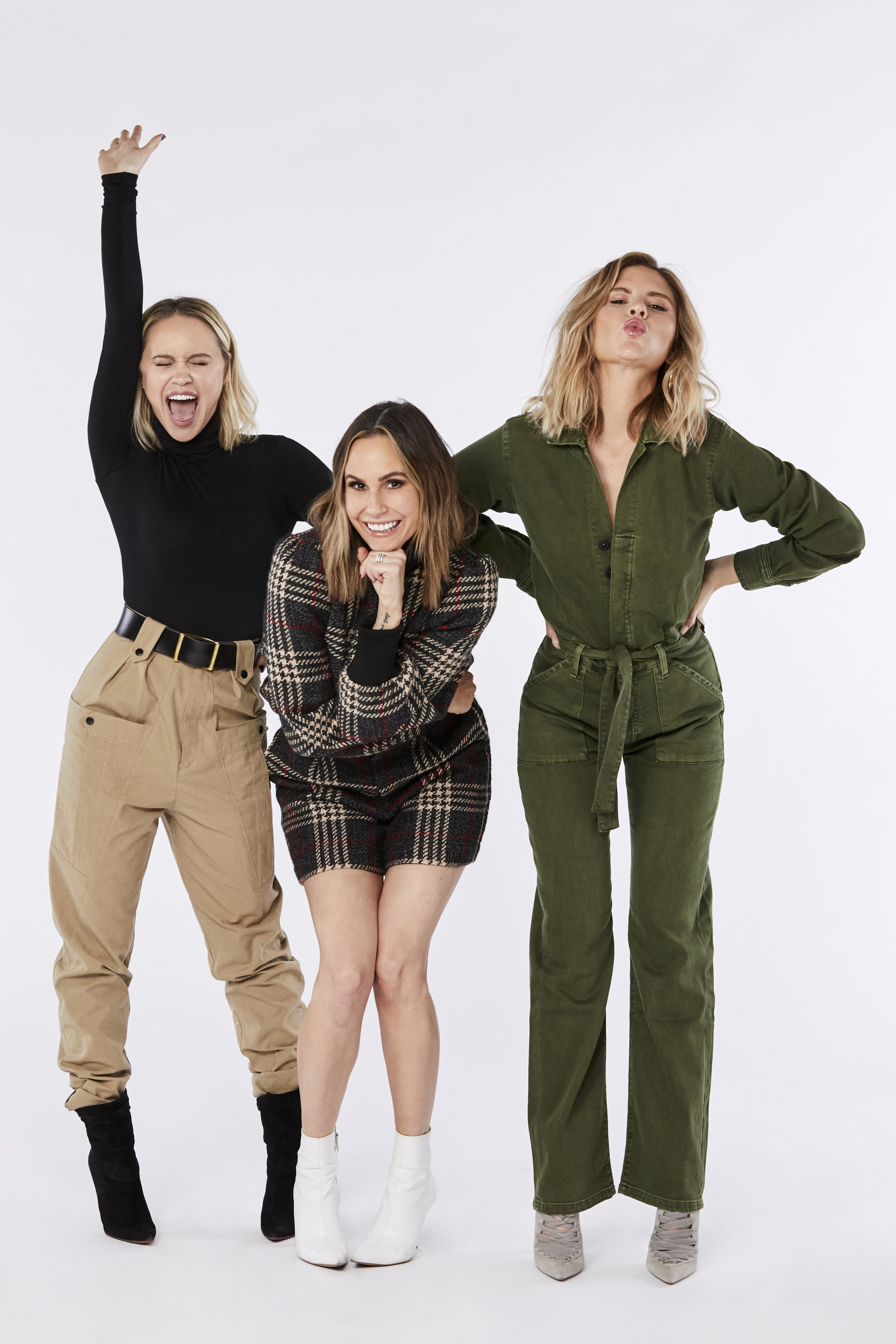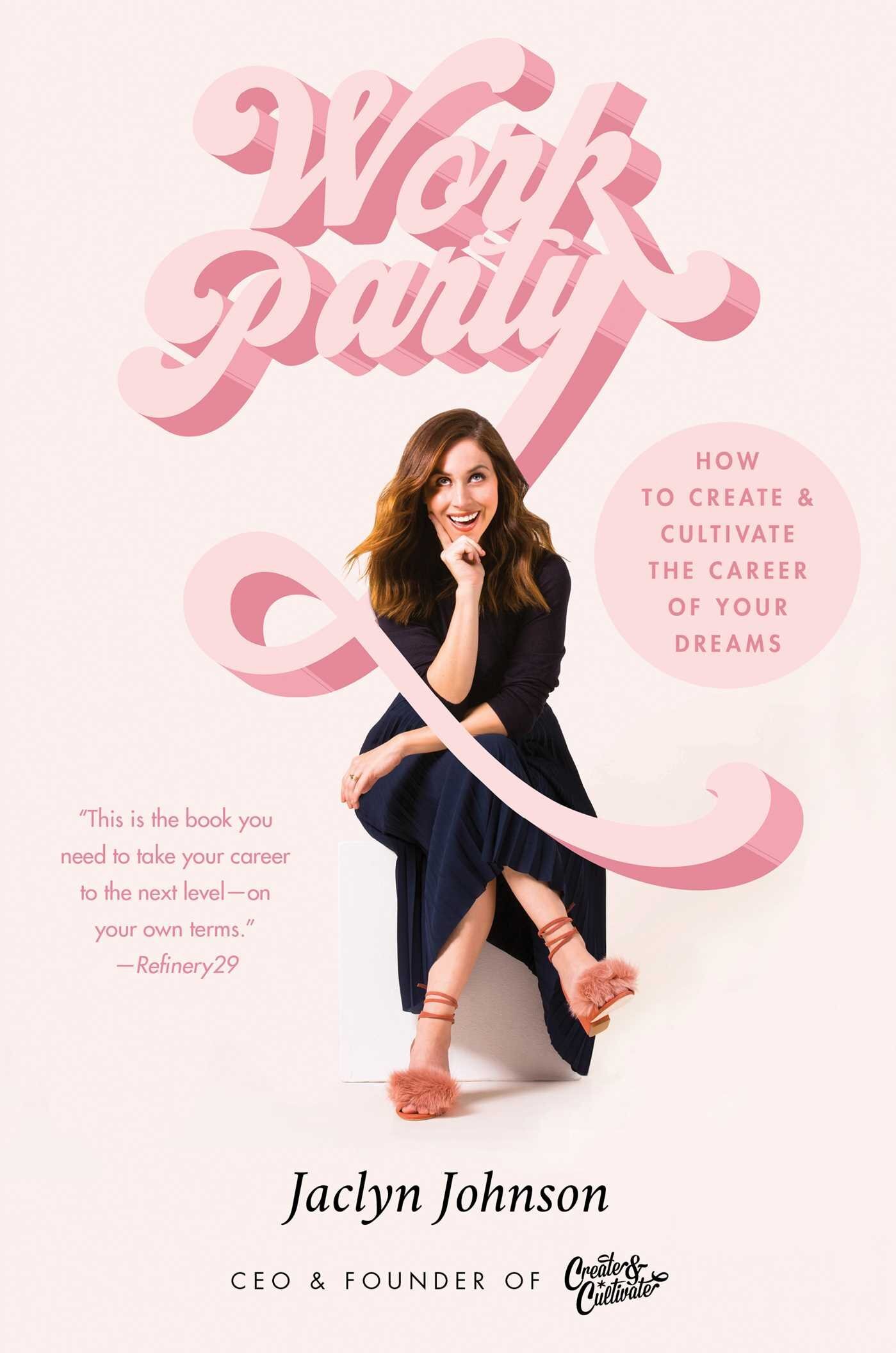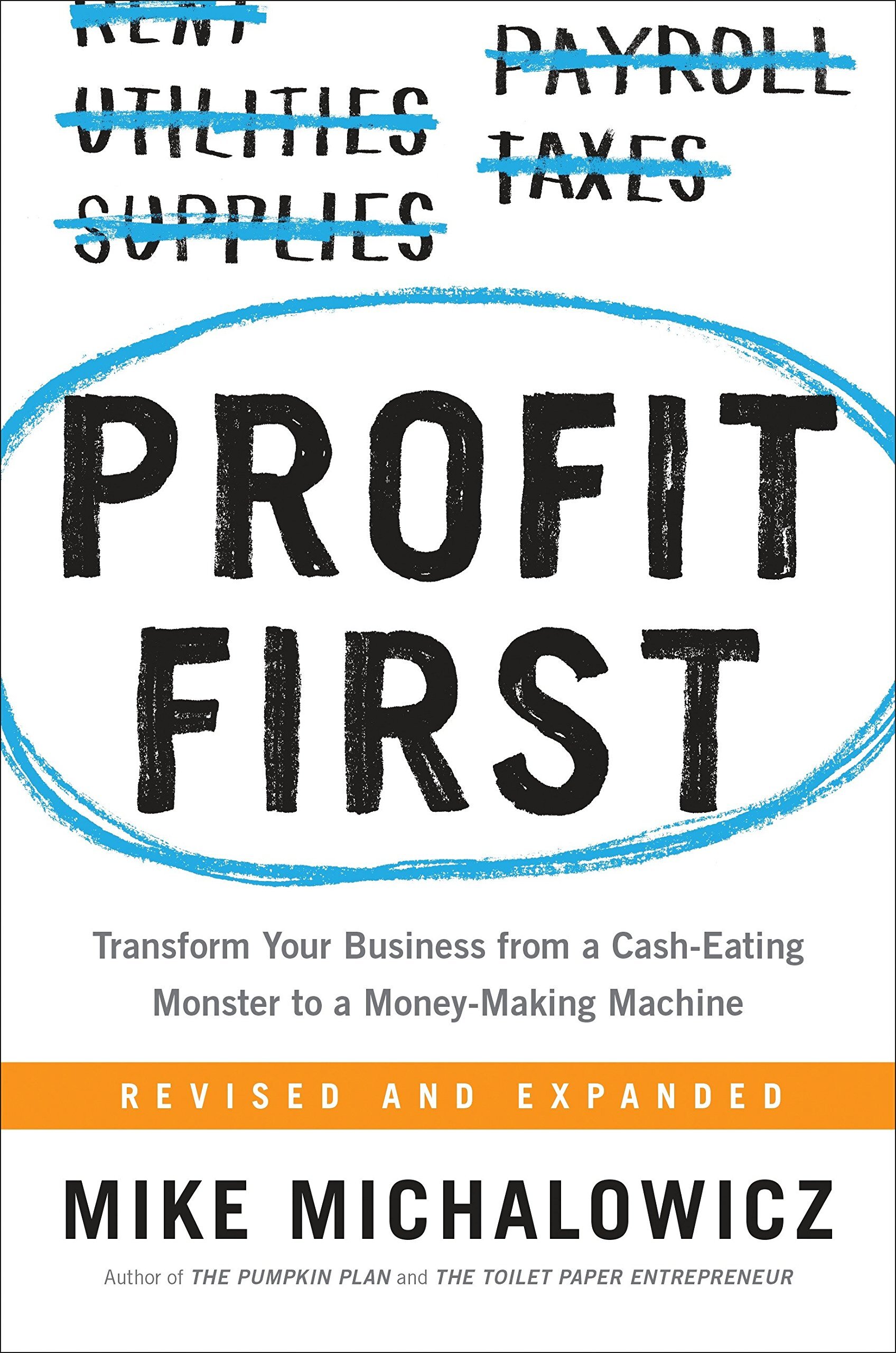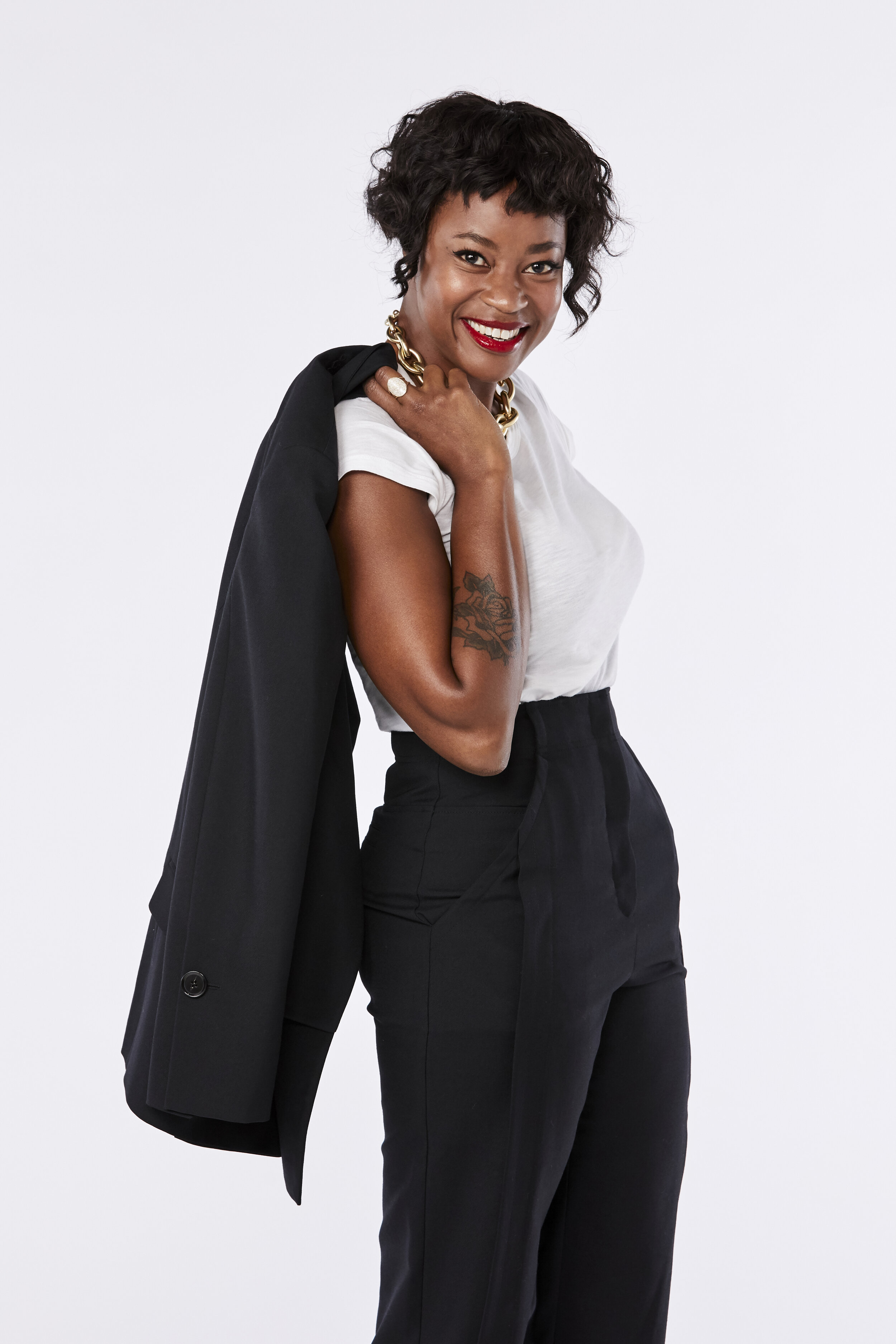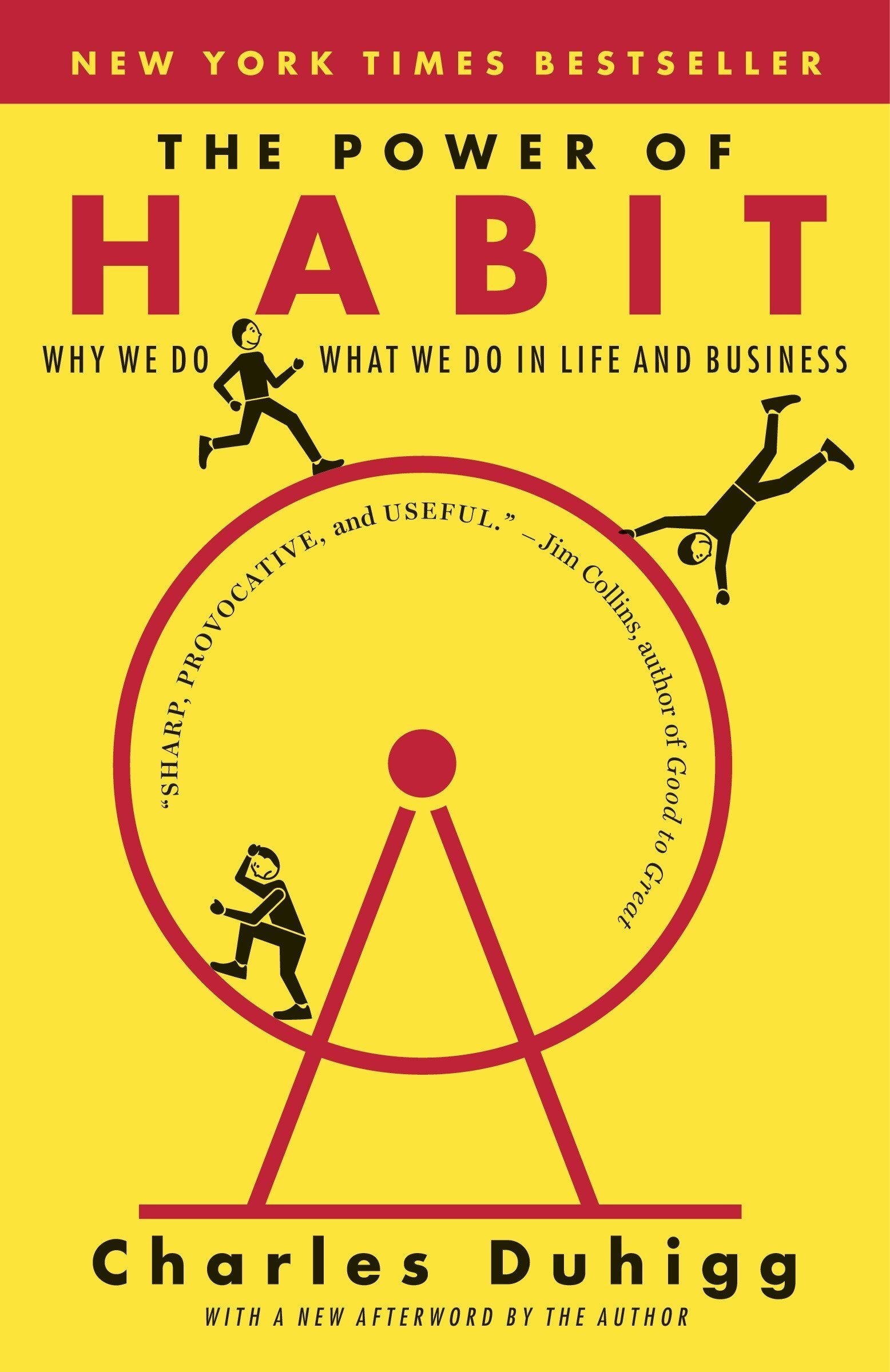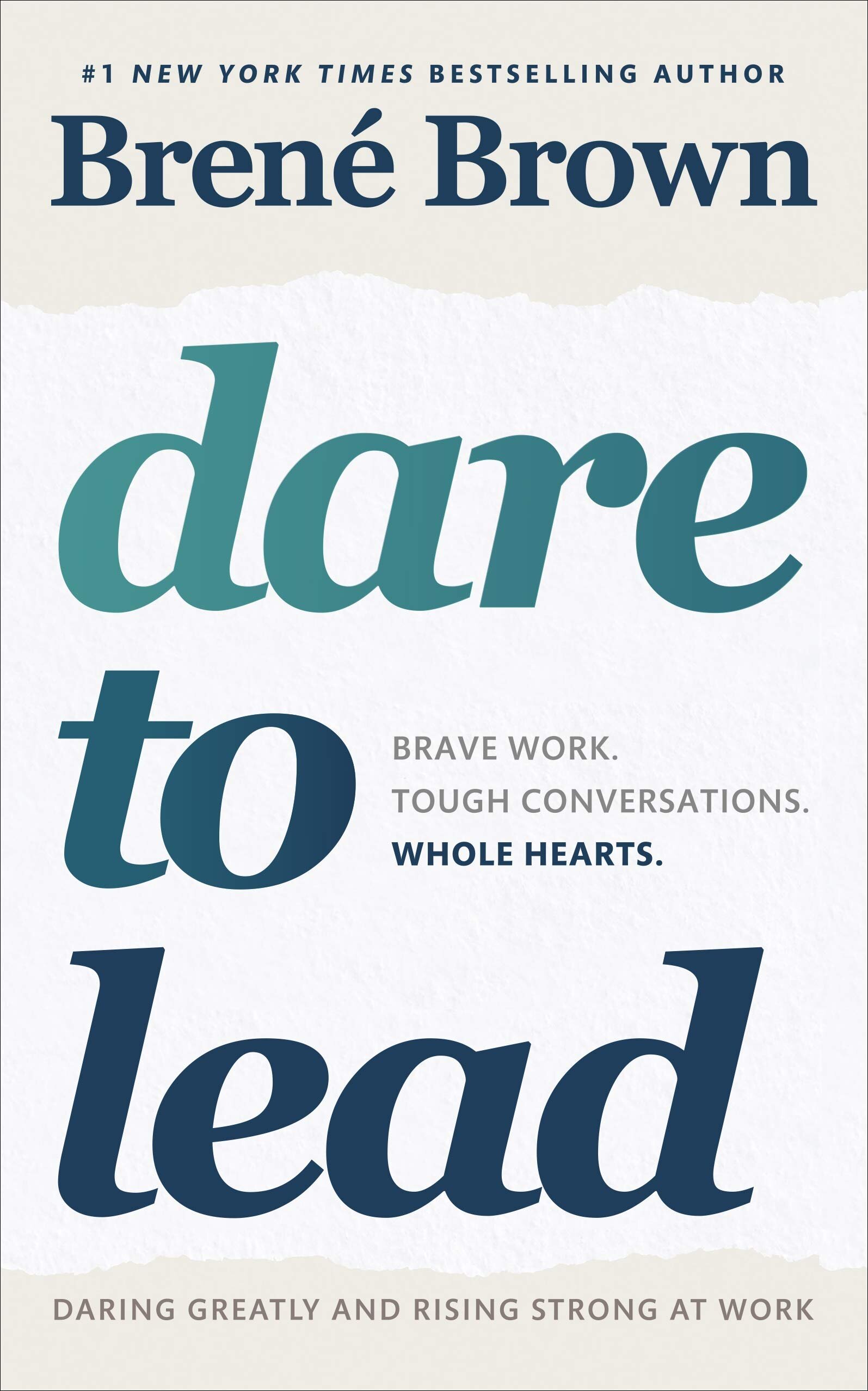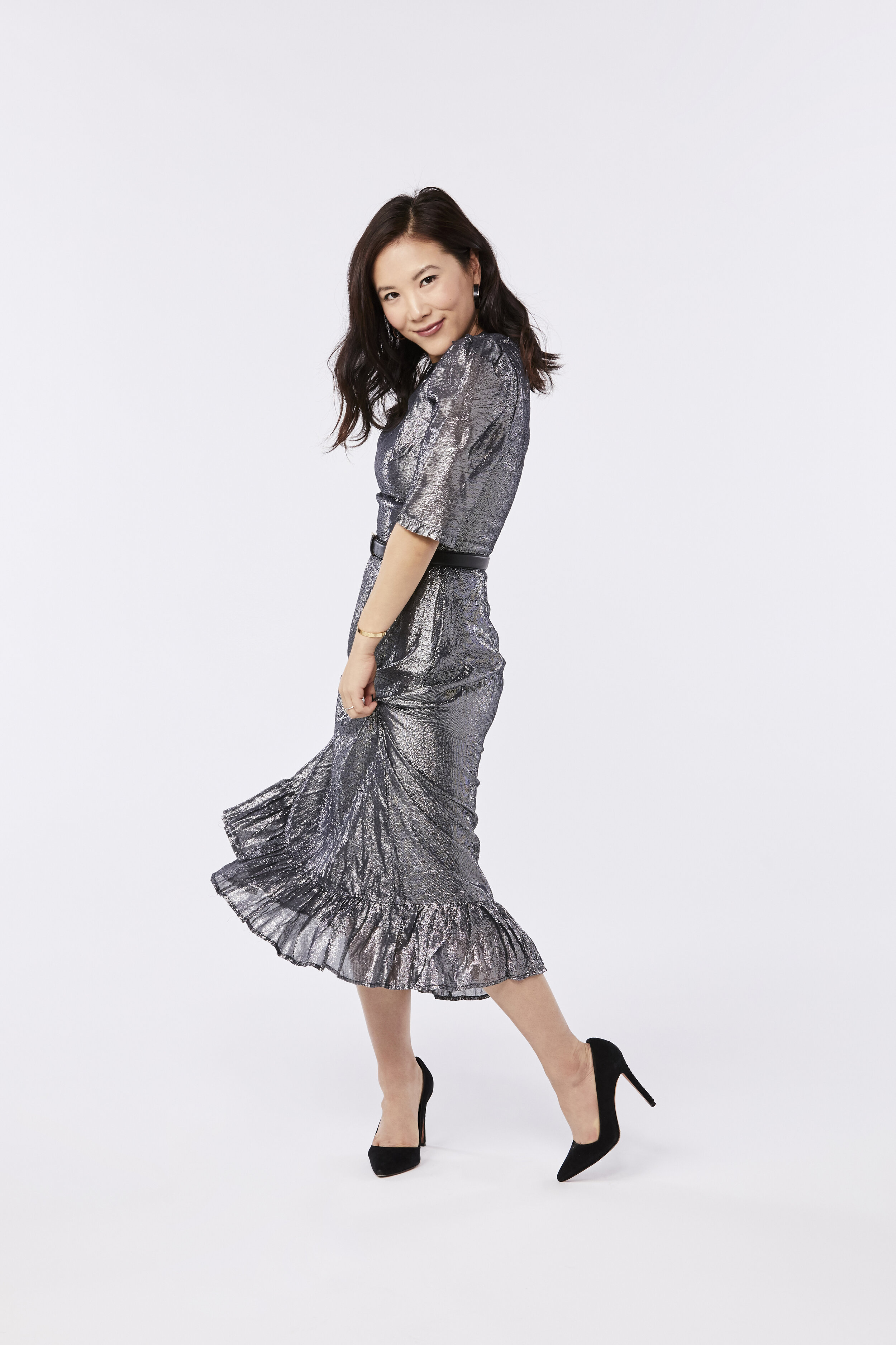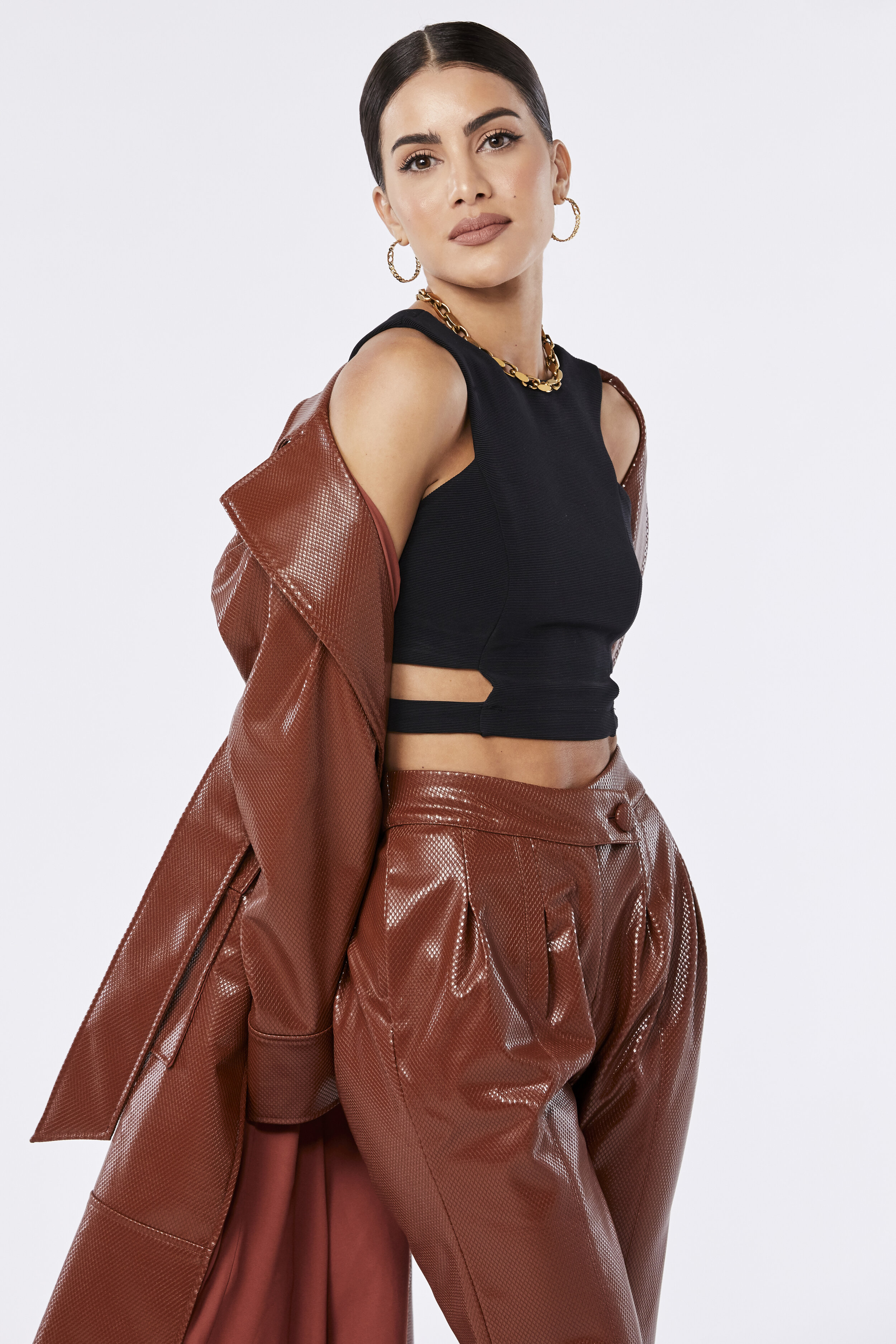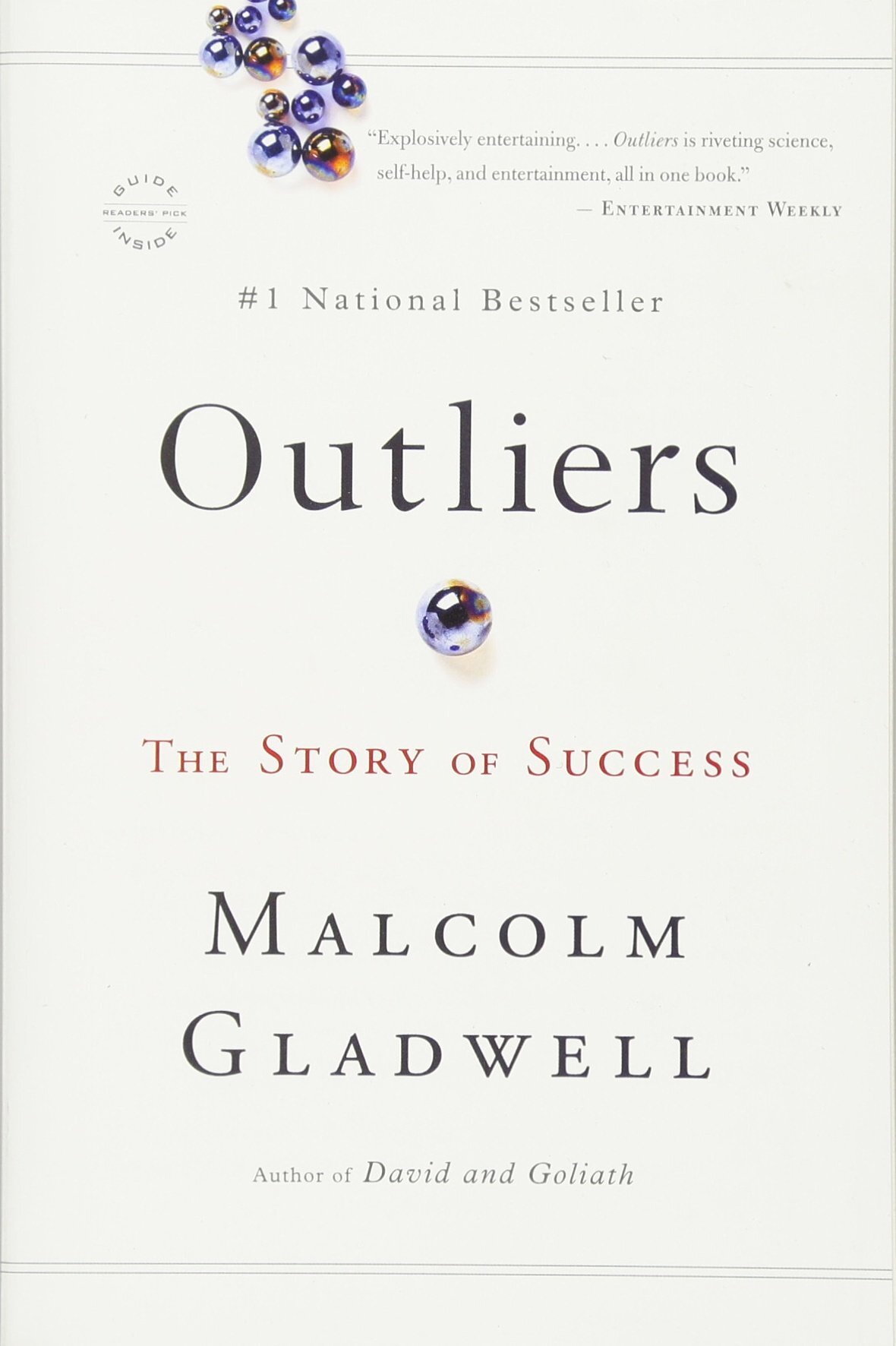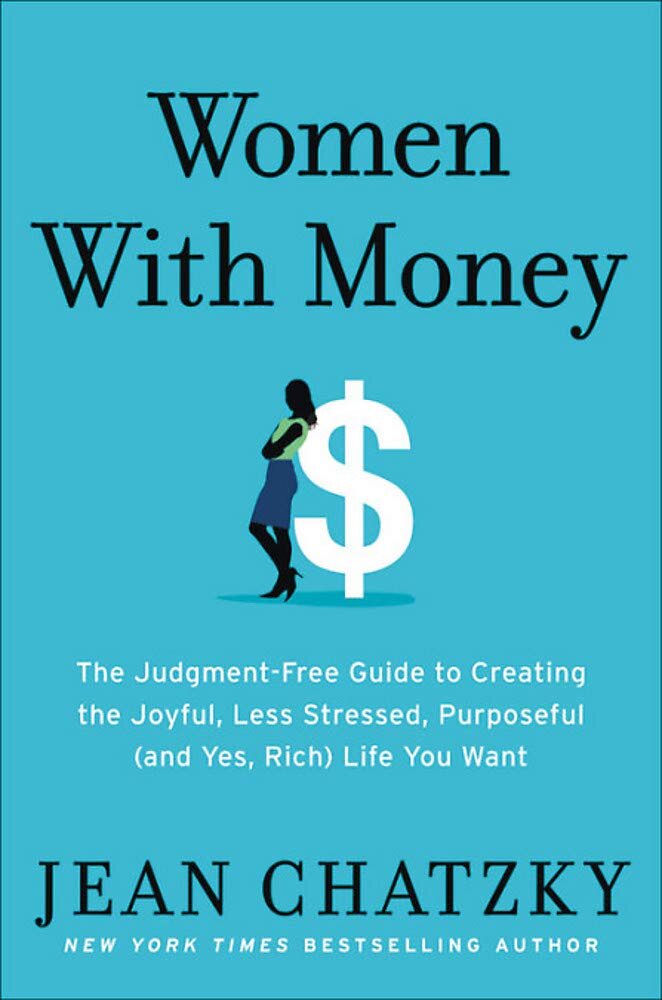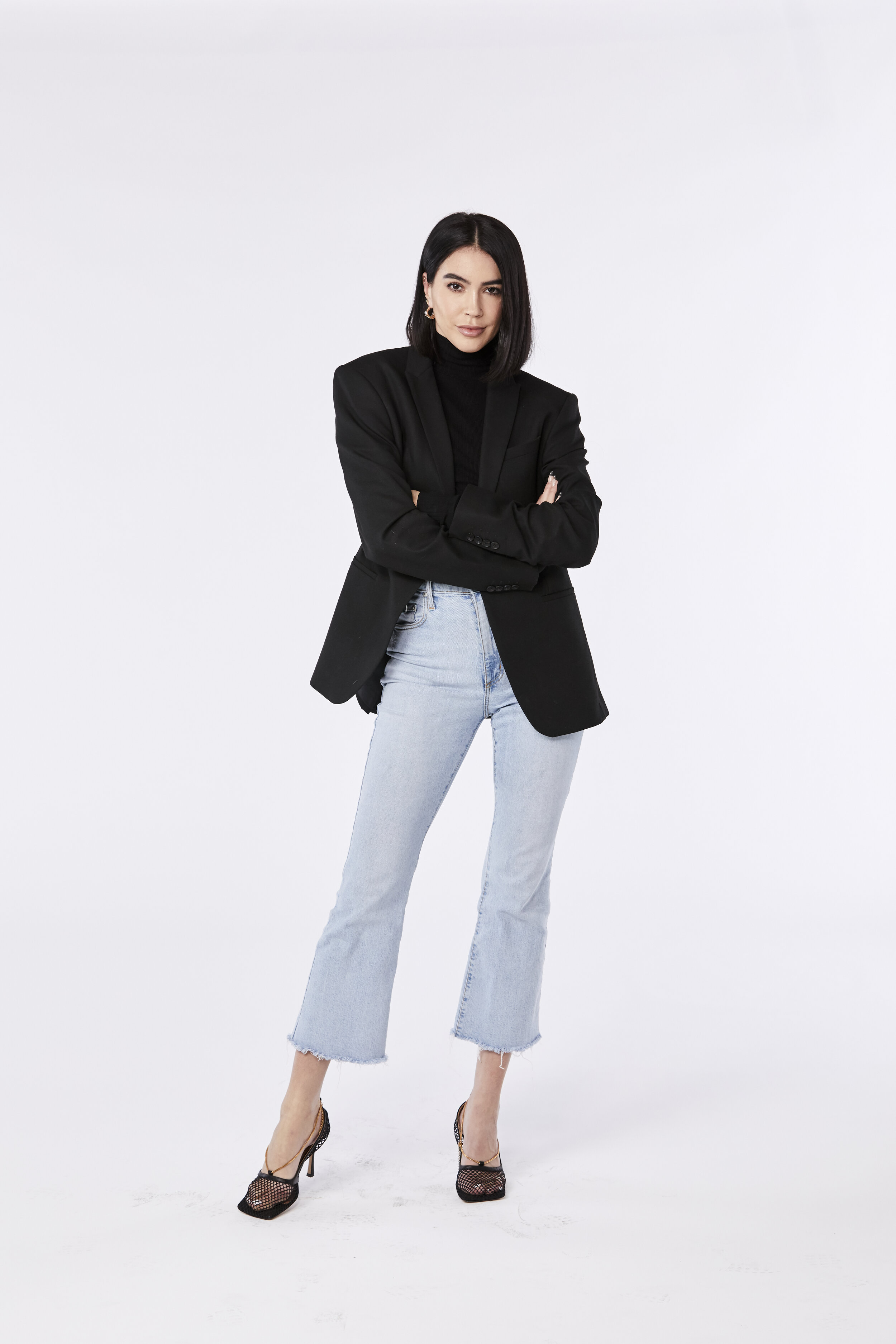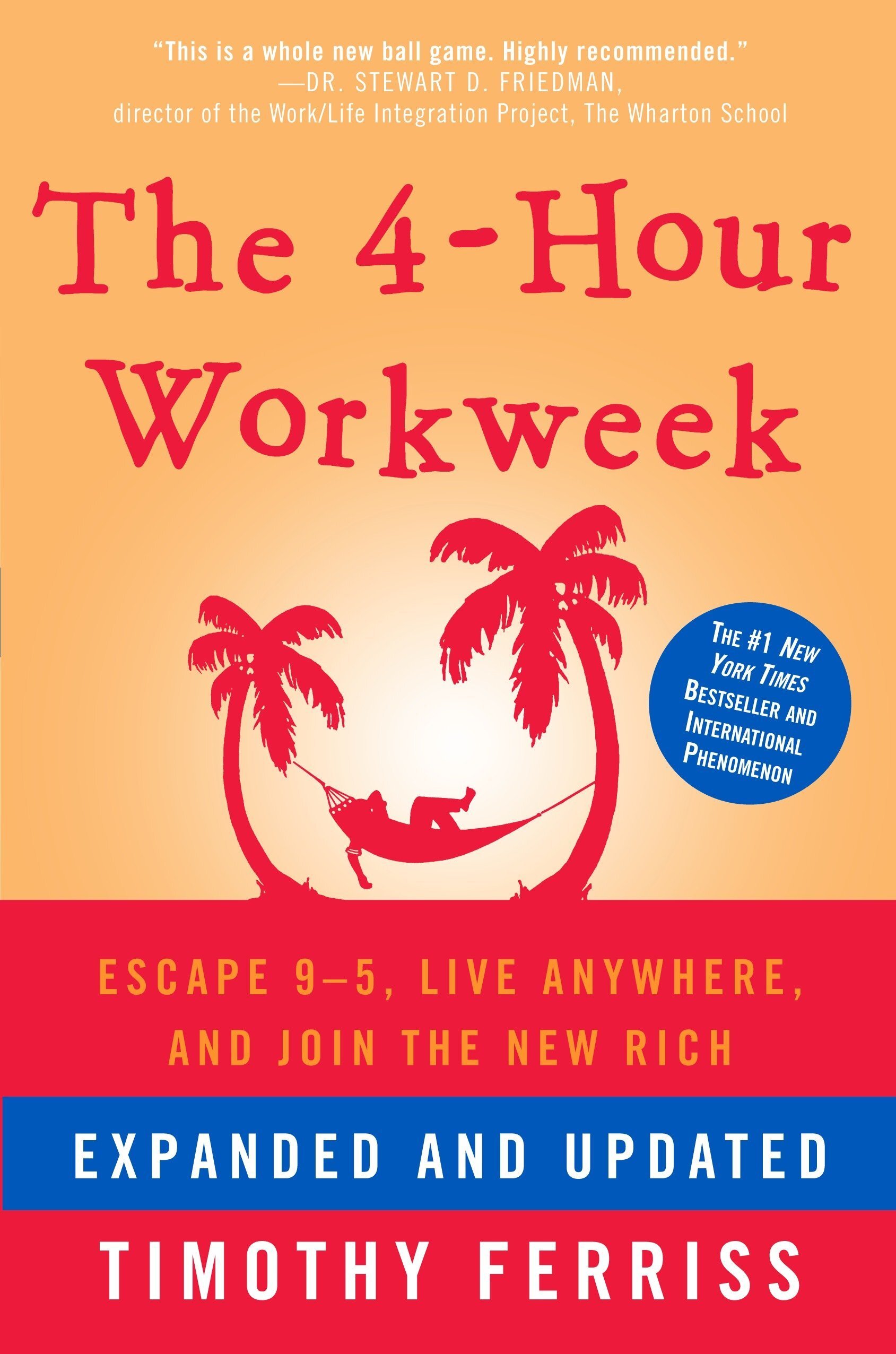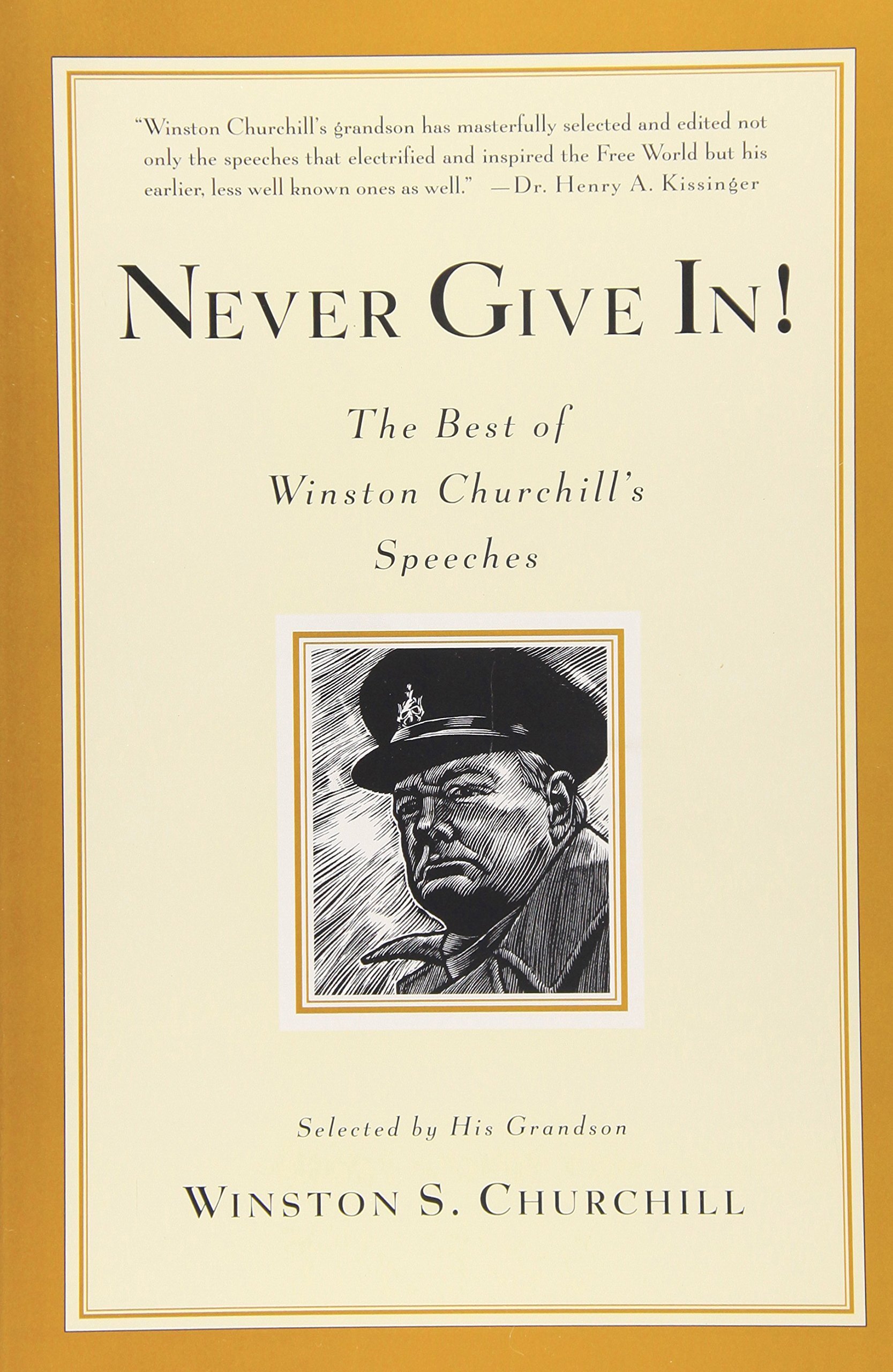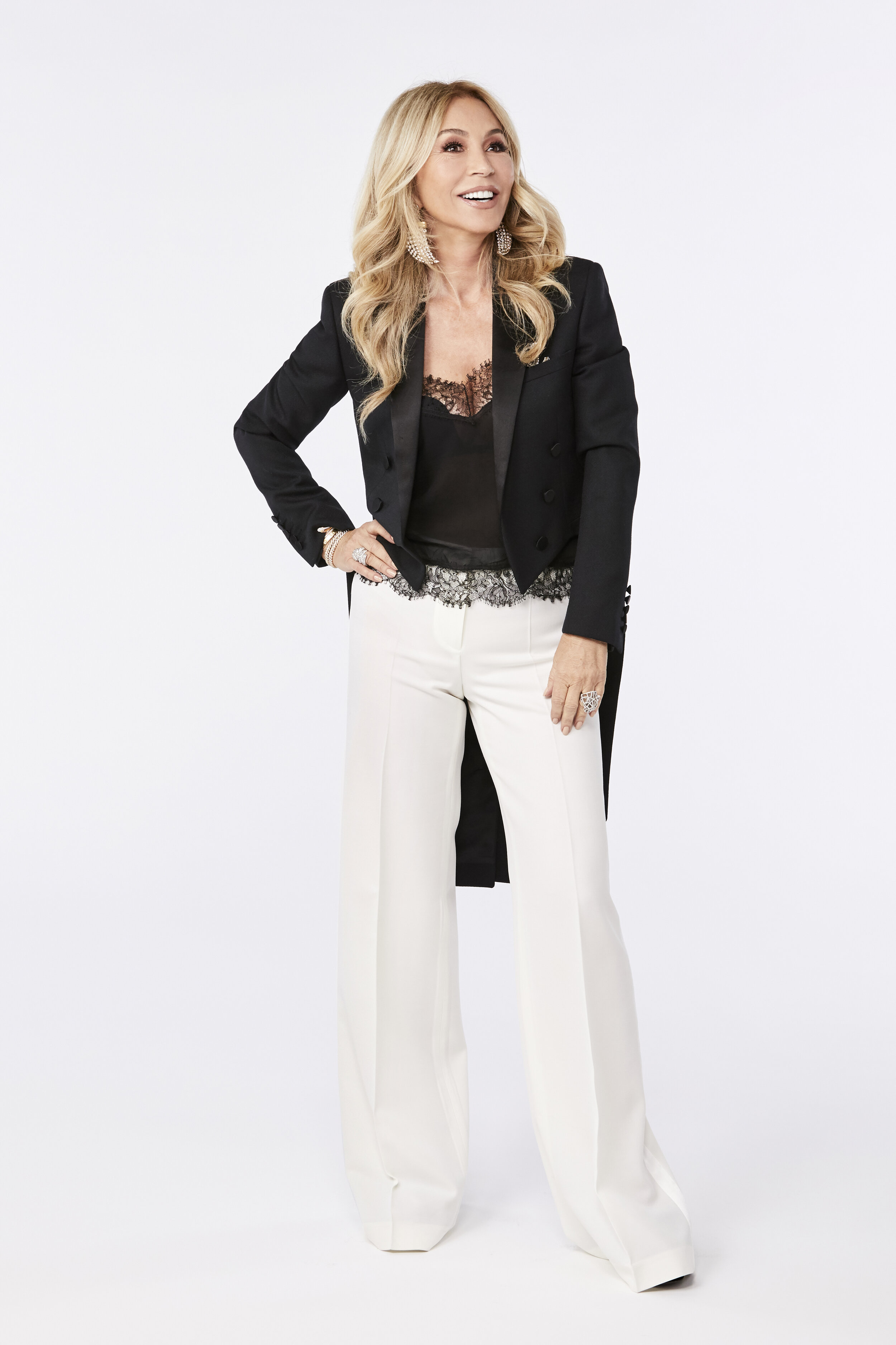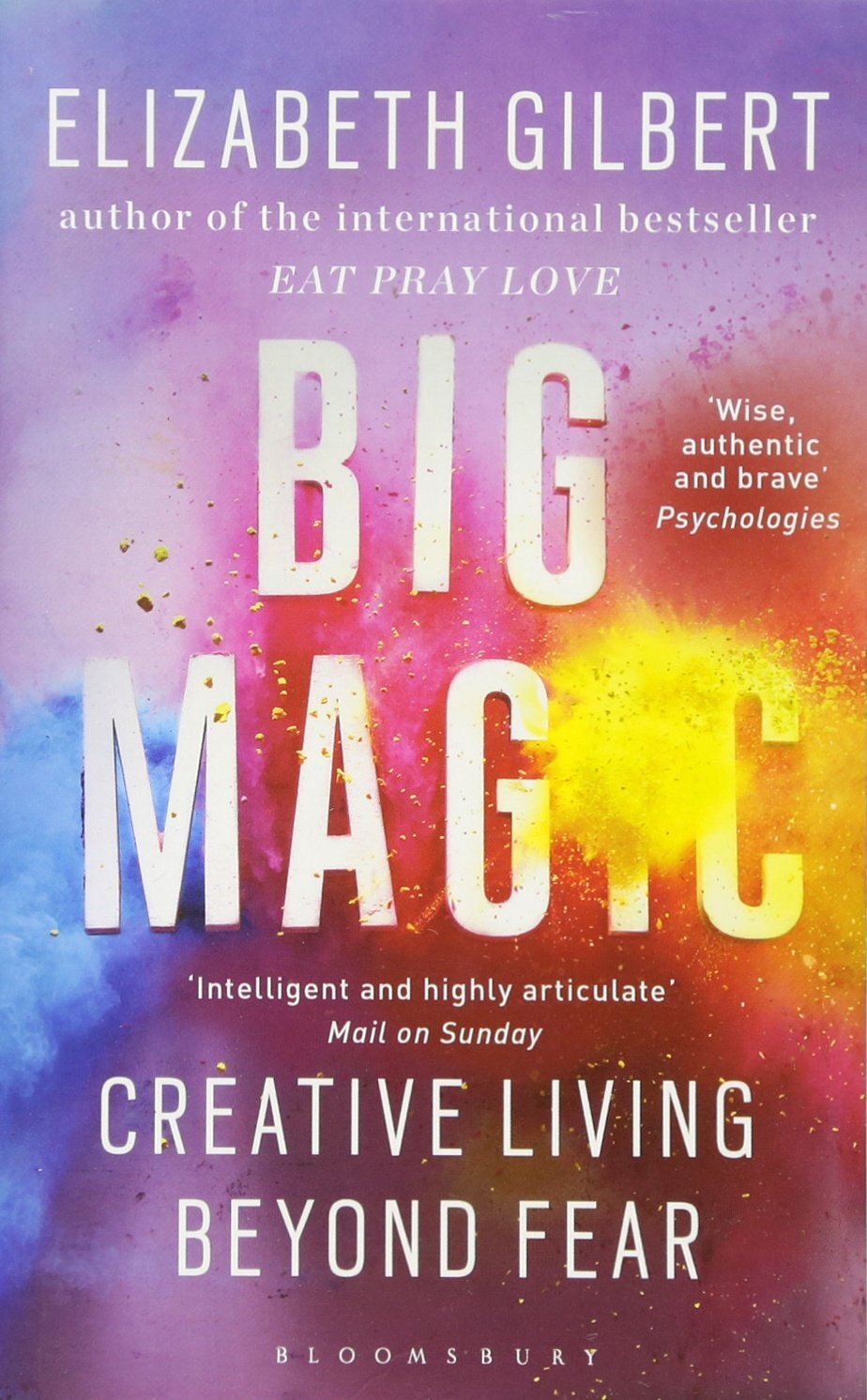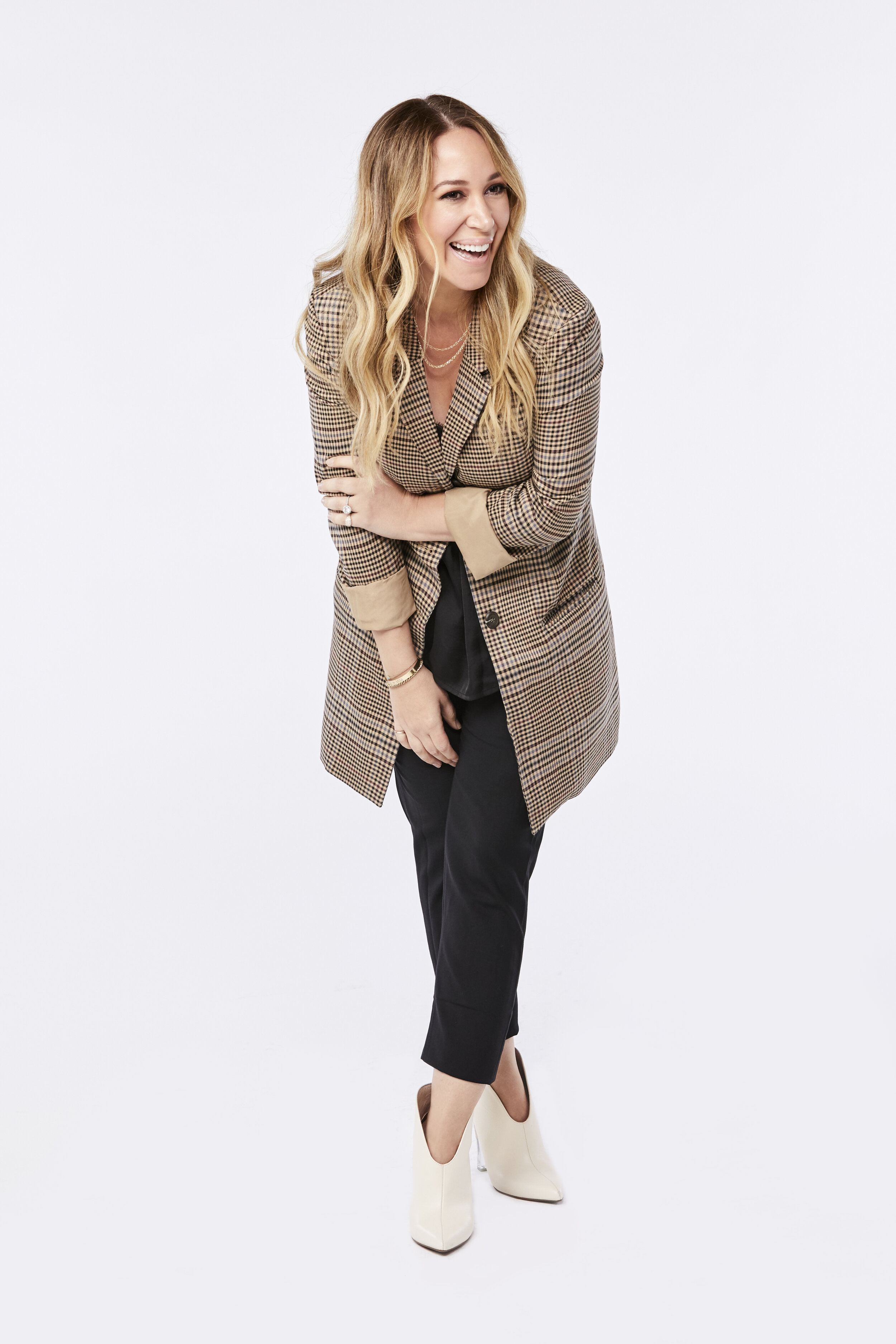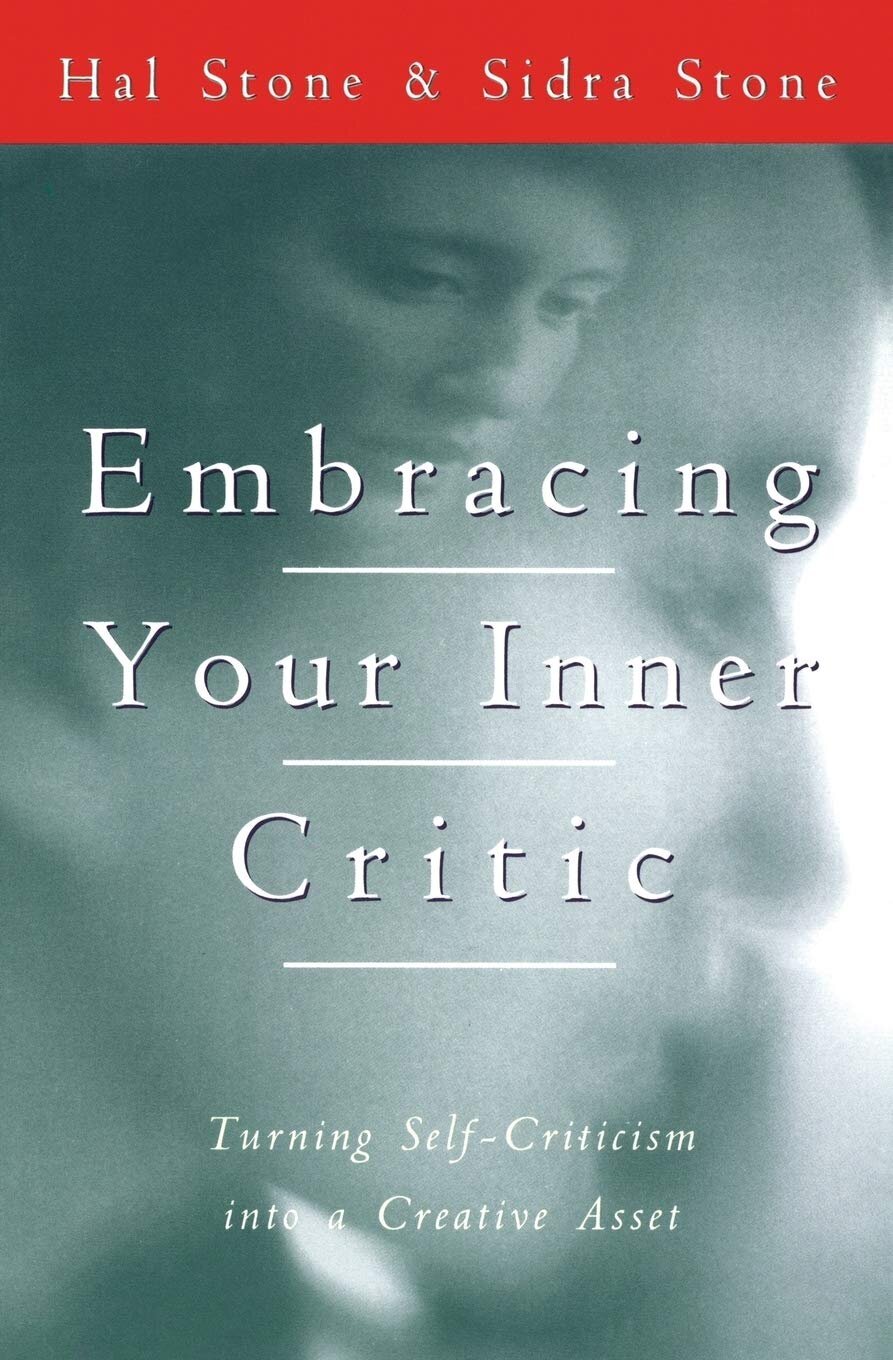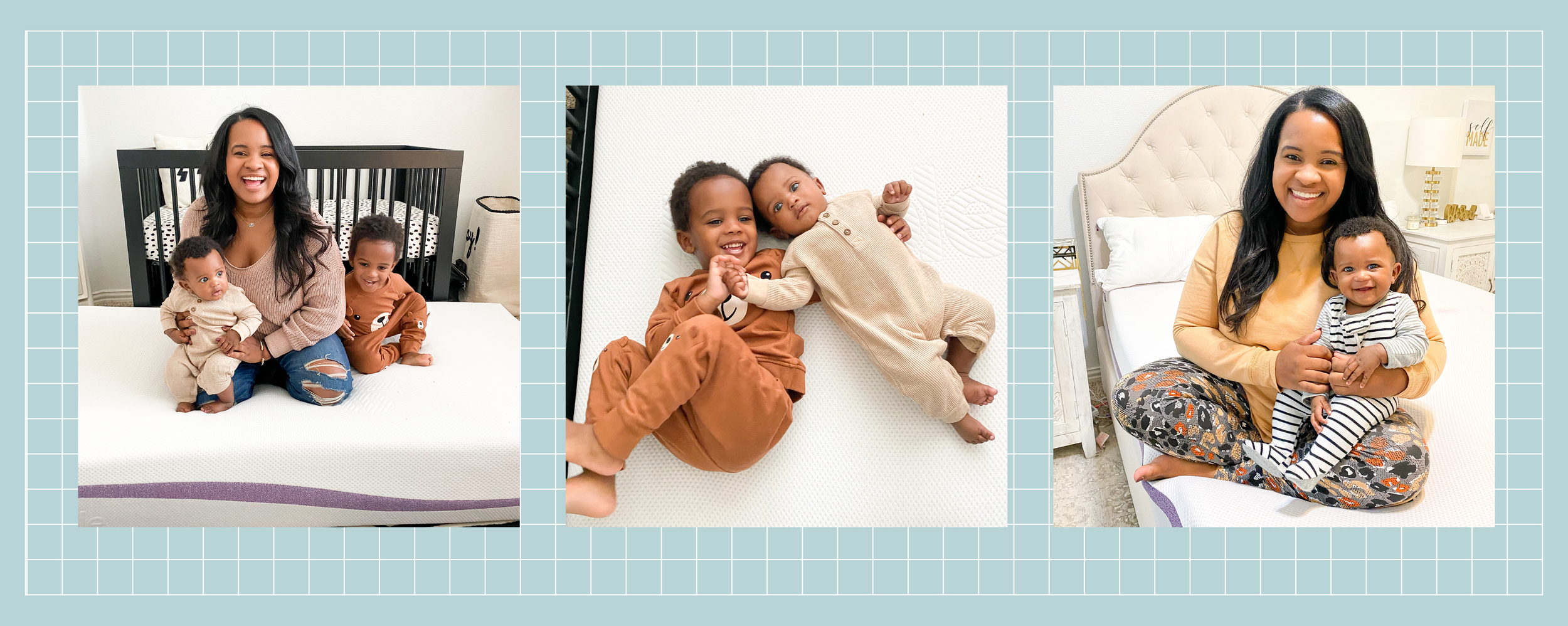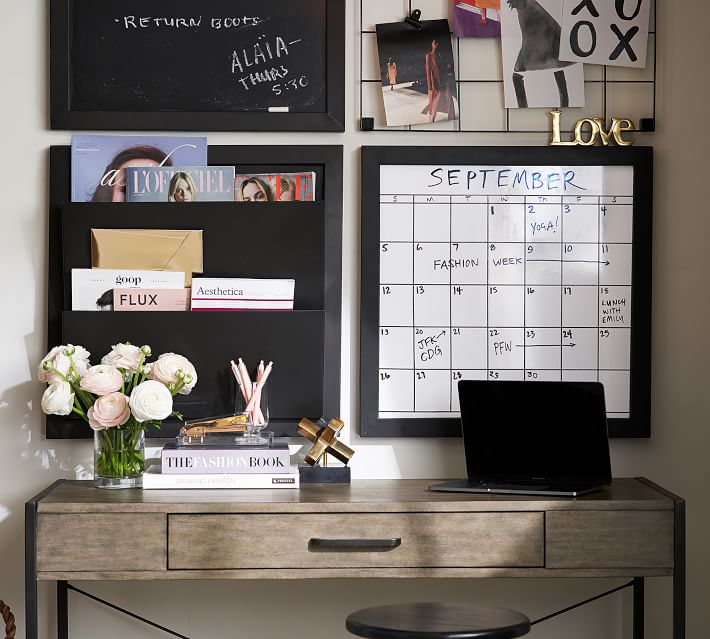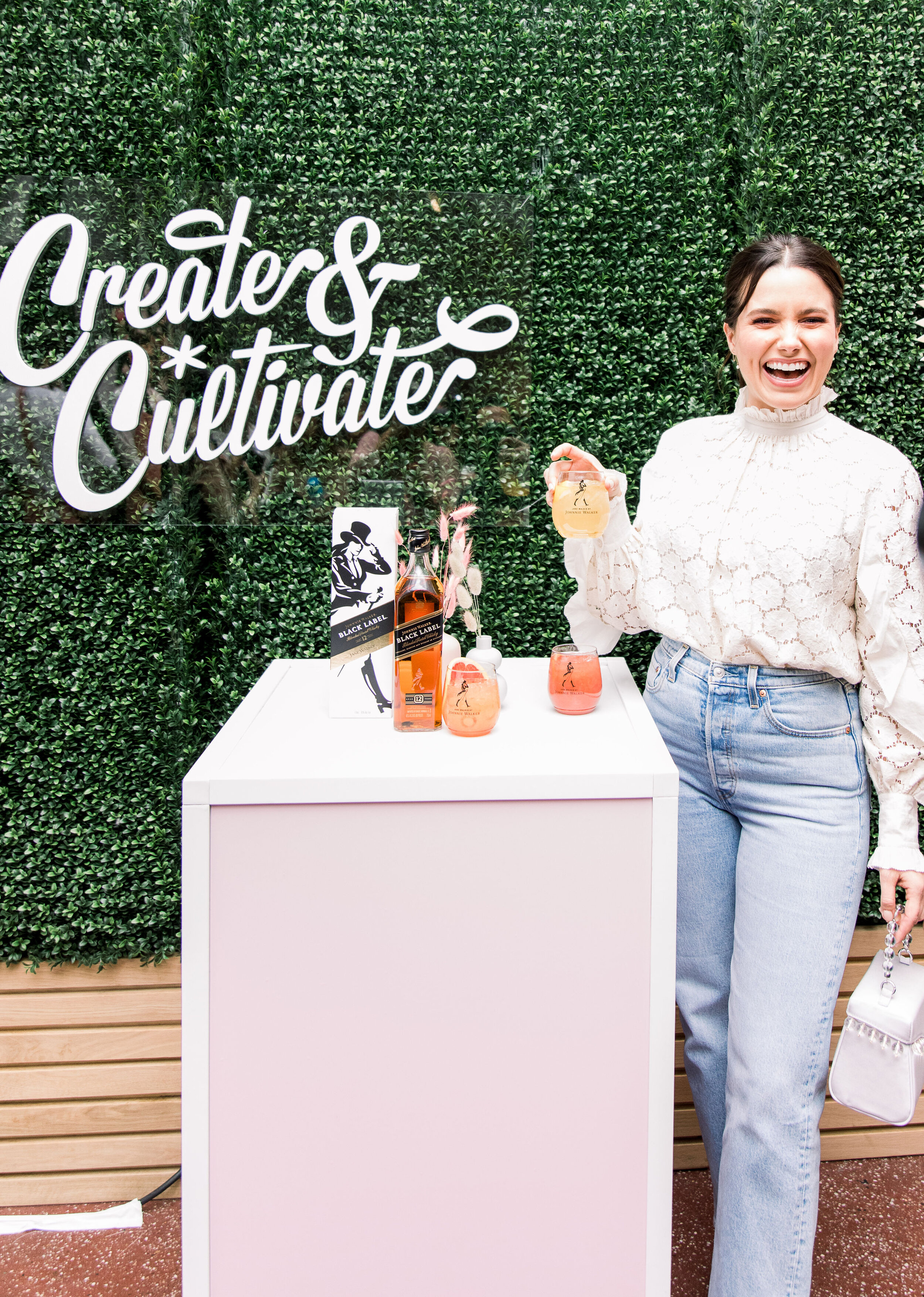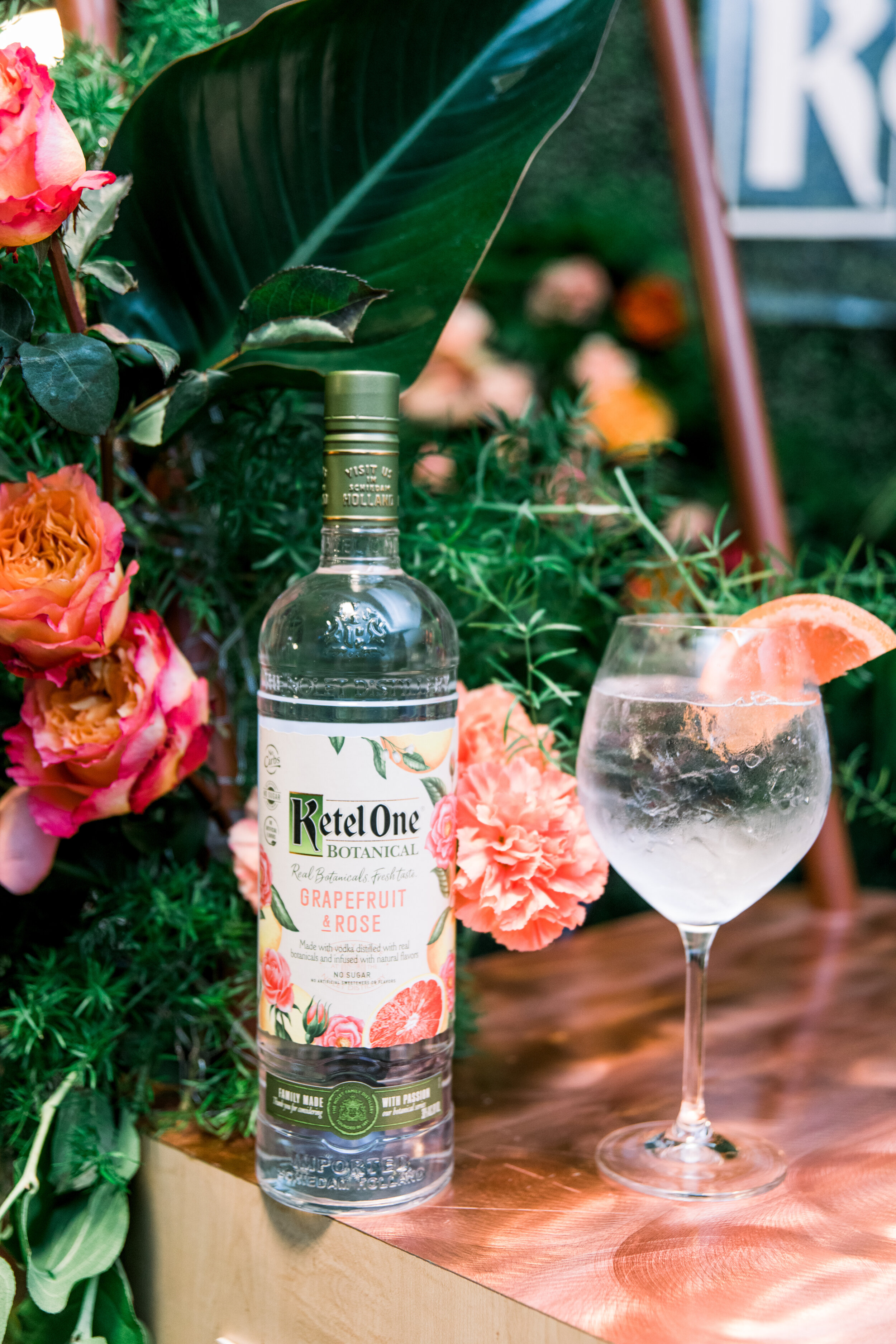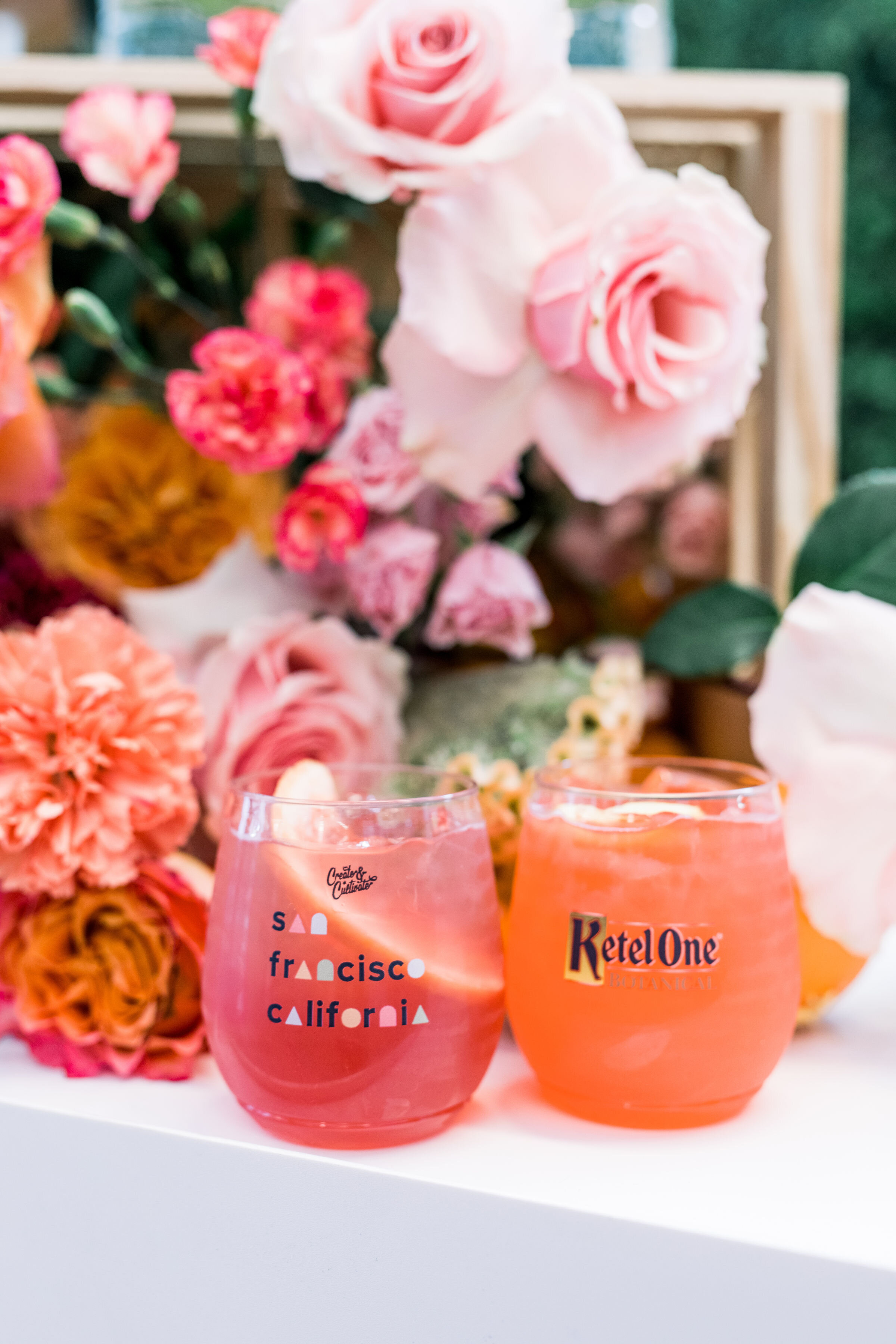I Have Been Working From Home for Years—This Is How to Do It Successfully
“I totally use my phone as a procrastination crutch—it's incredibly helpful to just have it out of sight, out of mind.”
Photo: Lisa Fotios for Pexels
Given that many companies are implementing work-from-home policies to help flatten the curve and prevent the spread of COVID-19 (Create & Cultivate included!), we decided to reach out to some real work from home-office pros to find out how it’s done. Because, as enticing as working from home sounds in theory, it takes a surprising amount of discipline to stay productive and on-task with all the distractions that come with being at home (we’re looking at you, Netflix, pile of laundry, and sink full of dishes).
Ahead, six full-time WFH experts—spanning a senior fashion and beauty editor who’s been working from home for 7 (!) years to an editorial director who’s been working from home for 2 1/2 years to an acclaimed author who’s been working from home for just 8 months—share their tips and tricks for staying motivated and productive while working from home. Keep scrolling to find out how to establish a morning routine that will set you up for success and how to wind down and disconnect at the end of the day.
What time do you wake up? What’s the first thing you do upon waking?
I usually wake up between 6:15 and 6:30 am, depending on how many times I hit the snooze button. It's a habit I'm trying to break, but the first thing I do when I wake up is check my phone. My office's HQ is in New York, so by the time I get up, I've gotten a handful of emails and messages already.
Can you walk us through your morning routine? How does it set you up for a successful and productive workday?
I'll have my morning coffee, turn on NPR to listen to the news, and continue checking my emails and, yes, Instagram. I aim to get to the gym by 7:30 am unless I sign up for an earlier Barry’s or SoulCycle class. Checking my emails and my schedule and fitting in a workout in the morning put me in the best mindset for a successful and productive day. If I don't get a workout in, I'll spend the whole day thinking about how I'm going to squeeze it in later. I feel like it's my way of meditating and having "me" time before what's usually always a busy day.
“When you work from home, it’s easy to just plop onto the couch with your laptop, but I make it a point that the couch and the TV are off-limits during the workday.”
Do you have a dedicated workspace in your home? What helps you stay on task and protect your time from cleaning the house, doing laundry, or running errands while you're WFH?
I do and I think that's really important! When you work from home, it's easy to just plop onto the couch with your laptop, but I make it a point that the couch and the TV are off-limits during the workday. Making a to-do list and a rough schedule keeps me on task, as well as scheduling in breaks because realistically, I'm going to throw some laundry in or pick up some lunch. But as long as I allot myself a small window of time to do those things, then I don't feel guilty about it — it's just part of my schedule.
How do you prevent work burnout? How do you stay motivated and productive throughout the day?
After working from home for 7 years, I still struggle with this. It's really hard to disconnect at the end of the day from work because I work where I live! I really try to make an effort to turn my laptop off and not check my work emails after 6 pm, but I have to say, it's really impossible in the line of work that I'm in. But something I have gotten a lot better at is not working or responding to work emails during the weekend. That has really helped me avoid work burnout.
How do you wind down and log off at the end of the day? How do you separate your work time from your free time?
I make sure my laptop is out of sight! I take my dog for a walk, I cook, I have a nice, phone-free dinner with my husband, I call a friend. Separating work time from your free time is really about making a schedule for yourself and sticking to it, including when to stop working.
Nicole Lesmeister, Writer & Editor
WFH Experience Level: 3 years
What time do you wake up? What’s the first thing you do upon waking?
I wake up around 6:30 am. During this uncertain global situation, I’ve been trying to let myself wake up naturally and get all the sleep I need, but I go to bed around 10:30/11 pm, so my internal clock still gets me up at that time. The first thing I do is (avoid my phone for 30 minutes to an hour) scrape my tongue and do 5-10 minutes of oil pulling to deep cleanse, Ayurveda-style. Wellness truly begins in the mouth!
Can you walk us through your morning routine? How does it set you up for a successful and productive workday?
I then have a tall glass of warm water with lemon, because when you dehydrate overnight, your brain actually shrinks by 20%! Gotta lube up the ol’ noggin. I brew a pot of hibiscus tea or make a matcha if I’m feeling groggy and have a little quiet time with a book or just with my thoughts while I sip it, before I do some movement.
Depending on the day, I might do a HIIT or some yoga. I have a go-to flow, but when I feel like mixing it up, I’ll look up a Yoga With Adriene video on YouTube. She has a ton of really great free videos, and there are always video workouts on ClassPass you can do at home, too!
Moving in the morning is really crucial to me for feeling energized throughout the day and avoiding a wandering mind as soon as I open my computer. It gets the blood pumping and something about a good sweat first thing just makes me feel strong and powerful.
I do some vigorous dry brushing afterwards, hop in the shower, and make a simple breakfast– my favorite is soft scrambled eggs with some sautéed greens like dandelion and kimchi.
“I schedule little breaks, so I try to do a significant amount of work on something before I make an afternoon snack, or go to pilates, take a walk, or run to the grocery store. It’s all scheduled in, so I’m not wandering away from work on a whim.”
Do you have a dedicated workspace in your apartment? What helps you stay on task and protect your time from cleaning the house, doing laundry, or running errands while you're WFH?
I have a desk where I always start work, but after I take a pause for lunch I always find myself rotating to sitting at the higher bar area of my counter. I love the afternoon sun that seat gets; it’s a comfy perch and I feel productive there.
I rely on my daily planner from Oh Deer so much. It’s organized perfectly for me with an objective section, urgent section, list section, notes, and even a little space for doodles (!). I reference my Google calendar to see if I have any calls or meetings scheduled, and make a detailed list here right away, listing them in order from top priority to lowest priority of the day. I do this because I like to make an ambitious list that is still realistic, so if my day doesn’t go as perfectly streamlined as planned (they rarely do, right?) then at least the major objectives are taken care of.
One thing I make sure to do so that I avoid being distracted by errands and house tasks is to add them to my list if I need to do them. I decide what day I can squeeze them into or what day it makes the most sense, and stick to a day and time that I do them.
How do you prevent work burnout? How do you stay motivated and productive throughout the day?
I set tiny goals for myself, or little deadlines throughout the day. Like, “Let’s do a chunk of this client until noon, and get it done” (or a ¼ of the way done, depending on the project size and deadline, etc). I also schedule little breaks, so I try to be done with something or do a significant amount of work with something before I make an afternoon snack, or go to pilates, take a walk, or run to the grocery store. It’s all scheduled in, so I’m not wandering away from work on a whim.
I also cut myself off from working too late if I have a day in which I start work early, which is ideally most days. When you WFH, it’s easy to feel like you work a 15 hour day when you don’t account for or schedule in the typical distractions… but even in an office no one works eight full hours. About five true, solid, productive hours a day is typical for the average human.
If I have a deadline that day, I might work a little later, but essentially I give myself a cut-off time to make dinner and that lights a fire under my own a$$ to get what I need done at a decent time (5 or 6 pm) so I’m not burning out my retinas with blue light into the evening. No one is producing pure gold after dilly-dallying on their computer all day and into the evening anyway. My clients deserve my best self.
How do you wind down and log off at the end of the day? How do you separate your work time from your free time?
Carving out that cut-off time to prepare a nutritious but thoughtfully tasty meal is my ultimate act of self-care (and love language to my S.O.). It’s meditative, resetting, and gives me unwind time after to rest and digest so I can sleep well and be productive again the next day! Sometimes I’ll start my to-do list for the next day in my planner if I’m feeling juiced about it, but most often I just prep the kitchen for the next morning, set out my tea, fill the kettle. Stuff like that.
Depending on the intensity of the movement I did in the morning, I’ll usually try to take a little walk after dinner or some light stretching or foam rolling. Being a writer requires a lot of sitting, so making sure I move my body in intervals throughout the day keeps me from feeling tight and weighed down by my own poor posture (lol working on it) and gravity.
Because my S.O. and I have our shows we like to watch together for some cuddle time on the couch, I always make sure to read a little before bed in some warm light. Gotta allow the eyeballs some non-screen time so that my circadian clock can recalibrate! About 30-40 minutes is lovely, but sometimes it only takes me 15 to drift off.
Kelly Dawson, Freelance Writer and Editor & Editorial Director, Semihandmade
WFH Experience Level: 2 1/2 years
What time do you wake up? What’s the first thing you do upon waking?
I wake up around 7:00 am. My alarm is on my phone, which has been a habit I've been meaning to break for a while. But I do keep my phone on the opposite wall, away from my bed, so I have to get up to turn the alarm off. The first thing I do when I wake up is open my blinds, open the window, breathe in the fresh air, and make my bed. Yes, I make my bed every morning, and I do think it helps me start the day on a good note.
Can you walk us through your morning routine? How does it set you up for a successful and productive workday?
Ideally, my morning routine goes like this: I have breakfast, which is shorthand for I drink a strong cup of coffee with food. I watch a few minutes of CBS This Morning while I eat, change, and then do about a half-hour or so of stretches, weights, or cardio—I alternate the days to make it more fun. After that I get dressed, which is always an interesting topic for people who work from home. I know that it's usually perfectly fine if I wear sweatpants, but for the most part, I pick out an outfit, do my hair, and maybe put on makeup. It's nothing that doesn't take 10 minutes or so. I find that if I don't get dressed, I'm not as focused.
Do you have a dedicated workspace in your home? What helps you stay on task and protect your time from cleaning the house, doing laundry, or running errands while you're WFH?
I have a desk that I work at every day, and I work between 8:30 am and 6:30 pm, give or take. I think the thing that really helps me stay on task is a day planner. Every night before shutting work down I write a to-do list of all the things I need to accomplish for the next day, and I split it into columns. The left side is for the big stuff I have to do—write a story, do an interview, whatever—and the right side is for all the smaller things to get out of the way, like emails to send. I do the hardest ones on the list first, while the caffeine is still flowing, and then move on to the easier ones. I try to keep the list reasonable so that I don't feel panicked about completing everything. And to be fair to myself, whatever doesn't get done carries on to the next day. The goal is to keep from scrambling on Friday, which thankfully hasn't happened yet. I should say that most of my work-from-home schedule is on a weekly basis, which is why I can play with things a little.
As for email, I only check it at the start of the day, before lunch, and then right before I close up shop. I usually pretend I don't have a TV after breakfast, and I keep my phone either off or out of sight unless I'm using it for work. If I didn't do this it would be a slippery slope into Bravo and Instagram binges.
I don't necessarily think it's a bad thing to do laundry at home during "work hours" if you can swing it. I sometimes use it as a great gauge of time. For instance, like most people, my inbox is a never-ending black hole of notifications. But, I know that my washer takes about an hour to do a standard load. So that's how much time I give to answering emails before throwing things in the dryer and moving on to actual work. The same thing goes for cleaning and errands. If I'm stuck on something, I clean for a bit, run a fast errand, or go for a quick walk. That helps me think things through without staring blankly at my computer or scrolling some site. I still do that, I'm not a robot, but I try to be very aware of how I spend my time.
When you're in charge of your own work schedule, you can—and should—be flexible. But that flexibility has to have boundaries so that you don't get distracted. If you're more of a morning person, then get up earlier: It'll mean every afternoon can feel like a weekend. If you're more of a night owl, sleep in: It'll mean you can have slower mornings. But tell yourself that you're working, you're not just hanging out at home, and you need to plan accordingly. Of course, I'm saying all of this without children to worry about, which will obviously add a layer of complication to everything. As far as my universal advice goes, just try to be kind to yourself as you figure it out, and do your best to be intentional. I started my work-from-home life as a morning person, spent some time as a night owl, and now I'm in the middle. There are some days that completely get off track, and that's fine too. You'll get back on track tomorrow.
“The thing that has really helped me successfully work from home, minus a day planner, is my community of office and freelance friends. I check in with them daily, and we either tackle a work problem together or just send funny things to each other. ”
How do you prevent work burnout? How do you stay motivated and productive throughout the day?
The thing that has really helped me successfully work from home, minus a day planner, is my community of office and freelance friends. I check in with them daily, and we either tackle a work problem together or just send funny things to each other. That helps me feel like I'm not in a little bubble, even if the messages come in little bubbles. On the good days, I'm motivated and productive because I'm really into the work I'm doing and it's all coming together. On the bad days, I motivate myself with things like, "Ok, if I finish this task then I can have some candy or read the new magazine that came in the mail." There's also something to be said about not checking something off my to-do list. Only I would know, but that's enough of a motivator for my type-A personality. If you need someone to hold you accountable, my community also has "motivation buddies." We pair off, and our buddy knows what we need to accomplish and our ideal timeline. Then we check in with each other on how the project's coming along and what kind of support we need to make it happen.
Work burnout is a real possibility when instead of an in-the-flesh boss, there's just this omnipresent feeling of a boss. That feeling can give you the idea that you have to answer all the emails and do all the things right this second, because this omnipresent "boss" can feed off the guilt and anxiety you have about being at home. First off, working from home is still working, and it doesn't need to be qualified. Working from home is worthy of respect, and it's how a third of the American workforce made its living before the pandemic. At this moment in time, joining our ranks is keeping everyone safer. If you look at working from home as "less than," then you run the risk of wearing yourself out because you're trying to prove that you're just as productive as someone in an office. And we all know a certain someone in an office who makes that thought untrue.
When feelings of burnout happen to me, I've learned to just let it happen. I try to do the things I have to do for the day, but the rest, I put on pause. No one is going to get mad at you if you don't respond to their email right away, and when you do, it will still find them well. Shut your computer down, keep your phone off, and lay down for a while. Then, call a friend and tell them how you're feeling. Then, make some nachos. Then, listen to a happy song. Maybe two happy songs, depending on what you need. If it's small-scale burnout, it'll pass. If it's big-time burnout, don't be afraid to seek professional help, if you can.
How do you wind down and log off at the end of the day? How do you separate your work time from your free time?
This is a tough one for me, because if I'm writing and in a groove then I don't want to stop. But the honest answer is: I get hungry. I usually stop working when I need to eat dinner. I make a note of where I wanted to go with whatever thought I was working on, and then sign off. Sometimes I'll write after dinner, usually if I'm on a deadline. But usually once I leave my desk at night the work day is over. Lately I've been trying to separate work and dinner with a cool-down walk in between, so we'll see how that plays out in the coming weeks.
Another honest truth is that it's tough for me to balance work with free time! I've tried to be better about it since the start of this year, but I fail at it a lot. If there's a quote that's in my head whenever I do fail, it's what Toni Morrison's dad told her when she was struggling at her first job. He said, "Go to work, get your money, come home." Home is where the work is, so it's complicated. But home is where life is, too. And right now, when everything feels uncertain, I'm trying to remember to "come home" to my life mentally and physically. I need the balance probably more than ever.
Kamari Chelsea, Strategic Media Consultant
WFH Experience Level: 1 1/2 years
What time do you wake up? What’s the first thing you do upon waking?
Typically, I tend to wake up around 7:30 am. If you're working from home with your partner (as I am), it's essential that you try to get on the same page with wake up times to avoid feeling envious or lazy when you see your partner sleeping in.
The first thing I do when I open my eyes (or sometimes even before) is repeat an affirmation of gratitude to myself. When you're self-employed and always hustling to make things happen, mental health is more important than ever. It's critical to start your day being thankful for what you already have so that you aren't overcome with a "lack" mentality (especially during these times).
Can you walk us through your morning routine? How does it set you up for a successful and productive workday?
8 am: My morning routine firmly begins at 8 am because any later makes me feel like I've missed opportunities. I start the day with a hot shower, skincare routine, and picking out a cozy work-from-home look that is presentable enough for any video conferences I may have scheduled. Then, I make a two-minute commute to my office.
9 am: I created a mediation and yoga corner in my office for when I need breaks, but I also use this corner to do a morning meditation and stretch. I set a timer for 10 minutes or play Jhene Aiko's Trigger Protection Mantra for its sound healing qualities; after this, I typically feel safe and ready for what the day may bring.
9:10 am: I make a quick protein-packed breakfast for myself and my husband (usually eggs and a Vanilla Super Coffee). On Fridays, I used to cheat and drive straight to the Starbucks drive-through. Lately, I've been making my own "Starbucks" moment at home using my favorite plant-based coffee mixes.
9:30 am: I log on and feel ready to take on the day!
Do you have a dedicated workspace in your home? What helps you stay on task and protect your time from cleaning the house, doing laundry, and running errands while you're WFH?
One of the best investments I have made since I began working from home is converting one of the rooms in my house into a dedicated office space! It allows me to feel like I have a place to go every day to work and a place to leave when I need to separate work from my home life. I close the door to my office when I'm done for the day or on weekends, and I get to have my own life, away from the energy of work.
This way, during my business hours, I am unable to see laundry, the kitchen, television, or any other distractions. And, when I'm watching Netflix or unwinding with a glass of wine, I don't have my laptop and work notes beckoning me to come back to work.
Separation is a huge aspect of maintaining your mental health when working from home. Even if you find a corner that's set apart from your personal space (not in your bedroom), it will make all the difference by creating structure.
“When you’re self-employed and always hustling to make things happen, mental health is more important than ever. It’s critical to start your day being thankful for what you already have so that you aren’t overcome with a “lack” mentality (especially during these times).”
How do you prevent work burnout? How do you stay motivated and productive throughout the day?
Admittedly, when I first started my business, I burned out pretty hard. I was continually working because I felt the pressure to be "on" since my life was now intertwined with my work. Then, I had a conversation with my Dad and he gave me great insight. He said, "If you earn $100,000 in business, but work 100 hours a week, you're essentially making less than $20 an hour with no benefits." I realized then that I have to value every hour of my life because time is our most precious commodity. It was then that I realized to start capping my hours on specific projects based on the rates I was charging. If you're a full-time salaried employer, this should be even easier—set a rule to shut the computer by 6 pm at least three days a week. You'll be giving yourself an instant hourly raise!
To stay motivated and productive, I use standard systems, including a whiteboard with my daily to-dos. I break them up and task myself with achieving half before lunch and half after lunch. I'm strict about being on “Do Not Disturb” during peak working periods, and I'm BIG into not checking email constantly. Inbox zero be damned!
How do you wind down and log off at the end of the day? How do you separate your work time from your free time?
I love a glass of wine and a trashy reality show as much as the next girl! But first, as soon as I log off, I try to do something physical like spinning, walking, or lifting. This helps burn all the energy of my workday off my body.
Then (and this is admittedly a bit counterintuitive), I guzzle water, take another shower, and wind down (or shall I say, wine down) with my husband by cooking dinner. We rarely eat out, and cooking is a creative task that allows me to feel like I have moments in my day to look forward to doing whatever I want and being super inventive!
Amanda Montell, Writer & Author of Wordslut: A Feminist Guide to Taking Back the English Language
WFH Experience Level: 8 months
What time do you wake up? What's the first thing you do upon waking?
Really late. I've become a night owl in this WFH phase of my career (it's like I'm on Hawaii's time zone now) so I find myself working best between the hours of 3 pm and 10 or 11 pm. I don't get to bed till maybe 2 am. I wake up around 10:30 am, peel myself out of bed, brush my teeth, wash my face and hands (!!!), and guzzle a coffee.
Can you walk us through your morning routine? How does it set you up for a successful and productive workday?
My morning is pretty leisurely. Because my job (writing books) is very solitary with little collaboration and few hard deadlines, I get to set my own pace. As it turns out, that pace requires a lot of warming up. Unless I have to interview a source early in the morning, I start my day with coffee, a small breakfast, hanging out with my dog and two cats, and checking my email/socials. Then, I put on a fresh set of clothes (still loungewear, it's more of a symbol that the day has begun), plug my laptop into my monitor, and review the day's tasks.
I'm not big into fancy to-do list apps or color-coded schedules—I keep track of everything I need to do for the day in my Google calendar, and I keep my to-do list really streamlined, so I have maybe two or three big work tasks for the day (e.g., write pages 10-13 of the book, pull quotes from the latest interview transcription, call my agent). I never crowd my to-do list, because that feels like I'm setting myself up to fail. My morning routine is all about creating this sense of "I can handle today, today is going to be chill," and approaching it from that relaxed place rather than an anxious one, and usually I wind up being way more productive than I meant to.
“I never crowd my to-do list, because that feels like I’m setting myself up to fail.”
Do you have a dedicated workspace in your apartment? What helps you stay on task and protect your time from cleaning the house, doing laundry, or running errands while you're WFH?
My porch, my couch, or my dining table, where I have a big monitor that I can easily set up and takedown. I never work from bed. I'm embarrassed to say I'm kind of messy and hopeless around the house, so the urge to procrastinate by doing laundry or dishes is pretty easy to resist, haha. I'm lucky to have my dream job—I'm genuinely obsessed with writing books—so to my great fortune, self-motivating isn't all that hard. Long before I was getting paid to do this work, I was doing it anyway.
How do you prevent work burnout? How do you stay motivated and productive throughout the day?
I'm very gentle with myself! If I need a break, I take it. Just like I know eating junk food in moderation won't ruin my body because I generally eat pretty healthy, I know that in the end, having "lazy" workdays will get balanced out by having spurts of hyper-productive days. If I have really terrible writer's block, I get up and take a walk or read a few pages of a great book (in the same genre as the one I'm writing, so I don't cross-contaminate) as a palate cleanser.
When you transition to working from home, there's an awkward period where you're always questioning if you should be getting more done, but after a week or so (sometimes more, sometimes less), you start to find your groove. And of course, it's different for everyone. My old roommate who worked from home was most productive between the hours of 7 am and noon. My partner has all these time management apps he swears by. At a point, you just have to ignore the prevailing wisdom and figure out what works for you.
How do you wind down and log off at the end of the day? How do you separate your work time from your free time?
I normally see friends at the end of the day for happy hour or dinner. Wine typically marks the end of the day for me, haha. But again, I'm fortunate that my work is something I love and would be doing either way, and I actually think that in our current age, strict work-life boundaries aren't necessarily the most realistic or productive for everyone. I'm 28 and have no kids... why should I stop working at 6 pm if I'm on a roll? If I'm motivated to write for an hour at midnight, I let myself. I know my work situation won't be so flexible forever, so for now, I just let myself be sort of loosey-goosey. So far, it's working out well.
Kelsey Clark, Freelance Writer & Content Strategist
WFH Experience Level: 5 months
What time do you wake up? What’s the first thing you do upon waking?
Despite my best efforts, I am still not a morning person. I usually wake up around 8 or 8:30 am (unless I'm going to a morning workout class) and check my email first thing. Coffee and water are immediate seconds!
Can you walk us through your morning routine? How does it set you up for a successful and productive workday?
I've only been freelance for five months now, so I'm still perfecting my morning routine. There's definitely an art to it—it can be incredibly difficult to maintain self-discipline when you're WFH.
Right now, I wake up, check my email, and drink coffee in bed or on the couch, then either shower or complete some sort of small grooming routine (i.e. wash my face, brush my teeth, brush my hair, etc.) depending on when I'm planning to workout that day. I think it's important to stick to a grooming ritual, even if it's as simple as brushing your teeth and splashing cold water in your face. In my experience, this signals to my body and brain that it's time to wake up.
From there, I apply my skincare/makeup and get dressed. If I'm staying at my apartment, I usually skip makeup and apply some fancy skincare—I've really enjoyed treating my skin to serums, masks, etc. during the day since I don't have to worry about layering makeup on top.
As far as my outfit goes, it's honestly leggings and a sweater, which is something I want to work on—I very much believe that what you wear influences your mood! If I'm going to a coffee shop (not right now, obviously), I usually wear very light makeup (i.e. tinted moisturizer, boy brow, mascara) and my standard jeans, ankle boots, and a sweater/T-shirt/turtleneck. I'm based in Detroit now, but most of my work is still based in New York, so in-person meetings are few and far between (i.e. I rarely have to worry about dressing up).
Routine aside, I aim to be actively working and starting the day's tasks by 9 am with the rest of the world! As much as my night owl self would love to work a 10-7 or 8, I think it's important to be online with everyone else; I feel anxious otherwise.
“I totally use my phone as a procrastination crutch—it’s incredibly helpful to just have it out of sight, out of mind.”
Do you have a dedicated workspace in your apartment? What helps you stay on task and protect your time from cleaning the house, doing laundry, or running errands while you're WFH?
Unfortunately, my apartment is too small for a dedicated workspace (I'm moving in a month and can't wait to have a desk!). I do find that I'm more productive if I'm able to head out to a coffee shop, even for just a few hours, but obviously that isn't an option right now. Keeping myself on-task is an ongoing battle, but I have found a few tricks that keep procrastination at bay:
I generally leave Netflix/music off, unless I'm doing something more visual like sourcing imagery where I'm not bothered by distracting sound.
Reward myself with small treats, i.e. when you finish this piece or send all these emails, you can make tea or check Instagram. Small victories!
Allot a certain amount of time for each task, i.e. I'll do email outreach until 11 am, then work on this piece from 11 am to 3 pm and the source market from 3 pm to 6 pm, etc. Even if you don't finish each task, it's important to move onto the next or else you can quickly feel overwhelmed/behind. If you stay on task #1 all day, it's easy to feel like your day was a failure.
Reserve certain time slots for any errands or small chores you want to do, i.e. at noon I'll take a lunch break and do the dishes. Or when I commute home from this meeting or outing, I'll stop and grab groceries, etc.
Honestly, hide your phone. I will literally put it in another room or throw it on the other side of the couch, as crazy as that sounds. I totally use my phone as a procrastination crutch—it's incredibly helpful to just have it out of sight, out of mind.
Change your scenery after a while, even if it's just moving from your couch to a chair, or your bed to the couch, or your couch to your friend or significant other's couch.
How do you prevent work burnout? How do you stay motivated and productive throughout the day?
It's definitely hard to separate work from your personal life when you work for yourself. While I do work the occasional Sunday, I try my best to enjoy my weekends to the fullest and allow myself to take time off and relax just like everyone else. I also have direct control over how much work I take on and which projects to prioritize from a financial perspective, which is really nice. I've had a few months where I was drowning, and the next month, I was able to tweak my schedule a bit to avoid total overwhelm.
For me, just knowing that everyone else is still working and grinding it out is strangely motivating. I made the choice to go off on my own, and I want to hold myself to the same standards as everyone else in the traditional workforce. It's important to me and my self-esteem to work hard and still feel like an equally productive member of society, even if I'm working from my couch. I want to succeed at my own venture, and I have direct control over that outcome. There's no part of me that decided to go freelance so I could be lazy or sleep in, you know? If anything, the pressure and motivation to succeed are amplified.
How do you wind down and log off at the end of the day? How do you separate your work time from your free time?
This can be difficult depending on workload, but I think having an after-work activity definitely forces you to log off and signals the end of the workday. For example, my significant other usually comes over after work, so I'm forced to log off and begin my evening wind-down. This can even be as simple as going to a workout class, going to the grocery store, hanging with your roommates, grabbing a drink with a friend, making dinner for yourself, etc. Just some sort of hard stop. These post-work activities also serve as motivation to get your work done throughout the day—i.e. I want to be able to grab drinks with this person, so I'm going to make sure I get all my work done.
Slow Stories: Creating and Consuming Content During the COVID-19 Outbreak
“We've never had more tools at our disposal to create content that inspires action.”
Photo: Courtesy of Slow Stories
The spread of COVID-19 has upended the business community on a global level. However, living in an age of profound interconnectivity has brought people together in ways that we never expected—especially on social media.
Like so many others, I've tirelessly refreshed my news and social feeds and watched as they've unearthed a variety of responses to the uncertainty that we're all facing. Recently, I've also ruminated on the ways content can play a role in facilitating productivity in a time that will inevitably call for slowing down in nearly every aspect of our lives.
In one of my earlier columns, I outlined a few key pillars that our initial podcast interviewees attribute to the slow content movement. But as I look at the below touchpoints again (and in the context of present-day challenges), I find myself thinking about how we can take these one step further:
Slow content provides value and purpose.
Slow, thoughtful content has a clear intention. Whether it is to inspire or educate, creating content in this climate forces us to think about how we can provide value beyond our immediate business goals. Ask yourself: Can I provide value to my community by sharing a founder anecdote or reposting a fun image that evokes laughter? Even in a professional context, times of uncertainty offer the opportunity to create value for our customers in new (and necessary) ways.
Slow content considers data and fact-checking.
Content can be an incredible tool to drive conversations forward. Still, the spread of misinformation can also make it difficult to discern the difference between what is fabricated and what is real. During times where there is an uptick in sharing information, creators and businesses can engage with their community by using content to call attention to credible institutions and outlets.
Slowing down our relationship to content makes us nicer, more well-rounded people.
In a rapidly-changing news cycle and digital sharing landscape, slowing down our relationship with content can create more mental runway to think about the things that add value to our lives (beyond our devices). In the case of a global pandemic, finding a balance between staying aware and engaged while establishing healthy digital consumption habits will be essential in how we relate to one another through this trying time.
With so much hanging in the balance, our professional endeavors are certainly no exception. Many people in my own network have begun to think about how content and storytelling will play a role in their brands over the next few months. Below, I'm sharing a few things to consider as we recalibrate our routines and work through the challenges that are becoming increasingly present in our digital age.
Re-evaluate your communications strategy.
When there's an increase in online communication, content creators and business owners have the opportunity to streamline—and in some cases, reevaluate—their content, PR, and brand messaging so that the message they wish to convey is consistent across all communications channels. Use this time to think about what your brand wants to say, how you want it to come across, and how it can stay in-line with your usual voice and tone to avoid sounding inauthentic to your followers or customers.
Create content that inspires social/philanthropic participation.
We've never had more tools at our disposal to create content that inspires action.
However, it's essential to consider how to do this in a way that encourages inclusivity. From sharing charity donation stickers on Instagram Stories to creating bespoke content that ties in more personal brand narratives, creating content that can diversify how your community can get involved can elicit a powerful response. Thinking holistically about content in this way will also create more avenues for charitable goals to be reached, too.
Pause the post.
One of my interviewees said it best: "There is power in the pause." As we become more inundated with content from all directions, we have another option at our fingertips: to pause and step away. As consumers of content, we often forget to be discerning in what we choose to engage in a landscape that demands so much of our time and attention. Communicating what you want (and don't want!) from your favorite brands can be valuable feedback for business leaders to make informed decisions about their future storytelling and brand strategies. At the other end of the spectrum, if you're a content creator and unsure about how to proceed with your current storytelling efforts, use this period to take a step back and reflect. Your followers will thank you for it in the long run.
The points I've laid out in this article only scratch the surface of what we can be doing online. In any case, I hope this piece provides a jumping-off point for you to make thoughtful decisions about the kinds of stories you or your brand wants to tell in the near future. For more insights and musings on creating slow content and stories with longevity, I invite you to check out the ”Slow Stories” podcast (stay tuned for new episodes launching this spring) along with articles from my column here. And, most importantly, I wish you all health and happiness in this tumultuous time.
About the Author: Rachel Schwartzmann is the founder and CEO of The Style Line LLC. She created The Style Line in late January 2011 via Tumblr and has fostered The Style Line’s brand in its growth since then. Rachel has been featured in esteemed sources including Forbes, Refinery29, and MyDomaine and has also spoken at Create & Cultivate and Columbia University on establishing a unique brand point of view and entrepreneurship. On October 1, 2015, Rachel took The Style Line in a new direction as a boutique content company with the introduction of its slow content agency CONNECT(ED)ITORIAL.
You can follow Rachel at:
The Style Line: @thestyleline (Instagram, Facebook, Twitter)
CONNECT(ED)ITORIAL: @connecteditorial (Instagram)
Rachel Schwartzmann: @rachelschwartzmann (Instagram) @RMSchwartzmann (Twitter)
MORE ON THE BLOG
The First Four Things You Should Do EVERY Work Day
Eat the frog, get ahead, and hit all your goals.
If you're working from home and wondering where the week went, don’t worry—we're wondering the same thing. But instead of sitting here thinking about what we haven't yet achieved, we're sharing tips on how to take the next day by the horns. (World domination from there—who’s with us?)
If you're currently lacking in the productivity department, grab some coffee and start making these successful morning habits part of your routine. Ahead, we’re outlining exactly what you need to do to eat the frog, get ahead, and hit all your goals. Feeling pumped? Keep scrolling for more.
1. Eat the frog.
Mark Twain once said that if the first thing you do in the morning is eat a live frog, you can go through the rest of the day knowing it can’t get any worse. That doesn’t mean you have to go and switch your soy latte for a frog—it simply means you should do your most important assignment first. Studies have shown that you have the most willpower in the morning, so harness your motivation mojo and master your most important task bright and early.
2. Scan for red flags.
Productivity experts recommend that you not spend your morning reading and answering emails (it can totally derail your good AM intentions). Focus your morning on what you need to get done—not the little things people need from you. Quickly scan your emails to see if there is anything high-priority that will affect your goals for the day, then keep the trains moving. As Julie Morgenstern, author of Never Check Email in the Morning, told HuffPost, “Those requests and those interruptions and those unexpected surprises and those reminders and problems are endless… there is very little that cannot wait a minimum of 59 minutes.” So, if you want to be more productive throughout your day, step away from your inbox in the morning. Seriously.
3. Rally your to-do list.
Organizing your to-do list might sound like yet another thing to add to the chaos, but doing so is like creating a compass to get you to that golden “closing time” hour. How do you decide which task is “more important” than another? Use time management and productivity expert Laura Vanderkam’s advice and quickly ask yourself five questions: Does it take a step toward a big professional goal? Does your boss say it’s a top priority? Does it make you money? Does it lighten your mental load? Can it only be done today? Once you have your list organized, break down any big tasks into specific actions you’ll take to accomplish them.
4. Check-in with your team.
It’s small but mighty: Say hello to your colleagues in the morning. Not only will it help you start the day in a good mood, but they’ll be much more likely to help a friendly colleague than a Grumplestiltskin if you need help putting out a fire later that afternoon.
So, there you have it: The four things you should do to accomplish more throughout the workday. Drink coffee, eat a metaphorical frog, and get to work.
About the Author: Elana Lyn Gross is a freelance journalist and founder of the personal and professional development website, Elana Lyn. She has interviewed hundreds of businesswomen for her Career Profile series. Follow her here: @ElanaLynGross on Instagram and @ElanaLyn on Twitter.
This post was published on February 8, 2019, and has since been updated.
MORE ON THE BLOG
How to Get Rid of Stress and Feel Centered in 5 Minutes
Melt away stress with this easy trick.
Photo: Valeria Ushakova for Pexels
Feeling stressed? Like the type of stressed out where you’ve got so much going on that your brain is racing every night, or you just feel lost and don’t know what to do? I used to feel it, too. Overwhelmed with clients, my work, my personal life, I had no time for my relationship. No time to paint (which is my passion). No time to spend with family and friends. I felt like my life was in an endless whirlwind.
Then, I learned one of the most amazing techniques for how to relieve stress quickly. Over the past 10 years, through coaching some of the world’s most successful businesswomen, and with my deep study of the subconscious mind, I reframed a powerful technique from my mentor Dr. Coletta Long, a leading pioneer in the field of regression, to help even more people achieve the freedom from stress and anxiety.
It’s called the Emotional Reset Method. And it’s so simple (kind of like the Mel Robbins 5-second method, which I love).
So… what is it?
The Emotional Reset Method (ERM) is a five-step technique to identify, name, and release that feeling or sensation of stress, anxiety, pain, or worry that you don’t want in your body anymore so you can move forward with more lightness, freedom, and purpose.
It only takes about five minutes, but if you sit, center, and do it with integrity—it can really help you get back to doing what you do.
Step 1. Pause. Tune in to what you feel.
The first step is to pause. To stop, sit still, and breathe deeply into your belly. Before you can discover where you’re carrying your emotions, you need to ground yourself in your body.
We’re often so busy that we spend a lot of our time “out of our bodies.” Many mindfulness practices start with the breath, which allows you to slow down and bring yourself back “into your body.” Think about a tree: when the wind blows, it’s the root that lets the wind sway through the limbs without knocking it over. It just takes a minute to breathe deeply, connect your mind and body, and “root” down.
Sit down in a comfy seat, place your hands on your thighs, close your eyes, and breathe deeply, starting from your belly (your diaphragm). Slowly count in-and-out for five seconds. This will center and ground you. You’ll feel more calm and present.
Step 2. Describe it. What do you feel?
Next, ask yourself: What sensation am I feeling? Let go of any self-judgment. There’s no need to critique or criticize. The key to this step is to be relaxed and honest with yourself so you can feel into the sensations of your body (and emotions). When you release and let yourself feel, different sensations, emotions, and reactions will come up. Is it anxiety? Fear? Just… tired? The key here is to just sink in, let yourself feel, and then name that out into the world.
For me, what I was feeling was heavy anxiety and fatigue. A desire to “do it all.” That desire to do a million things and try to fit it all into my chaotic day.
Step 3. Locate it. Where do you feel it?
The third step is to identify where you’re feeling it. Have you ever been incredibly anxious or worried and felt a tightening feeling in your stomach or lungs? That feeling you perceive is emotion making its presence known physically. Locate where that place is in your body.
In my case, it was right in the middle of my stomach. So, I brought my attention to that sensation and location.
Step 4. Give it a visual. Can you describe it as a color?
What’s most easy to describe is a color and use it for visualization. You need to be able to visualize this feeling you defined in Step 3. For many, it’s easiest to describe it as a color. Just keep that feeling in your mind and say whatever first comes to your head. Is fear a deep blue? Is anxiety a subtle purple? It will be different for everyone and every sensation, but if you pause and feel it out – you can think of a color that represents this emotion and feeling.
In my case, it was blue. That heavy, radiating feeling in my stomach was like a deep, fuzzy blue just sitting there.
Step 5. Release it. Time to let it go.
Visualize the power of the mind pushing that defined feeling up and out of the body. Once you’ve named your feeling, located it in your body, and labeled it with description/color, you’re ready to let it go—to release it.
Take one more deep breath and then really picture pushing that feeling/color out of your body. Do you feel it sneaking up your chest and out of your head like a mist or cloud? Do you feel it pushing out of your feet and fingertips?
Everyone will experience this differently. Feel into it and picture it leaving you. Imagine the emotional block inside you dissolving. Fading out and away.
After doing that whole process, I felt such a lightness—a weight lifted—I ended up releasing this ball of stress and fatigue that was inside of me.
ERM will remind you that you have the power within to take charge. To create a plan to take action on what needs to get done and let go of what is not as important as you think it may be.
So, whenever you feel that wave of stress coming over you… or if you’re dreading a conversation with your partner … do the Emotional Reset Method. Your body, your mind, and your heart will all thank you.
About the Author: Robin Emmerich has spent close to a decade coaching some of the most successful women in business. She currently offers the CIJ Clarity Catalyst online course, based on the famed Stanford Masters Degree Course, “Creativity in Business,” individual coaching, regression, and worldwide retreats. Connect with Robin at robinemmerich.com and on Instagram.
This post was published on May 26, 2019, and has since been updated.
6 Tips for Creating a Productive Work-From-Home Environment
Become a boss at working from home.
Photo: Polina Zimmerman for Pexels
Working from home. It sounds great in theory, but it actually takes a lot of discipline to establish a routine that makes working from home productive and fulfilling. Given that many companies are currently implementing work from home policies to help flatten the curve and prevent the spread of COVID-19, I feel compelled to share my tried-and-true tips for creating a productive work-from-home environment.
As someone who’s been freelancing and working from home for the past five years, I’ve gone through all of the ups and downs WFH life can present—from feeling lonely and needing to talk to someone to needing to get out of the house and take a break (while practicing social distancing, of course). Scroll on for my tips on how to create a dedicated work space, set office hours, eliminate distracts, and more.
Create a Dedicated Work Space
Find a place in your home that you can dedicate to work. This will be different for everyone, and while I highly encourage having a desk, a dining room table or breakfast bar are great substitutes.
I don’t recommend your workspace be on your couch or on anything where you can recline. While I love being on my laptop and having my feet up on my couch, I am never as productive as I am when sitting upright.
When choosing a space for work in your home, try to find an area that has the following:
Natural light
Quiet
Minimal household distractions (dirty dishes in the sink, children’s toys on the floor, etc.)
Find a space that you can check-in for work and check-out for everything you’d typically do while at home.
Set Office Hours
As a freelancer, it’s incredibly important to have office hours. Not only to manage client expectations but to give yourself structure.
Setting office hours should empower you to develop a routine for yourself like you typically would if you had a 9-to-5 office job. You’d wake up in the morning, enjoy your morning cup of coffee, maybe squeeze in a yoga class before you get dressed, and head to work. The same should be taken into consideration when you work from home.
Freelance life is supposed to allow you to do all of the things you want to do with your time. Don’t let it create an opposite effect where you convince yourself to always be on and working just because you’re able to do it from the freedom of your own home.
Eliminate Distractions
It’s so important to eliminate any distractions from your home that would take you away from getting work done. For me, I need my home to be clean - period. If the home isn’t tidy, I’m not focused.
Other distractions I try to eliminate are:
Mindless social media scrolling. There’s a difference between taking time to engage on social media to benefit your business and spending 20 minutes scrolling through videos of pigs taking a bath. Cut the scroll!
Noise. If noise distracts you (or a lack thereof), plug in your noise-canceling headphones or put on some white noise to help you regain focus.
Pets. I have two dogs who can be very needy for attention. They sleep for most of the day, but every now and then they have a tendency for loudly playing with each other while I’m on client calls. When that happens, or if I think it could happen, I put them in their beds in our master bedroom and shut the door. It’s never for long and it helps calm them down - and helps prevent me from having to apologize to a client for the squeaky toy noises in the background.
If you find yourself being distracted by a common theme throughout your days, find a way to eliminate that distraction so you can stay focused and do your best work.
Get Out of Your PJs
We all have days where we want to stay in our PJs, but it’s important to get out of the jammies and into something that says, “my day has started.”
Most of the time I will change out of PJs and into activewear or comfortable denim. I’ll wash my face, brush my teeth and hair, put on some CC cream and deodorant, and then get to work. It’s a small effort that makes a big difference.
Talk To Someone
One of the biggest things I didn’t realize about working from home is just how lonely it can be.
You are by yourself all day and unless you have clients who love phone calls, most of your correspondence will primarily be done through email. It’s important to talk to someone; anyone. Make time to pick up the phone and call a relative or an old friend. Schedule calls with people in your network so you don’t lose your conversation skills.
I realized a change in myself probably around my second or third year of freelancing, where I would struggle with conversation because I just wasn’t having any. I’d either talk too long or too fast, have difficulty forming sentences, and just felt awkward. This is not me.
Now I talk to everyone.
I am not shy when it comes to conversation and make an effort to have a casual chat with just about anybody I come into contact with throughout the day. That’s people I pass by when I’m walking the dogs, the barista at Alfred’s, Anthony who does my nails at Olive & June, Mary who delivers our mail… AN-Y-BOD-Y.
Get Out of the House
How many of you working from home and reading this typically don’t leave your house during the workweek? 🙋 I get it.
Your home is your office and your office is your home, but it’s still important to get out of the house every once in a while. Keep yourself active and engaged with things happening in your community so you can get out of your PJs, talk to somebody, and enjoy those office hours! (You like what I did there?)
It’s important to get outside and break away from work so you can actually stay engaged in work.
When I spend hours on my computer without any breaks my mind becomes fatigued, and I become less productive. So I’ll take the dogs for a longer walk, do a workout class on my balcony, or take my laptop to the coffee shop down the road and just take in a bit of new scenery to help adjust my internal boss mode.
So if you’re feeling uninspired or having trouble getting anything done, give yourself a break and get out.
About the author: Audrey Adair is a seasoned freelance communications professional and founder of The Scope, a platform providing resources and community to freelancers and the self-employed. Connect with The Scope on Instagram and join their email list to receive your free resource, The Freelancer Starter Kit.
This story was originally published on March 5, 2019, and has since been updated.
Even CEOs Need Their 8 Hours a Night—6 Women Share Their Nightstand Must-Haves
These bedside essentials make all the difference.
Photo: Whitney Leigh Morris
What does your evening routine look like? Is it structured or does it change depending on the day?
The good news is, no one will judge you either way, but there is evidence that a bedtime routine will help you get better z’s. “Most of us cannot sleep on command, but routine helps the brain know that it’s preparing for sleep,” Rebecca Scott, research assistant professor of neurology at the NYU Langone Comprehensive Epilepsy Center—Sleep Center told Time. “Our sleep system, along with most other neurophysiological systems, likes predictability and consistency.”
Of course, there is no set regime that suits everyone so it’s up to you to determine what works, but it doesn’t hurt to hear how other women we admire wind down after a long day. Our CEO, Jaclyn Johnson, swears by eight hours of sleep a night to ensure she can perform at her optimum each day. Read on to hear what bedside essentials six women—who all joined us at our Self Care Summit in L.A. last year—have on their nightstand to ensure they get enough sleep and can perform at 100 each day.
Deepika Chopra, Optimism Doctor
1. The Things Are Looking Up Optimism Card Deck
”I pull a card every evening and carry out the holistic and science-based suggestion to increase happiness.”
2. Lavender and Lemon Essential Oils
”I use lavender before bed and lemon just as I wake up.”
3. Glass Carafe of Water.
”Drinking water is so challenging for me, so keeping it right by my bedside is one way to try and work on this.”
4. A children’s book.
”I always have at least one book that my son is super into at the moment. Right now it’s Blueberries For Sal.
Whitney Lee Morris, Founder of the Tiny Canal Cottage
1. Nothing
”The top must-have on my nightstand is actually the absence of something. If I keep my devices nearby I’m likely to wake up and check them and then stay up for the rest of the night. As such, I now keep tech—especially my phone—out of the bedroom.”
2.Books
”It’s important for me to have books by the bed—both for myself and for my child, who often climbs into bed with us overnight. Having books within arm’s reach helps my son stay safely and happily occupied in the early morning while I snag a few precious extra minutes of shut-eye.”
Claire Fountain, Wellness Writer, and Mental Health Advocate, Creator of Trillyoga
1.A Soft Light
”For me, I need to have a peaceful minimal environment and hydration. My nightstand only has a soft light that helps to prepare the body for sleep.
2. Body Butter, Eye Drops, and Lip Balm
”Hydration items (skin, eyes, lips) are essential because night is when the skin heals itself and so it’s a perfect time to let all that moisturized goodness absorb, plus I can’t sleep if I feel anything is dry.”
3. A Silk Eye Mask
”A silk eye mask because it’s the best for delicate face skin, and blocking out lights helps the body get the best, uninterrupted sleep I can.”
Shiva Rose, Founder of the Local Rose & Alchemist creator Shiva Rose Beauty
1.Magnesium Oil
”I love my nightstand since it’s almost like an altar for well being and beauty. For sleeping better I have a bottle of magnesium oil which calms the body, rescue remedy which calms the mind, and some rose quartz crystal for love and harmony.”
2.Books
”I’m currently re-reading Finding God Through Sex.”
3. Venus potion
”I collaborated on this potion with the lovely herbalist wooden spoon. This potion helps enhance our feminine elements.”
4. A landline.
”I have a landline since cell phones can disrupt our sleep and wellbeing.”
Lauren Gores, Co-Founder of Summer Fridays and Lifestyle Content Creator
1. 5 Minute Journal
”I love to have a few minutes of quiet time before bed, and the 5 Minute Journal is the perfect way to escape and reflect on my day.”
2. Slip Sleep Mist
”I love to spray this mist before bed—the chamomile and lavender oils create a super calm and relaxing environment.”
3. Summer Fridays Jet Lag Mask
”I love to apply a thick layer of Jet Lag mask under my eyes before bed so I can wake up looking and feeling refreshed.”
4. LANIEGE Sleep Lip Mask
”I love to apply a layer of the LANIEGE lip mask before bed to hydrate and smooth my lips while I sleep.”
5. Slipsilk Sleep Mask
”I always get my best sleep when it is completely dark, so I always keep my Slipsilk Sleep Mask in my nightstand. It is *so* soft and the anti-aging properties are an added bonus.”
Lestraundra Alfred, Host of Balanced Black Girl podcast
1.Lip Balm
”I’m all about being as moisturized as possible, and I find having lip balm on my nightstand reminds me to put it on before bed, keeping my lips soft and moisturized.”
2.5 Minute Journal
”I love using my 5-minute journal to reflect each night before going to bed, and it is a key part of my morning routine as well. Each night I like to take a moment to reflect on the day's highlights and to start jotting down notes for the next day. This helps me end the day with gratitude, and to get any lingering thoughts out of my head for more peaceful rest.”
This story was originally published on July 9, 2019, and has since been updated.
How 5 Women Ditched Perfection to Embrace Their Own Skinversity
Yes, it’s possible.
We’ve all felt the pressure of perfection. But according to some studies, this sentiment is mostly felt by women. Sound familiar? A U.S. survey found that women (more than men) felt they “did not meet their own high standards with family and workplace commitments.” And in a 2011 survey, half of the female managers, compared with fewer than a third of the male ones, reported self-doubt in their performance.
But these insecurities don’t stop with our achievements, they also apply to our appearance. Of the 2000 adults surveyed, 9% of men considered themselves handsome compared to just 2% of women who thought they were beautiful. This needs to end. That’s why we partnered with the clean, goat-milk skincare line, Beekman 1802 and their mission to embrace your Skinversity and cultivate a beautiful life.
Watch the video below to learn more about their mission and why loving your skin is always in. Because it’s not about how your skin looks to others, it’s about how your skin feels to you.
Ahead, we asked five women how they’re ditching perfection to embrace their own Skinversity and encouraging others to do the same. Join the movement and share how you #EmbraceSkinversity by tagging your photo or story on Instagram with @beekman1802 and #embraceskinversity.
“
Your skin, dark circle, pimples, blemishes will never fully disappear so instead of refusing them, you might as well accept and love them just as much as you do the ‘perfect’ parts of you”
Rahel Brhane, Content Creator
On the pressure of perfection…
In the social media space, there is a lot of pressure to look perfect all the time. When I first started creating content, I wouldn’t record myself without makeup or a filter to hide my imperfections because I was scared of what people might have to say about my skin. After three years in this space, I came to the conclusion that you can’t hate something about yourself you will live with forever.
Your skin, dark circle, pimples, blemishes will never fully disappear so instead of refusing them, you might as well accept and love them just as much as you do the “perfect” parts of you. Be kind to yourself every day and see how your overall wellbeing changes instantly.
On the person who has encouraged her inner confidence…
My mother is my biggest inspiration when it comes to taking care of myself. She would always make sure we see the good in any situation and stay positive. She was also the first person to show me that taking care of your skin is just as important as taking care of your soul. Without feeling good outside you can never feel fully great within. It goes hand in hand.
On how skincare plays a role in how she feels about herself…
I start my day with time to myself. I take care of my skin, have my coffee and focus on my thoughts before starting to work on my brand. I take this time very seriously as I feel so much fulfillment by knowing I take care of myself every day.
On her top three confidence-boosting tips…
Write down what you are thankful for and you will immediately see that there is so much to be happy about.
Manifesting is real. If you focus on negativity, more negativity will enter your life so make sure to think positively to attract more of that instead.
Treat yourself to a nice meal or a drink and spend time alone. You will feel so empowered that despite in a lot of people's minds being alone= loneliness, you're perfectly fine and enough just by yourself. This is my ultimate go-to for a confidence boost.
“Despite the outside noise, I am always trying to embrace the skin I have and accept all the aspects that make me unique like my rosacea and freckles.”
Nazira Sacasa, Blogger and Body Acceptance Advocate
On Feeling the Pressure of Perfection…
Yes, I have definitely felt the pressure for perfection. There is constant messaging around us that tells us there is something wrong with our skin, body, looks and if we aren’t working towards perfection then we are lazy. When you look at skincare, most brands are selling the message of fixing and/or getting rid of aspects of yourself.
As I get older, I am feeling the constant pressure of staying “young” and it seems like everywhere I look someone is promoting the latest anti-aging products. Despite the outside noise, I am always trying to embrace the skin I have and accept all the aspects that make me unique like my rosacea and freckles.
On the person who has encouraged her inner confidence…
My mom has always encouraged me and since I was very young she’s instilled in me that beauty comes from within. When I first found out that I had rosacea my mom was very encouraging and helped me see that this didn’t make me less beautiful.
On how skincare plays a role in how she feels about herself…
I love my skincare routine. I think it’s such a beautiful form of self-care and also a time to slow down and connect with myself. My skincare has changed over the years and the older I get, the simpler it gets. My main focus now is using clean and simple ingredient and I view my skincare as a way to enhance what’s already there rather than trying to fix or change anything.
On her top 3 confidence-boosting tips…
Curating my social media feeds. I think it’s super important to follow diverse people with diverse body types and skin types. It’s so important to be exposed to images of people that look like us and are also different from us. It’s so easy to get stuck looking at photos of people who represent the beauty ideal which can lead to a lack of confidence, but the more we can broaden the types of people we see, the more confident we can feel about our own skin. Lastly, taking care of myself: eating well, drinking enough water, exercising regularly, getting enough sleep, and sticking to my skincare regime.
“
I think I had to believe that what makes me unique and different is part of my beauty.”
Andrea Thomas, Model
Photo: Tony Redmer
On the pressure of perfection…
I think women are pressured in a lot of ways to fit an ideal mold. As a model, I feel pressured to stay young-looking. Whether it is covering my grays to keep my perceived age as young, maintaining a beauty regimen or staying the same size or shrink but never to gain any weight. The pressure comes from my belief that I will be valued more by clients if I look younger and more flawless.
I have always wanted to age gracefully and I try to accept all the changes my body and my face go through that are difficult to control. It is always appreciated when a brand sees that showcasing imperfections and flaws can add value to their campaign as opposed to brands that want to feed into their customer’s insecurities to make a profit.
On who has inspired her inner confidence…
I've been inspired by a few different people. First and foremost, a fellow Piscean, Rihanna. I love the attitude she personifies and the way she lives her life. I have really made an effort to focus my life on my own personal development and joy rather than stressing about what everyone else will think. Lately, I've been inspired by Kenna Sharp. She has fair skin and very long black hair. She inspired me to kind of stop trying to blend my vitiligo with a spray tan and makeup and to just embrace the contrast of pale vitiligo with my dark hair. Now I love a little blush on my pale cheeks.
On how she recognized her own beauty…
I think I had to believe that what makes me unique and different is part of my beauty. And sometimes seeing that confidence personified in someone else can help you see it in yourself.
On how skincare plays a role in how she feels about herself…
Taking the time to remove my makeup and do my serums and creams makes my skin glow, and ultimately makes me feel better. It's funny because people always think a skincare routine is too time-consuming but I find myself looking for more steps when I'm already done. I think spending those few minutes massaging the product on my face has helped me love my skin and myself more rather than using that time to just crash in bed or spend extra time on my phone.
On her top three confidence-boosting tips…
I have a playlist for almost any occasion and I listen to music whenever I'm alone, usually working, cleaning or getting ready for the day. You will really start feeling yourself and remember to play certain songs whenever you need that boost! Wear cute pajamas to bed whenever you can. And work out for at least 20-60 minutes a day whether it's at home or the gym. There's no better way to feel stronger and to get back in touch with your body.
“
When I take the extra time to do my full skincare routine, I feel more at ease and confident because I can feel the difference it makes in my complexion.”
Joy Green, Founder of Joyfully Green
On the pressure of perfection…
I was born in China, moved to Germany in middle school and came to the U.S. during high school years. Moving so many times across several continents, without knowing the language or having friends made me hyper-aware of my shortcomings or differences as a child and adolescent. Even as an adult and mother now, I feel the need to be everything to everyone. I think it’s an innate pressure as a woman to want to be a good mom, a hard worker, and a great wife. We spend so much time thinking about how to make everyone else we love happy, it translates into a self-asserted need for perfection.
On who has inspired her inner confidence…
My mom has inspired me ever since I was a little girl. She taught me to be confident and independent, even in unfamiliar situations. When we moved to Germany for China with nothing but four suitcases, we left all our friends and family behind. My mom was in her 30s and didn’t speak a word of German. Even though life changed so drastically, she would always encourage me to be confident, try anything and give it my best effort. She taught me that every change was an opportunity to improve yourself and take the challenge head-on. I was afraid to make new friends at first but she pushed me to just be myself and the confidence would translate in any language.
Being the only Asian student in my school, I was also acutely aware of how different our background was. My mom taught me to be proud of our differences and celebrate what made me a unique person. Fast forward 20 years, I am raising a daughter in a blended, multiracial family. I hope I can bring out the same self-love and confidence in her!
On how skincare plays a role in how she feels about herself…
Skincare is one of the ways I saw my mom always investing in herself. Ever since I was little, I could remember my mom using special lotions and creams every night. I would sneak a dip in her fancy jars and felt like such a pampered princess. The older I get, the more I appreciate a good skincare routine. It’s a simple 10 to 15 minutes a day that I take for myself.
As a mom, I’ve learned to really savor those little moments you get to relax and reward yourself. When I take the extra time to do my full skincare routine, I feel more at ease and confident because I can feel the difference it makes in my complexion.
On her top three confidence-boosting tips…
It always starts from within. I am a huge proponent of positive self-talk and affirmations. I believe if we are mindful of our inner dialogue and change the way we speak to ourselves, the confidence and positivity radiates from within
Small changes in our body posture and smiling can be an instant confidence booster too! Like my mom always says, straighten up, chin high.
Do what makes you feel good. On days when I take the extra five to 10 minutes to get ready or put on a special outfit or do that extra step to make my skin glow, I always have an extra pep in my step.
“
I feel the pressure of perfection every day. I am still learning to listen to my standards and not the world.”
Hannah Neese, Body Positive Content Creator
On the pressure of perfection…
I have struggled with perfectionism my entire life. Even though my platform’s sole purpose is to encourage others to be themselves, I constantly feel like there is still something I’m not doing right.
I feel the pressure to grow my business as quickly as possible. I feel the pressure to juggle as much as I can, while still looking and appearing perfect. We’re constantly taught that a thin body, clear skin, and a beautiful smile is the key to unlock everything in this life.
Applause is addictive, and you receive a lot of that when you’re nearing perfect. But at what cost? Your happiness? Mental health?
I feel the pressure of perfection every day. I am still learning to listen to my standards and not the world.
On who has inspired her inner confidence…
My best friend, Madee, built me up each time I began to pick myself apart. She was the first woman I’ve ever known that valued my confidence and success as much as her own. It was never a competition with her.
I am incredibly inspired by her “who cares?” attitude. If she likes it, she’ll wear it. If it doesn’t fit, she’ll throw it out. If it’s going to interfere with her happiness, she will not do it. The way she shows up completely like herself, in a world pushing for the opposite inspires me daily.
On how skincare plays a role in how she feels about herself…
I don’t have perfect skin, and that’s okay. I thought I hadn’t found the “right” routine if I still had acne or dry skin. Now, I base it on how I feel. I want to feel clean when I start and finish the day. It’s a way for me to wash the day off, and prepare for the next. My skincare routine makes me feel confident. It feels good knowing you can take care of yourself, without the end goal being perfection.
What are your top 3 confidence-boosting tips?
1. Know your role model, and think “What would ___ do?”
2. Wear matching underwear.
3. Do something that makes you feel good! I love a fresh tan and styled hair. I dare you to come to me when I have tan and loose waves—I am a powerhouse.
I am proud of each and every woman showing up when they feel like they “shouldn’t”. I am proud of every woman who is fighting to realize their self-worth. It’s not easy out there, but you’re doing it! I am with you, and I am proud of you.
Your skin is not a problem that needs a solution. Discover how to embrace your Skinversity at beekman1802.com.
Sharing Finances? Here Are 5 Ways to Do It Right
Joint lives? Joint account?
Photo: Retha Ferguson for Pexels
In April of 1975, Judy Hendren Mello created the First Women’s Bank in Manhattan.
It was the first bank in the United States to be run by and operated for women, during a period where women were highly discriminated against by banks. (Fun fact: Betty Friedan had an account there.) Just one year prior, banks required single, widowed, or divorced women to bring a man to co-sign any credit application, regardless of their income.
Thankfully, much has changed since then, and more women are household breadwinners than ever before, as well as finding ways to to split costs with their partners. Given that wedding season is rapidly approaching, we figured there’s no better time to break down five different approaches to sharing finances that have worked well for couples.
The 2:1 Approach
This is a scenario in which you keep most of your finances separate, but have one joint account you both contribute to equally.
You can choose to contribute a dollar amount or a percentage of monthly earnings to that account. With one joint account, you are taking baby steps to trusting your significant other with your money. You get to see how they spend and if you’re comfortable giving them purchasing power with your hard earned cash.
Most often, couples who live together and are fairly evenly matched when it comes to income and debt favor this approach. That way the joint account is what you use for household purchases—everything from toilet paper to a new couch.
The Solo Dolo
Some couples keep all finances separate, and it works for them. If each of you are financially independent, have no desire to share finances and would rather split household expenses in a way that makes you the most comfortable, this is an easy option.
Sometimes that means splitting things 50-50. Sometimes that’s not the case. If it’s not, we suggest having a conversation, especially if one side of the equation makes a significant amount more. What you don’t want is to commit to a living or a financial situation where you feel taken advantage of, or where you resent how much the other person is making and contributing.
If you really like keeping everything solo, but your incomes are vastly disparate—we suggest the next approach to avoid future disagreements.
The Pick-and-Choose
This approach is best for couples who share everything, except comparable salaries. When you don’t want to let one person “handle it all” (which, is certainly another way to go), but rather want each party to contributing their “fair share,” each person picks certain bills and expenses.
These don’t have to be equal shares.
For instance, if you own a house together, one person pays the mortgage and the other fills the fridge. Or perhaps, one of you pays the rent and the other handles electric, gas, and the WiFi situation.
This works for both unmarried and married couples. The most important part of this arrangement, is that each person is getting a fair shake, not a shake down.
With the pick-and-choose, and all the above options, individual debts remain the responsibility of the indebted, however, this could (and often should) be considered when splitting up costs.
The Spend One, Save One
This is an interesting approach being taken by couples who have not yet made those major life purchases, but are working toward them.
They will live on one salary—typically the larger—and save the entirety of the rest. This is also a useful approach for couples who haven’t yet been able to put away that rainy day money or save for retirement. It typically involves living below your means, but is a smart investment to make in your future.
The Merge It All
This is an approach most often used by married couples who combine their lives, finances and all, entirely. Most often, neither party is entering into the marriage with significant assets—like a house—as this is a purchase that will be made together. Or debts, like student loans, that need to pay off.
However, even within “merge it all” it isn’t uncommon for couples to share one joint account while keeping individual checking accounts. What you put into those individual accounts? It varies. Bonuses or checks from grandma and grandpa could be considered “fun” individual money. Cash that doesn’t have to go toward life expenses and allows each person to feel like they’ve got some disposable income.
This post was published on May 23, 2017, and has since been updated.
Angela Fink Looked Fear in the Face to Follow Her Intuition—She Hasn't Looked Back
"Don’t do it alone.”
You know the feeling. It starts as a soft whisper, calling you from deep within. You push it to the side and it pauses for a moment until eventually, your spirit turns up the volume dial and the noise is too hard to ignore anymore. This is your intuition talking. You can only push her aside for so long before she makes herself known and you are forced to confront her call.
Angela Fink clearly recalls this calling a few years ago. “I was driving in the car with my husband, and I said I'm ready to start something for myself,” Fink recalls. “I was working as a stylist and felt boxed in by a few of my then clients. I knew that I needed a space where I could create without restrictions and then the next day I started a blog called The Fashion Sight.”
Fink is so glad she looked fear in the face to follow her intuition because, today, she is pursuing her passion for a living collaborating with her husband, Kelly Bolton to create editorial-style imagery for her 116K plus followers. Last year they launched their branding, creative, and content consultancy We Are Dumont where they help other brands bring their stories to life. And if that wasn’t enough to keep her busy, Fink is also a mom to her daughter, Lola and an ambassador for No More Plastic.
In honor of International Women’s Day, we partnered with our friends at PAIGE to put the spotlight on five incredible women who are marching to the beat of their own drum and walking it forward with an outstretched hand bringing the rest of us along for the ride.
So, read on to hear more about Fink’s many creative pursuits, how she uses clothing to step into her power, and her advice so you can too.
CREATE & CULTIVATE: You launched your own creative agency last year—What is it all about?
ANGELA FINK: Dumont is about working with people, brands, and designers to create something special for them. Each project is catered to that brand. We do everything from branding to creative direction, strategy, and full-service production.
We are different because of our point of view. You come to us because of who we are and what we can produce. Our work speaks for itself. I wasn't scared. I had been a stylist and creative director in the past, and it felt like a natural progression for me.
You are an ambassador for No More Plastic. When did you join this movement?
I joined last summer. My family and I travel a lot; we mostly drive to remote locations that are visually out of this world. We would find trash littered everywhere, plastics sitting in the most beautiful sand dune you have ever seen, and that's when I said no more plastics and reached out on how I could help make a difference.
My daughter has started at a plastic-free school, and we limit our plastic intake in our own home.
Going plastic-free is a huge undertaking in a world where so many things we purchase, including food and necessities are covered in it—How have you navigated that path?
Going plastic-free is a huge undertaking—it’s everywhere. I try my best to be aware of what I purchase and what comes into our home. A few small changes I made were replacing plastic vegetable bags with reusable ones and swapping zip locks with silicone versions.
What does International Women’s Day mean to you?
International Women's day should be every day. We should honor friends, mothers, grandmas, daughters every day for how special we are and what we create in this world.
You seem so bold and self-assured—what advice do you have for others who want to summon that courage too?
Practice kind self-talk. We all are so hard on ourselves. Give yourself a break. We are all doing the best we can—reminding myself of that makes the pressure melt away and I can become my best self.
How we appear on the outside can impact how we feel on the inside. As a fashion icon, we look to you for style advice so, what do you wear to feel confident?
Finding what works best on your body and what feels right is the two tells for an empowering wardrobe. I found myself buying into trends, but it wasn’t right. Through much trial and error, I went towards pieces that made me feel confident and secure. It's about testing out what you feel good in.
How does clothing make you feel self-assured and ready to take on the world? Why?
My clothing is apart of me—it shows people around me how I feel about myself. If I feel confident, I dress like it; when I feel daring, I take unexpected pieces and mix them if I'm having an off day and don't feel like myself I find pieces that make me feel strong, empowered and confident.
How do you shake off the fear and doubt to pursue your innovation/dream?
Wow, this is hard. I am not going to say I don't have fear or I seamlessly go through life. I battle with this. That monkey mind creeps in and it creeps in often. I know where I want to go is not where I am currently, and in order to get there, I need to put my boots on and walk through the mud as my mom would say. It works, one step in front of the other and then before you know it you are through it to the other side.
What’s a piece of advice you’d give to women starting out in your field?
Listen to podcasts, read books, speak to other women in your field. Don’t do it alone. Build a team, grab coffee with someone you admire. I learn every day from my friends.
What is the hardest decision you’ve ever had to make professionally?
Asking for what I am worth. Wow, oh wow, this took me a while to get down but you are worth it so ask for it!
What traits do you need to succeed as an entrepreneur or founder in the competitive start-up environment?
Write down exactly where you want to go and who you are—follow it, read it often and don't veer too much from it.
The filtered world of social media often hides a lot of the hard work and hustle behind-the-scenes—What’s a lesson we can all learn from your mistake/s?
Don't overthink things.
What does it take to be the first and pioneer a new space?
Radical passion.
You can’t be it if you can’t see it. Why are representation and visibility so important to you?
Social media is such a powerful tool. It's a space where we can be ourselves and share it with the world. When I first started shooting editorial style shoots with my husband, we would travel to remote places. I was nervous about how it would be received, but the more I did it, the more I felt like I was showing who I truly am. This space is about who you are and who you want to be, it's a visual timeline of growth and change, and there is real beauty in that.
Seeing people pave the way can give us the confidence to do it too. Name someone who walked it forward and inspired you to step up too?
My sister Jillian Dempsey. She showed me to think outside the box and never give up on your path.
Click here to learn more about the other fearless women who are walking it forward this International Women’s Day.
Banana Republic's Art Director Says Having a Life Outside of Work Is Critical to Success
“You can’t work at your best if you’re burnt out.”
We often look to the iconic leaders of our time for motivation and wisdom, but for many of us, this is purely inspirational and not as applicable to our everyday lives. We truly believe there is more benefit in looking to your left and seeking out a peer-to-peer mentorship with a colleague or friend you admire. Why? Firstly, they will likely have the time to be your mentor, and secondly, their advice will be relatable and allow you to see your path clearly while keeping your mind open to new ideas, identifying new opportunities, and helping you self-advocate. We call them Everyday Superheroes. In this new series, we talk to the people who are paying it forward, lifting others up and paving a smoother path for the next generation to come.
Photo: Courtesy of Banana Republic.
It’s safe to say that the traditional career model has been completely disrupted. The path to your dream job is no longer linear—it takes many twists, turns, and jumps along the way—and the days of choosing one job for the rest of your life are officially over. Now, it’s a choose-your-own-adventure journey and which way you turn is completely up to you.
Kimara Mitchell’s story is proof that every job, no matter how big or small, all contribute to the end goal. When she was working at her local Macy’s in the Esprit shop-in-shop or studying to be an engineer, she didn’t know that one day she’d end up in her dream job. Fast forward to today, and Mitchell is now working as the associate art director at Banana Republic leading photoshoot art direction, research, and hiring a team of photographers, illustrators, designers and more to bring the brand to life.
Everything about Mitchell’s career path has been non-traditional including how she landed her current role. Read on to hear how the award-winning designer went from the agency side to in-house, what she does to prevent burnout, and why staying true to who you are at work is key to your success (and the business).
And if, like us, this has you feeling inspired and motivated to kick off the new decade with a whole new perspective, then head over to the Banana Republic career’s page to learn more about how you can get involved and embark on a new, and exciting career path for 2020.
CREATE & CULTIVATE: What did you study in school? And what did you want to be when you grew up?
KIMARA MITCHELL: “Initially I was an engineering/urban planning major. I’ve always been obsessed with cities—how they are planned, transit, green spaces, community buildings—and thought it would be the right career path for me. I didn’t realize how technical it was and after taking an illustration class in my sophomore year, my professor told me about something called communications design. I took a summer seminar at Parsons and then switched my major to advertising the next semester.”
What are some of the earlier jobs that helped to shape your career/path?
“One of my first jobs was working in retail at my local Macy’s in the Esprit shop-in-shop. I’ve always loved fashion, especially the marketing side. When I was young, I would have ads on my wall from magazines, not posters of celebrities. I never knew how to get from admiring ads to creating them.”
“I don’t believe in the idea that you need to hide the real you at work.”
What challenges have you faced along the way? What did you learn from them? How did they prepare you for your job now?
“When I graduated from college, I worked at advertising agencies and it was hard to get a job in-house because they wanted someone with in-house experience. Agency life tends to be very fast-paced and you have to be detail orientated and able to juggle multiple jobs, clients, and deliverables at once. Interestingly, it prepares you for working in-house, especially given the shifts we have to make based on business. On the in-house side, you also work much closer with cross-functional teams, like marketing, merchandising, inventory management, finance, and design. There were a lot of acronyms I didn’t know when I first came to Gap, so I studied up.”
Tell us about your role at Banana Republic? What does it entail? Did you work your way up? What were the positions along the way?
“I am currently the art director for Banana Republic Factory and my job is two-fold. First, I come up with the concept and art direct our seasonal photoshoots. I work with the global creative director and senior director of photography for Banana Republic on evolving our photography, model choices, and how we show up as a brand. Secondly, I manage a team of designers who create marketing with photography, like store signage, direct mail, site, emails, and social.
“I started here as a senior designer on the outlet shared services team, then moved over to the Banana Republic side. From there, I started working with the former creative director on shoots until he would let me run them myself. After two years of that, I was promoted to art director.”
What do you love most about your job and why? Does the reality of your career match up to your expectations/why/why not?
“I love the flexibility in my job and that every day is something different. I could be pulling inspiration for an upcoming shoot, art directing someone on my team for a digital editorial or working with our copywriter on an Instagram story. I never imagined that I’d be in this spot, so I didn’t really have an expectation of what it would be like.”
What can you tell us about the culture at Banana Republic? What has encouraged you to stay?
“I’ve stayed because it’s been a challenge and not become stale. People here are very passionate and extremely intelligent, and it makes you want to step up your game. That being said, we also care about each other and like to have fun.”
Talk us through your daily tasks and what a day in the office looks like for you? What’s the most rewarding part of your day?
“One of the things I love is that no two days are the same. I like to check email and get a head start on that on the commute in. Then I’ll come into the office, check-in with my team, probably work on a project or two and attend meetings like project reviews or kickoffs, brainstorm some upcoming initiatives, or work on some image retouching notes.”
What does your morning, pre-work routine look like? What rituals set you up for success?
”I’ve been into sports since I was young, and I started running in high school. I usually start off the day with a three-mile run, then come home, check email, and have breakfast. I’m a bit obsessive about having breakfast every day without fail. I like working out in the morning because I feel it sets me up better for the day; I’m more energized. I also like to write things down. I have two datebooks, a smaller personal one and a larger one to plan out the shoots, milestone meetings, and creative reviews. I have weekly and daily checklists to keep myself organized.”
Your role requires you to be across so many facets of the business—how do you manage your time effectively? What is your greatest productivity hack? How do you get it done?
“It can be challenging for sure! One of the great things about our office is that you can work anywhere. Sometimes in an open floorplan, it can be hard to concentrate, so I’ll work in the café or one of the couches we have around the 8th floor. I’ll also turn off my email for a few hours so I don’t get distracted. I also make priority lists for myself and I always ask business partners when something is needed by—they feel their needs are being met, but I’m not stressing to get everything done ASAP.”
Do you ever reach inbox zero? Do you believe in that? What is your inbox philosophy?
”To me, having an inbox at zero means that I have read and acknowledged everything in my inbox. If I need to reply, then I’ve done that or forwarded it on to someone else who can better answer someone’s question. Having my inbox at zero means those things have been checked off my list and I can move on to other tasks.”
What is one of the biggest misconceptions about your job?
“If you work in fashion, people tend to think it’s very glamorous and your days are spent with samples, on set, or around models. It is a ton of hard work that starts way before the actual photoshoot. It’s the pre-season planning, pulling inspiration, collaborating with styling, marketing and merchandising on stories, working with prop stylists and photographers on getting all the details nailed down, and much more. Once you get to the shoot days, hopefully, everything is ticked and tied and the day(s) will run very smoothly.”
If someone wanted your role specifically, what advice would you give them on how to land their dream job/your current job?
“Be a cultural sponge. Inspiration really comes from everywhere, so it’s not just about going to school and studying art direction. I’m constantly looking beyond fashion and in popular culture, art, music, books, current events, politics, sociology, and more to influence what I’m doing. I also think with the advent of social media, you don’t have to live in a large city to work in fashion or retail. Seek out local photographers or stylists where you live and do test shoots, or collaborate with your favorite local boutique on editorials. Many of them don’t have a huge budget and would love help with marketing or social media.”
“Be a cultural sponge. Inspiration really comes from everywhere.”
Have you seen a consistent standout quality or personality trait of successful people in this industry?
“Be someone who is constantly learning and willing to pivot. The industry is changing so rapidly and it’s the people and the brands that are evolving that will succeed.”
What’s the best piece of advice you’ve been given? And what’s the worst piece of advice you’ve been given?
“The best piece of advice is ‘you are not your job.’ The interests I have outside of work keep me inspired and motivated when I’m in the office, and you need to carve out time for yourself to be with friends, family, travel, etc. You can’t work at your best if you’re burnt out. I don’t believe in the idea that you need to hide the real you at work. I’m a proud African-American woman, and the things I’ve experienced give me a unique viewpoint. As someone who never saw women like myself in fashion growing up, I want to make sure young people know that this is an option for them and you can be uniquely you while doing it.”
If there was one person you admire that you could power brunch with, who would it be?
“I would love to meet Shiona Turini. She started in PR at a high fashion brand and then segued into being a fashion editor and now a wardrobe stylist for television and movies. I’d love to pick her brain about that and also just talk fashion.”
In your mind, what’s a perfect interview outfit? Why? Explain?
“It really depends on your chosen field but at Banana Republic I think it’s something that shows your personality and creativity. It could be a fun midi skirt and leather jacket or sleek denim and a blazer. You should always dress up though and not be too casual, even in a ‘casual’ workplace.”
Visit the Banana Republic career page to learn more about their exciting job opportunities and career options.
MORE FROM THE BLOG
Gwyneth Paltrow, Marie Kondo, Tyra Banks, and More on the #1 Book They Always Recommend
Create & Cultivate 100 honorees share the tomes they swear by.
Photo: Daria Shevtsova from Pexels
Just a quick glance at the reading habits of some of the most admired business people of our time is enough to convince you to crack open a book. Bill Gates famously reads 50 books a year, Warren Buffet spends five to six hours a day reading, and the one-and-only Oprah Winfrey credits books for much of her success, which is one of the reasons why she started her influential book club way back in 1996 (!).
In search of a fresh crop of inspiring, motivating, confidence-boosting books to add to our own to-read piles in 2020, we asked this year’s Create & Cultivate 100 honorees to share the #1 book they always recommend—and they did not disappoint. Spanning timeless tomes filled with tried-and-true life lessons to hot-off-the-press books brimming with sage career advice, this list of page-turning reads has it all.
Ahead, 65 badass female founders, entrepreneurs, CEOs, and all-around successful women reveal the books that helped them get where they are today. Prepare to fill your Amazon cart accordingly.
JACEY DUPRIE: “The Hard Things About Hard Things by Ben Horowitz. It gives quick little nuggets of business advice that you can actually apply to your day-to-day.”
MARIE KONDO: “Big Magic by Elizabeth Gilbert. Elizabeth’s approach to work and life celebrates many of the same values as the KonMari Method. I admire her vulnerable path to self-discovery.”
SHAY MITCHELL: “The Four Agreements by Don Miguel Ruiz. It’s an amazing read, pertinent to almost everyone and riddled with pertinent lessons we should take to heart.”
JESSICA KOSLOW: “Journey to the Heart by Melody Beattie. It’s about this woman who lost her son to cancer and her road back to celebrating life. Every day there’s a different mantra based on what she was going through during those 365 days back to finding herself. It’s really special and I read it every morning. Erin—the GM of Onda—gave me the book and it’s really helped me get through this time of opening this restaurant.”
DAISHA GRAF: “Oh, the Places You'll Go! by Dr. Seuss. Keep the wonder in your life. Nothing is impossible. If you can dream it, you can do it.”
OLIVIA CULPO: “I am a huge bookworm so it’s really difficult to choose one but a few of my favorites are How to Win Friends and Influence People by Dale Carnegie and The Secret by Rhonda Byrne.“
DANIKA BRYSHA: “The Firestarter Sessions by Danielle Laporte. A great way to get clear on what you want and just dig deep into the direction of your life.”
TIA MOWRY: “The Alchemist by Paulo Coelho. This book taught me that whenever you feel like you're alone, you're not. No matter what you believe in, you're always being guided. You just have to be sensitive and open to embracing the omens.“
WENDY LOPEZ & JESSICA JONES: “Health at Every Size by Linda Bacon is a great starting guide to understanding our approach to food, nutrition, and wellness! Linda dives deep into the research surrounding weight science and addresses the history behind some of the prevalent wellness trends we see now.”
ROCKY BARNES: “The Four Agreements by Don Miguel Ruiz. Learning to not take things personally in our industry has helped me more than anything!”
KELTIE KNIGHT, BECCA TOBIN, & JAC VANEK: “Work Party by Jaclyn Johnson because we love to support the ladies who support us!”
GENEVIEVE PADALECKI: “The Four Agreements by Don Miguel Ruiz. It's simple advice that cuts to the core. Especially the ‘don't take anything personally’ message. I also love the Last Child in the Woods by Richard Louv. It reinforces my drive to connect with nature.”
LENNON STELLA: “Astrology for the Soul by Jan Spiller and The Power of Now by Eckhart Tolle. These books really centered me and helped me understand myself and accept myself entirely.“
LALAH DELIA: “The Power of Your Subconscious Mind by Joseph Murphy. This book is essential reading because, until we truly get and honor how our mind operates and how we can take control of it, we live a life that is controlled by external and internal forces, cycles, and thought patterns that don't serve us.”
JUNE DIANE RAPHAEL: “Ah, there are so many books I'd recommend. My current demand is that everyone read Thick by Tressie McMillan Cottom. She is one of the greatest intellectuals we have right now and her thoughts on race/beauty/gender/politics are challenging so much of what I've thought to be true. In the very best of ways.“
TONYA RAPLEY: “My book! The Money Manual! It's straight to the point, easy to digest and really helpful. Other than mine, Profit First by Mike Michalowiz, it's a must-read for business owners.“
KIITAN AKINNIRANYE: “Right now, I am reading The Purpose Driven Life and I really love it. I’d recommend it to anyone who is searching for purpose and even people who are already walking in their purpose. It really gives insight into how to do it from a God perspective, which is really important to me.”
MELISSA BEN-ISHAY: “I love The Alchemist by Paulo Coelho.”
ISKRA LAWRENCE: “Now that I'm pregnant, I am reading this amazing book that I would definitely have anyone that's pregnant or planning to be pregnant read. It's called Three in a Bed and I find it absolutely fascinating. For me, motherhood has been my biggest goal and dream and something that I want to make sure that I am as prepared as possible. For me, it's the most important job you can do in the whole world. Raising this human to be a good person who is motivated and passionate and embraces all the things that make them special. I think it's a fantastic book in a world where childbirth has a set routine when in reality there are so many options.”
CHRISELLE LIM: “Outliers and The Tipping Point, both by Malcolm Gladwell.”
NOELLE SCAGGS: “The Power of Habit: Why We Do What We Do in Life and in Business by Charles Duhigg. It’s my life bible and everyone should have this book by their bedside. It lends a real perspective on human nature when it comes to routine and comfort.“
LINDSAY PEOPLES WAGNER: "I Know Why The Caged Bird Sings by Maya Angelou is a book that changed my life and can be read over and over again.”
JULIA LANDAUER: “Forever by Pete Hamill. It's a novel that's a beautiful love story to New York City, but it's also an example of living life fully, being present, and appreciating our own existence.”
JULIA CHEEK: “The Hard Thing About Hard Things by Ben Horowitz! It’s an honest look at the ups and downs of building a company. It makes the job a little less lonely to know that all of the best founders have gone through the same rollercoaster.”
CINDY ECKERT: “Purple Cow by Seth Godin. Read it. It encourages the powerful idea that you should embrace what is unique to stand out in the sea of sameness. If only Seth would reprint it this year and title it Pink Cow.”
NOOR TAGOURI: “The Originals by Adam Grant.“
ALLY MAKI: “Anything by Brené Brown. Her words on vulnerability and shame have gotten me through some of my toughest moments.“
BECCA TILLEY: “How to Win Friends and Influence People by Dale Carnegie. It’s basically a book teaching you how to be kind to people and how to treat people you meet for the first time. I always go back and read certain parts because it’s always so eye-opening and being kind to people is never going to go out of style!“
TYRA BANKS: “Delivering Happiness by Tony Hsieh. I am obsessed with his company culture. So much that I cold-called him! We were on the phone for over an hour and he shared so many valuable insights (all of which I implemented with my team!). I highly recommend this book for entrepreneurs.”
JESSIE JAMES DECKER: “I loved The Glass Castle. Jeannette Walls had a wild and unique childhood, but that didn't stop her from achieving her goals and building her character. That's what I always say when things seem messy... it builds character.“
MANDANA DAYANI: “Last year, I read On Tyranny: Twenty Lessons from the Twentieth Century by Timothy Snyder. It was incredibly eye-opening and a critical reminder that we must learn from our mistakes. It also provides context for how critical this time is for democracies across so many countries in the world.”
CAMILA COELHO: “Outliers by Malcolm Gladwell—it explores the various differences between us as humans and why some succeed more than others.“
JAIME-LYNN SIGLER: “The Four Agreements by Don Miguel Ruiz. In a way, it takes all the pressure off life. It allows you to really see the world through a different lens. I re-read it every year and even have a tiny copy of it that I carry in my bag.”
MARNI SENOFONTE: “Some oldies but goodies—The Seat of the Soul by Gary Zukav and The Last Lecture by Randy Pausch—both still hold their weight.“
FADIA KADER: “The First 90 Days by Michael D. Watkins. I was given this book when I started a new role and it helps you level-set expectations in your first 90 days in a new company or a new role. I read it as a refresher with each new chapter/role in my career. I often gift it to friends and peers and love seeing them continue that tradition.“
LAUREN CHAN: “The Body is Not an Apology by Sonya Renee Taylor—and I suggest you listen to the audiobook so that you can hear the author preach.”
TYLYNN NGUYEN: “Women With Money by Jean Chatzky. We need to be more confident in our own means and still stop apologizing for having your life together. This is a great book for women who have money or women creating wealth or even women who want to create wealth for themselves. We are in this together. Let's talk more about how to build each other up in all facets.”
PAIGE ADAMS-GELLER: “The Four Agreements by Don Miguel Ruiz. This book is a quick read that can be applied not only in business but in all of your personal interactions.”
LILY ALDRIDGE: “The Alchemist by Paulo Coelho is one of my favorite stories of all time! It reminds me that we are on a path in life and that there will be ups and downs, but everything is happening for a reason and to trust the journey!”
SASHA SLOAN: “Ah, it’s too hard to pick! I love to read. I guess my #1 book recommendation would be The Book Thief by Markus Zusak I read it in high school and I’ve loved it ever since.“
KIRSTY GODSO: “Relentless: From Good to Great to Unstoppable by Tim Grover.“
BRITTANY XAVIER: “Hands down, The 4-Hour Workweek by Tim Ferris. I think it’s a great book for anyone that is considering creating a side-job. You need to start small, and this book will help you if you need a little more inspiration to understand that it’s feasible.”
FRANCHELLI RODRIGUEZ: “The #1 book I always recommend is the Bible! The Bible covers everything we could ever ask for. I know not everyone is a believer, but I do believe that there is a message in the Bible out there for everyone. No matter your situation or circumstance, read the Bible and you will find comfort and even answers!“
ESTE, DANIELLE, ALANA HAIM: “Letters to a Young Poet by Rainer Maria Rilke.“
SARAH LARSON LEVEY: “The Monk by Matthew Lewis. It was required reading for one of my lit classes in high school. It was written in the 1700s and is still so relevant today. I come back to it time and time again.”
PRISCILLA ONO: “I love all of the Kevyn Aucoin books! When I was growing up as an aspiring makeup artist, we didn’t have social media or the internet for makeup inspo. Kevyn Aucoin was way ahead of his time when it came to artistry and being a celeb makeup artist. His makeup looks are timeless and his background and story are so inspiring. Any aspiring makeup artist should invest in reading them.”
ANASTASIA SOARE: “Never Give In! A collection of Winston Churchill’s speeches that never fails to stir something inside you.”
KARLA WELCH: “The War of Art by Steven Pressfield, Catching the Big Fish by David Lynch, and Just Kids by Patti Smith—because they are all perfect.”
ADRIENNE BOSH: “The Mastery of Love by Don Miguel Ruiz is one of my all-time favorite books. It’s not only about building romantic relationships, but it’s also about learning how to capture the love you have within yourself. As a young woman, I think it’s so important to learn to love yourself first before ever investing yourself in another person, so it was really helpful for me.”
NATASHA CASE: “I read books for pleasure, so 1Q84 by Haruki Murakami or Gone Girl by Gillian Flynn, which you can inhale in one long weekend. For meaningful reads, The New Yorker has phenomenal writing.”
JULIANNE HOUGH: “Oh wow, there have been so many over the years. Most recently I’d have to say Belong by Radha Agrawal. It’s an incredible book about approaching life through the lens of community, being in service, making powerful contributions through collaboration and remembering there is only one you who can make a difference like you can. I also love The Artist’s Way because as a performer my whole life, it's easy to lose sight of the artist within you. This book is really a program that can be supplemented with KINRGY to nurture the artist in all of us.”
MARIA MENOUNOS: “This is tough. I can’t name just one, so here a few of my favorites:
In business, Money: Master the Game: 7 Simple Steps to Financial Freedom by Tony Robbins, because it inspired me to make necessary financial changes and set me up for the rest of my life.
In health, The Empath’s Survival Guide by Judith Orloff, M.D., because it helped me understand why I am the way I am.
You Are the Placebo: Making Your Mind Matter by Dr. Joe Dispenza, which taught me how the brain can create its own apothecary.
Ask and It Is Given: Learning to Manifest Your Desires by Esther and Jerry Hicks. I learned so much about energy and how to get what you want.”
NANCY SILVERTON: “A good novel to escape into. For the last few years that has been The Goldfinch by Donna Tartt, The Overstory by Richard Powers, The Neapolitan Novels by Elena Ferrante, and Southside by my boyfriend Michael Krikorian.”
RACHEL ANTONOFF: “I will always recommend Mary Karr's Cherry. It's a perfect book.”
JENNI KAYNE: “Any of Brené Brown’s books. I could read them over and over again and still and take away something new each time.”
GWYNETH PALTROW: “Dream Work by Mary Oliver.”
HAYLIE DUFF: “I love Big Magic by Elizabeth Gilbert. Encourages creative regardless of fears! Great read.”
NYESHA ARRINGTON: “The Four Agreements is my all-time favorite book! In The Four Agreements, Don Miguel Ruiz reveals the source of self-limiting beliefs that rob us of joy and create needless suffering. Based on ancient Toltec wisdom, The Four Agreements offers a powerful code of conduct that can rapidly transform our lives to a new experience of freedom, true happiness, and love. My dad gave me this book when I turned 21 years old. He is a very spiritual gentleman and I undoubtedly value his universal perspective of life. This is the most recommended ‘self-care’ book I tell people about and I have read/re-read it at least 20 times.”
LINDSAY ALBANESE: “For entertainment, I loved Bad Blood by John Carreyrou.”
CLEA SHEARER & JOANNA TEPLIN: “This may be an unusual answer to this question but… adult coloring books. They’re like our therapy and help to relieve stress after a long day. Seriously, go buy a coloring book and a pack of crayons and you'll thank us.”
SARAH BARTHEL: “I'm kind of a weirdo when it comes to books—the darker the better—so I'd recommend any Bukowski or Hubert Selby Jr.“
AISHWARYA S. IYER: “Embracing Your Inner Critic by Hal and Sidra Stone. It changed my life by helping me to overcome my own inner critic.“
TANYA RAD: “I just finished Calling in “The One” and I am obsessed with it!! It helped me learn so much about myself, my dating patterns, and helped me patch up some old wounds. Feel like 2020 is my year to CALL IN THE ONE, baby! Also, The Hollywood Commandments by Devon Franklin is soooooo gooood!!!“
MAMRIE HART & GRACE HELBIG: “Probably our own books, Mamrie's I've Got This Round and Grace's Guide. (Sorry, we had to get shameless plugs in.)“
ALYSSA RAVASIO: “I am an avid reader with towers of books constantly at risk of falling over, so this is really too hard, especially since it depends so much on the person I’m recommending to. Here are a few:
Braiding Sweetgrass by Robin Wall Kimmerer. She’s an amazing indigenous leader and teacher, and the book centers on the philosophy that people are part of nature, and how we have a responsibility to play our part in the ecosystem. A tangible example of this is that sweetgrass grows better when it’s responsibly harvested. “Leave it better” is really based on this mindset—at Hipcamp, we believe people can have a positive impact on the planet and believe it’s that kind of framing—versus a limited focus on reducing our negative impact—that will lead us to a healthier, more connected, and more regenerative future.
East of Eden by John Steinbeck. No book I’ve ever read more deeply captures the essence of humanity, in all its beauty and complexity.
The Overstory by Richard Powers. A deep examination of the relationship between people and trees.
Full Moon Feast by Jessica Prentice. A philosophical exploration of the culture around seasonal foods for both European cultures and indigenous American cultures. Plus great recipes.”
Photographer: Jenna Peffley
Hair: Styled by OGXpert & Celebrity Hairstylist Jillian Halouska
Meet this year’s Create & Cultivate 100 honorees and explore all 10 categories below.
The Cool Kicks Our C&C Team Is Wearing to Strut Confidently Into the New Decade
Let’s do this.
This post is in paid partnership with Vince Camuto.
Mindy Kaling will be the first to tell you that she wasn’t born with confidence or as she calls it that “bulletproof feeling”—it was earned. Just hearing that makes us all sigh a little in relief, and yet it also makes us acutely aware of the work that needs to be done to acquire it. One quick and simple solution is via the outfit you wear to work. There’s no denying the transformative power of a killer outfit to summon confidence and self-assurance—what that outfit is, however, is different for everyone. So, in our series, Strong Suit we ask people we admire what they wear to work and how it makes them feel.
Photo: Courtesy of Create & Cultivate
With all of the travel and long hours we spend on our feet at the conferences and summits we host, the Create & Cultivate team needs comfortable work shoes. But just because we seek comfort doesn’t mean we should compromise on style. Fusing function with fashion in footwear is key because when we walk into a room, we want to enter it with confidence and assurance.
So, this year, we’re kicking off a new decade in style with the help of our friends at Vince Camuto. Their collection of stylish yet supportive shoes and boots is perfect for leading a meeting with certainty or kicking our heels up with friends on the weekend. Read on to learn about the shoes our C&C team is wearing to work this year to feel comfortable and confident.
Sacha Strebe, Editorial Director
Vince Camuto Leetey Flared-Heel Pump
$50
Why I Love Them: “There is something so classic about the design of this shoe. It’s minimal in style with a medium heel to take any simple work outfit to the next level.”
How It Makes Me Feel: “I always feel confident wearing these heels because they have that hint of fun while also looking professional at the same time.”
Megan Beauchamp, Managing Editor, agrees:
The Shoe: The Leetey Flared Pump
Why I Love Them: “They’re timeless yet on-trend with a flared heel that sets them apart from all the other black pumps currently in my closet.”
How They Make Me Feel: “Confident, which makes them ideal for an outfit that needs to transition from the office to after-work drinks.”
Alyssa Sage, Marketing Manager
Vince Camuto Marinsa Woven D’Orsay Flat
$70
Why I Love Them: “I’m all about versatility, and the Marinsa delivers it. The style is elevated and can easily be transitioned from office to after hours.”
How It Makes Me Feel: “Confident and ready to take on whatever the workday brings.”
Carly Johnson, Sr. Director Brand Marketing
Vince Camuto Corrine Over-The-Knee Boot
Why I Love Them: “These boots can be worn for so many occasions and take any outfit from the office to dinner. Styled with a high waisted, ankle-length silk skirt and a fun belt to accessorize and I’m ready to jump-start my day.”
How It Makes Me Feel: “These boots mean business and when I feel comfortable in the shoes I’m wearing, I have even more confidence in myself.”
Nairi Najarian, Sr. Director Digital Marketing
Vince Camuto Leddenta Knit Sneaker
$40
Why I Love Them: “Whenever the C&C team is traveling to conferences or summits (and that’s quite often!), comfort is king, especially when it comes to airport outfits. I always rely on sneakers, loose-fit leggings or joggers, a cropped pullover and an oversized denim jacket. Too comfortable can start to look sloppy, so I love finding pieces that incorporate structure and cook shapes. I love that the Leddenta Knit Sneaker’s comfy tech knit offers the welcome wiggle room and the chunky, Dad-sneaker sole that pulls a travel outfit together.”
How It Makes Me Feel: “I was nervous about Dad sneakers once upon a time, mainly because it felt like I was breaking the rules of traditional office attire—not the case anymore! They’re really fun, and keep me on my toes when planning travel outfits.”
Maeve Casey, Account Manager, agrees:
Why I Love Them: “I am all about comfort and something I can dress up or down. I love the Leddenta sneaker for this reason. They are so comfy yet stylish. Also, you can never go wrong with a black sneaker.”
How It Makes Me Feel: “I wear the Leddenta sneaker to work because I can run around the office or onsite at our events in these all day but can pair with a slip dress to create an edgy and confident look.”
Alexis Futterman, Junior Event Producer
Vince Camuto Frasitta Perforated Bootie
$65
Why I Love Them: “I love that the heel isn’t too high, but it is still a classy bootie that can go with multiple different looks.”
How It Makes Me Feel: “This shoe can elevate my outfit to another level, while also being comfortable.”
To shop more Vince Camuto styles, visit VinceCamuto.com
This Mom of Four Was Running on No Sleep—These 5 Healthy Bedtime Habits Changed Everything
Uninterrupted sleep this way!
It’s so important that moms get their 8-hours of shuteye a night just as much as the kids but for all those parents reading this, we all know that our children often have other plans. Our relationship with sleep shifts dramatically after we give birth. Just ask Taryn Newton. The digital storyteller, finance guru, affordable stylist, and mom of four— Cameron (13), Calvin (6), Cyrus (2), and Cash, 4 months—certainly has her work cut out for her.
“I try to get as much as sleep as possible but with a young baby, it is not always the easiest,” she explains. “I value sleep but working a 9-5 and having my blog, I’ve realized I cannot do both properly, and in a month I’m depleted and running on no sleep.” To ensure that doesn’t happen, Newton has put strict boundaries in place to get as much sleep as she can (when the baby allows, of course). “I have a set bedtime that I follow no matter if I want to keep doing other things,” she continues. “I shut it down so I can get my rest and be ready for the next day.”
This bedtime routine also applies to her boys and thanks to their new Purple kid’s mattress, when they go to sleep, they stay asleep. “Let me just say this, when the boys switched to Purple mattresses they have been getting out of bed less,” says Newton. “ I definitely think it impacts their sleep. Comfortable mattresses aid longer sleep cycles.”
Read on to learn more about their experience with the new Purple kid’s mattress, Newton’s nightstand must-haves, and her top five healthy bedtime habits—grab a pen, you’ll want to write them down!
Sleep, or lack of it, can contribute to many health concerns including mental health, productivity, weight, immunity—the list goes on! Getting good sleep is all about how you wind down before bed. Can you share your nighttime routine or pre-sleep ritual and how that sets you up for sleep success? Why does this enhance a more restful night’s sleep?
Every night after the boys go to bed, I go through emails, then I will drink my nighttime tea, typically watch a show with the hubby, then do my skincare routine. It’s helped me just relax after a long day and also gives me time to connect with the hubby.
What are your nightstand must-haves for a good night’s sleep?
Our Alexa Show, night light, glass of lemon water, and a rice cake. I am sure you are wondering why the rice cake. Well. I am also on the journey to be the best version of myself and trying to lose weight that I gained during pregnancy. Well, when I am up with the baby in the middle of the night I found myself snacking. So you will likely see some form of rice cake by the bed.
What are your hacks for getting through the day after a bad night’s sleep?
First, sometimes when you are exhausted it can be difficult to keep focused. Grab some tea or coffee to help rejuvenate yourself and take your daily vitamins. Then I write out my to-do list to help me stay focused with the day. Additionally, on days that I had a rough night previously, I will make a crockpot meal that is easy so it’s one last thing to remember.
What does your kid/s sleep ritual look like? Can you share the challenges of getting your kids into a healthy sleep routine—what’s worked/what hasn’t?
My tips to help have healthy bedtime habits are:
Have children go to bed at the same time every night.
Establishing a set time helps our kids wind down and start mentally preparing for sleep.Create a bedtime routine.
After shutting down electronics, we bathe the boys and then dedicate about 20 minutes to reading. We allow the boys to also do one Amazon Kids bedtime story after we read together. It turns off at the end of the story so the boys know it’s time to go to sleep.Invest in comfort and sleep-time support.
We have been sleeping with Purple mattresses since early 2019. It started with our master bed. It used to take me a long time to get to bed and I instantly felt like it was easier to get to bed and stay asleep. At the time my mother was living with me, and she had been having back pain. We decided to swap hers out, and she hasn’t complained about her back since. That convinced us to swap out the boys’ mattress because we felt that it would help our boys sleep better. Cyrus wakes up a lot in the middle of the night and we wanted to try giving him a better mattress. Since making the swap the boys have slept noticeably better. I realized that you have to invest in your sleep. Now our entire family is Purple and I try to convince all our friends and family to make the switch, too.Shut down electronics.
We make sure to turn off the kids' screens to allow their minds to slow down and prepare for the end of the day. We try to turn it off about one hour at least before bedtime. The last thing we need is for our boys to be still thinking about a Fortnite battle when trying to go to bed.Get the kids to bed early.
For us, being so busy, it can be difficult to get them to bed at a decent hour. Sometimes they were going to bed after 10 pm. We started being really intentional about sticking with a schedule. The younger boys go to bed at 8:30 pm and Cameron is in bed at 9:00 pm and sleeps by 9:30 pm.
Can you recommend any books that helped?
We let the boys pick a different book to read each night.
How much have your sleep patterns and rituals changed since quarantine? Why?
The boy’s schedule definitely got thrown off. They started going to bed late and sleeping in. We have gradually started migrating back to normal before school started.
Now, your favorite mattress brand, Purple just launched for kids and yours have been testing it. What were your kid/s first impressions—how has it enhanced their sleep, what changes have you noticed, would you recommend it—tell us everything!
Definitely, the boys have been loving it. I would say the biggest shown change is in our toddler Cyrus. He was previously sleeping on a crib mattress and getting up multiple times per night. He is now sleeping without waking up.
How are you teaching your children about the importance of sleep hygiene and rituals for a good night’s sleep? Can you recommend any books?
We first lead by example. We show our kids good sleeping habits by having a regime for ourselves and not staying up late. We also have our boys on a nighttime routine.
What advice do you have for sleep-deprived parents reading this who are struggling to find a routine that sticks and gets their kids into a routine?
First off, you are not alone. I am currently in the thick of it. Hang in there! Remember to stay consistent. Once we stayed consistent every night, the boys started moving at our rhythm.
Sentence finishers:
When I make time for self-care, I… watch reruns of The Office with popcorn, curled under my favorite blanket.
My go-to tip for a good night’s sleep is ... a nice long shower and a cozy blanket.
If there were more hours in the day I would… write a book.
Moms know best because… we have lived and learned.
A good night’s sleep feels like… a Christmas miracle.
I’d give up sweets for an uninterrupted 8 hours of sleep.
The silliest thing I’ve done while sleep deprived is… go all day and think it was Tuesday when it really was Wednesday.
Click here to learn more from other moms on their sleep tips, nighttime routine, and experience with the new Purple Kid's Mattress.
MORE FROM THE BLOG
Nothing Could Get This Busy Mom's Kids to Sleep Through the Night—Until She Tried This
We’re talking four nights of uninterrupted sleep!
If there’s one thing every mom has in common it’s sleep deprivation. In fact, nearly half of all parents with children six months or younger get just one to three hours of uninterrupted sleep a night. For lifestyle influencer, entrepreneur, and mom of two girls—Ayda (5) and Luca (2) (with one on the way)—Mikayla Shocks, sleep just seems like an extension of her day. “My kids aren’t the best sleepers so I am usually awoken by one or both of them one to two times per night,” she tells Create & Cultivate. “Even on the few lucky nights that they do sleep all night long, my mom-brain automatically wakes me up around the times they typically wake!”
Sound familiar? Practicing good sleep hygiene is just as important for mom as it is for baby which is why a good routine always helps—sticking to it though is another thing entirely! But if like Mikayla, you’re having trouble with that, perhaps the secret to unlocking a full 8-hours of uninterrupted sleep is less about how they’re sleeping and more about what they’re sleeping on.
We’re all familiar with the famous comfort-gel Grid technology of the Purple mattress, well now there’s finally a Purple for kids. We sent the new mattress for Mikayala’s two young girls to test out and the results were life-changing. Read on to hear more about their experience along with Mikayla’s sleep tips, bedtime routine (including her nightstand must-haves), and how she’s teaching her kids about the health benefits of a good night’s sleep.
Sleep, or lack of it, can contribute to many health concerns including mental health, productivity, weight, immunity—the list goes on! Getting good sleep is all about how you wind down before bed. Can you share your nighttime routine or pre-sleep ritual and how that sets you up for sleep success? Why does this enhance a more restful night’s sleep?
Whether my kids wake me at night or not, I always sleep better when I follow my own routine after my kids go to bed. This includes: taking a long hot shower, stepping into my robe, putting a good smelling lotion all over my body, doing my skincare routine, listening to my podcast, and making sure my bed is made and my pillows are fluffed right before I get in!
What are your nightstand must-haves for a good night’s sleep?
A tall glass of ice-cold water
A humidifier
Chapstick
What are your hacks for getting through the day after a bad night’s sleep?
Coffee and lots of deep breaths!
What does your kid/s sleep ritual look like? Can you share the challenges of getting your kids into a healthy sleep routine—what’s worked/what hasn’t?
My kids’ sleep ritual (on a good day) goes a little something like them taking a bath and putting lots of lotion and warm pajamas on. Then they each choose a healthy snack to eat in bed (usually a few carrots or some apple slices.) While they eat them, we read two books of their choice. They get a glass of water for their nightstand and get into bed. Then we turn on their noise machine, humidifier, and nightlight.
The biggest challenge with this is that we have a very sporadic schedule, and every day tends to be different than the last. This sometimes pushes their bedtime back which gets them out of their good habits. Some nights also just don’t go as planned and they end up sneaking out of their room three to four times before finally giving in and going to sleep.
Can you recommend any books that helped?
The ABC’s of Sleep by Taking Cara Babies is AMAZING and helped us so much when our youngest was a baby.
How much have your sleep patterns and rituals changed since quarantine? Why?
Quarantine has actually helped improve our sleep patterns and rituals. I attribute this to the fact that this time has really caused us to slow down during the day and free up our schedule of running in and out of the house all day and really focus on creating a routine that we can follow every night.
How much does your mattress impact your and your kid/s sleep and why?
Our mattresses greatly impact our sleep as a family. My husband and I have a pretty nice and comfortable mattress that we invested a lot of money into. The girls’ on the other hand are “as hard as a rock” as my five-year-old puts it. The few times I have laid with her in her bed, I actually thought the same thing (ha!) I would imagine that having a high-quality, comfortable mattress would help my kids’ sleep patterns tremendously.
Now, your favorite mattress brand, Purple just launched for kids and yours have been testing it. What were your kid/s first impressions—how has it enhanced their sleep, what changes have you noticed, would you recommend it—tell us everything!
THIS MATTRESS HAS OFFICIALLY CHANGED THE GAME! We are on night four of sleeping with the Purple kid’s mattresses and my kids have consecutively gone to sleep and stayed asleep in their own beds every night so far! I don’t know why it never dawned on me that the reason why they were terrible sleepers was that their mattresses were terrible! I 100% recommend this Purple kids mattress for wild sleepers who have trouble staying asleep. I have never slept better in my life because they have never slept better in their lives!
How are you teaching your children about the importance of sleep hygiene and rituals for a good night’s sleep? Can you recommend any books?
I try to make them excited about their routine and teach them to love it. I try to emphasize how much better they feel when they’re clean and get into a bed that’s made and has clean sheets.
What advice do you have for sleep-deprived parents reading this who are struggling to find a routine that sticks and gets their kids into a routine?
Keep it simple! Don’t overwhelm yourself (or your kids) with trying to get into a complicated routine. Set clear boundaries like telling them they can only come out of their room when the sun comes up, and communicating to them how much happier mom and dad are and how helpful it is when everyone gets a good night's sleep in their own beds. Kids love to please their parents so if they have a great night then make a big deal about it and celebrate so they want to do it again, and again!
Sentence finishers:
When I make time for self-care, I... take a hot shower, put on my favorite facemask and podcast, and curl up in my nice, warm bed!
My go-to tip for a good night’s sleep is... making sure your bed is made before getting in and leaving your phone on the other side of the room!
If there were more hours in the day I would... sit alone outside and watch the sunrise with a hot cup of coffee and a cozy blanket.
Moms know best because... we always want what’s best.
A good night’s sleep feels like... hitting a reset button on life!
I’d give up coffee for an uninterrupted 8 hours of sleep.
The silliest thing I’ve done while sleep deprived is... forget to attach the bottle to my breast pump while pumping—oops!
Click here to learn more from other moms on their sleep tips, nighttime routine, and experience with the new Purple Kid's Mattress.
MORE FROM THE BLOG
If You’re Looking for Stylish Yet Practical Workplace Solutions, We’ve Got Them
WFH just got a makeover.
For many of us, our home office is a sanctuary for creativity so it needs to be stimulating to get those juices flowing. But there is definitely a fine line between designing a space that’s visually interesting but also has a purpose too. And with more renters in large cities than homeowners, we need to find practical (and pretty) solutions that suit any space.
This also means versatile, multi-functional furniture and décor that can turn any nook or tiny area at home into a productive workspace, because let’s face it, not all of us have room for a designated home office. When Create & Cultivate editorial director, Sacha Strebe works from home her dining room converts into a home office (Bonus: it’s right next to the kitchen for snacks on-the-go).
In this story, we tapped our C&C team to share how they work from home using the stylish, multi-purpose pieces from our friends at Pottery Barn. You too can design a convertible home office that's both inspiring and productive.
Photo: Courtesy of Pottery Barn
Sacha Strebe, Editorial Director, Create & Cultivate
The Home-Office Tip: Don’t overfill it.
Why It Works: “To limit any distractions when you’re working from home, be sure to create an environment that’s both stimulating yet minimal. You want an inspiring space to get those creative juices flowing but you also need to focus and get your work done. So, create a streamlined, clutter-free space in the house (for me it’s my dining room table) and only keep the bare minimum. I love to have fresh clippings from the garden in a vase next to me while I’m burning a candle to enhance the mood. The only other things I keep nearby are my laptop, a bottle of water, pens, and a notepad. Sometimes I will even put my phone away so I can really hunker down.”
How to Get the Look: “This vase is decorative yet minimal and I just know the palo santo scent of this candle will ramp up my productivity.”
Pottery Barn Quinn Ceramic Vase
$39
Carly Johnson, Senior Director, Brand Marketing
The Home-Office Tip: Think outside the box.
How It Works: “You don’t need to settle for the traditional office furniture for your workspace. A credenza can double as a chic storage solution to keep all of your files and papers, while also being a space to decorate with objets d’art and inspiring pieces. Then you can keep your desk very minimal and work-related.”
How to Get the Look: “This credenza from is a practical size with a classic look that will stand the test of time. And while it’s sitting pretty, you can store all of your office essentials without anyone noticing.”
Pottery Barn Dolores Cane Media Console
$999
Caitlin Shier, Vice President, Brand Partnerships
The Home-Office Tip: Use a console table as a desk.
How It Works: “We don’t always have the luxury of space but that doesn’t mean you have to compromise on style or function—turn your console table into your part-time desk.”
How to Get the Look: “Place decorative items on this modern rustic console so it adds to the overall design of the room, but keep a space clear front and center or to the side so you can shimmy a stool underneath when you need to work.”
Pottery Barn Malcolm Console Table
$854
Adry Perez, Social Media Manager
The Home-Office Tip: Use stylish storage to hide your office supplies.
How It Works: “If you have a roaming home office as I do then various furniture throughout your apartment can be turned into a temporary workspace. But that means I need somewhere to store my office supplies. My solution is stylish storage.”
How to Get the Look: “I keep notepads, pens, paperwork, and files in my chic rattan baskets either underneath my console or near my couch in the living room, where ever I typically work from home the most—no one will know the wiser. And when you don’t have a designated space, then I recommend this organization system that can be set up on a wall nearby to keep you on task. Working from home can be filled with distractions so any help is appreciated to stay on track. ”
Pottery Barn Jacquelyne Lidded Barrel Basket
$129
Nairi Najarian, Senior Director, Digital Marketing
The Home-Office Tip: Invest in double-duty furniture.
How It Works: “Customize any space to suit your needs with a modular pop-up desk that doubles as stylish storage.”
How to Get the Look: “Since I only work from home a few days a month I need multifunctional pieces that look like stylish furniture when they’re not being used. This modular system is fully customizable and looks like a compact storage area with a hidden compartment—a popup desk hides all of my cords and even has a place to stash my cell phone and smaller desk accessories when not in use.”
Pottery Barn Mission Modular System Collection Pop-Up Desk
$209
Kylie Tansey, Vice President, Sales
The Home-Office Tip: Light it up.
How It Works: “Lighting at home isn’t always optimized for working—think warm, soft, and moody which isn’t really what you need when it’s time to focus on a project or tackle your inbox. That’s why I love to have a task lamp nearby so I can shed some light on the space I’m working from.”
How to Get the Look: “Opt for a table lamp like this stylish bronze lamp which can be moved around the house from the dining table to the sofa, or wherever you feel inspired that day.”
Pottery Barn Stella Task Table Lamp
$137
To shop more of the stylish, multi-purpose pieces from our friends at Pottery Barn, visit potterybarn.com.
I Was Drowning in Self-Doubt Until Create & Cultivate Shifted My Mindset
Gems to keep with you forever.
Written and submitted by Patrice Boswell after attending her first-ever C&C conference in San Francisco.
Photo: Courtesy of Patrice Boswell
Like most Create & Cultivate first-timers, I did my homework to prepare for the big day. I scoured C&C's site for articles on networking, what to pack in my purse, and what to wear. Anything that would give me insight on what to expect.
Even so, I arrived at the conference feeling anxious and out of my depth. The hours of note-taking, online shopping, and designing business cards didn't boost my confidence.
Because my problem wasn't unpreparedness, it was self-doubt. Believing I didn't belong in the same space as creators, inventors, and entrepreneurs. The same self- doubt that has kept me from doing the one thing I desire the most, writing.
They say you should surround yourself with people you want to be like. Create & Cultivate allowed me to surround myself with other storytellers.
And here's how the conference shifted my mindset.
“The little wins matter because they make the big victories more attainable.”
—Patrice Boswell
Sense of Community
I attended the event solo, but I had so many event buddies. I met my first buddy in the entrance line, and we, of course, became each other's photographers. I learned about the history of the venue by talking with someone over breakfast and I had honest conversations about inclusivity between panel discussions and lunch. From the beautiful interior design to the bomb playlist, C&C curated an experience that set the tone for a good time. And you make friends when you're having a good time.
Most Inspirational Moment
The spotlight conversation highlighted the journey of a boss woman, Cindy Eckert who broke down barriers for a cause that was bigger than herself. She fought so that women could have options when it came to sexual desire. She illuminated a problem that was being ignored and provided a solution.
Women are often taught to compete against one another, which leads to independent success. But we're at our best when we're working together for the betterment of one another.
"Speak up, stand up, and lock arms."
Her efforts will transform the lives of many. That's a humbling revelation. The best work is the work where we're in service to others.
“Women are often taught to compete against one another—which leads to independent success—but we're at our best when we're working together for the betterment of one another.”
—Patrice Boswell
Biggest Takeaways
The keynote speakers, panel discussions, and mentor sessions provided the best advice.
"Refine your intention for why you want to do what you want to do."
To create authentic content, you have to stand for something and let it be the center for everything you do. You're less likely to get distracted by shiny fads when you remain true to your purpose.
"Connect unexpected dots that cross your path, at different times in your life."
You must pay attention to what's going on around you. There's inspiration everywhere, and a great idea can come from anything. Experience life with fresh eyes and ears wherever you go. In everything that you do.
"Go where the momentum is."
When you focus on the trees, you lose sight of the forest. This tunnel vision makes it hard to take inventory, reevaluate, and pivot. If something's not working, you're allowed to stop and ask why. You're allowed to try new things and go a different way. Even if it's not the path, you intended.
"If you want to be interesting; be interested."
Just because things are a certain way, doesn't mean you can't deviate. Do what's exciting for you. Whatever makes you tick, focus on that. That's what sets you apart from the person in front and behind you.
"Make and keep promises to yourself. It will build your confidence."
We're busy; things get pushed aside and never get done. But if we make small goals for ourselves, we're more likely to accomplish them. The little wins matter because they make the big victories more attainable.
Victory Moment
For me, being a contributing author for Create & Cultivate's blog is a big victory. After attending the conference, I devoured the pages of my journal. I then promised myself to pitch an idea to the editorial director. And I did. I wasn't sure where things would lead, but the small victory of sending the email was enough. Enough to build my confidence, which put me in the right frame of mind to create.
That's what the Create & Cultivate conference did for me. It inspired and motivated me.
Join us on February 22 for our Los Angeles Conference! It’s going to be one of our biggest ever with panels, experiences, networking, workshops, and so much more. Buy your tickets today because this one is going to sell out!
2 Four-Letter Words That Will Annihilate Your BS Excuses (Are You Ready for This?)
“The biggest barriers are often in our own minds.”—Marie Forleo.
Excerpted from Everything is Figureoutable by Marie Forleo with permission of Portfolio, an imprint of Penguin Publishing Group, a division of Penguin Random House LLC. Copyright Marie Forleo, 2019.
“No matter what we’re trying to figure out, the biggest barriers are often in our own minds.”
—Marie Forleo
Chapter 4: Eliminate Excuses
The worst lies are the lies we tell ourselves - Richard Bach
Don’t feel sorry for yourself - Only assholes do that. Haruki Murakami
Ever had a morning like this? You went to bed with every intention of getting up early. You were going to work out, meditate, write—you know, finally become that incredibly productive human you know you can be. Now the phone is vibrating next to your head. Already? Noooo! It’s so dark. It’s so cold. Sleep is really important for my health, right? Just five more minutes. Five minutes pass. Okay, maybe ten more. By the time your feet hit the floor, you’re chasing the day. The dog is begging to be walked. Your phone is blowing up from an unexpected meltdown at work. You notice a stain on your shirt after you’ve walked out the door. Cue David Byrne: Same as it ever was, same as it ever was.
Now, what about a morning like this? Your eyes pop open in the dark. You turn your head and grab the phone. Really, only 4:30 a.m.? The alarm isn’t set to go off for another hour. Your flight doesn’t leave until 8:45 a.m., but you’re so pumped for this trip that you can’t sleep another minute. You hop out of bed, work out, and head off to the airport—early.
What’s the deal? How is it that sometimes we’re able to effortlessly get ourselves to do exactly what we need to do, but other times it’s a struggle? What holds us back from consistently performing at the levels we’re capable of?
To find the answer, we have to look inside. No matter what we’re trying to figure out, the biggest barriers are often in our own minds:
I need to start working out again, but I’m just so busy with work and the kids. Can’t do it—no time.
My finances are a mess. No matter what I do, I can’t seem to get ahead. I’m just not a numbers person.
I really want to take that design class. It could open up a whole new career! But it’s too expensive—I can’t afford it.
I wish I could meet someone special. But I don’t have the time for dating, I’m too old, and besides, all the good ones are already taken.
Sound familiar? My hand is raised because I’ve said things like this to myself. Many times. But here’s the truth: One of the biggest obstacles that hold us back are those excuses. The little lies we tell ourselves that limit who we are and what we ultimately accomplish.
Everybody makes excuses from time to time, so don’t feel bad. But if you’re committed to figuring things out, all excuses have got to go. It’s time to call yourself out and uncover all the ways you bullshit yourself. Once you get honest about how flimsy your excuses really are, you’ll reclaim not only enormous stores of energy but also your power to change.
Two Four-Letter Words That Will Annihilate Your BS Excuses
Let’s start by looking at your language and two common words that blur your ability to be honest with yourself. Those two four-letter words are “can’t” and “won’t.” Think about how often people say some version of the following:
I can’t get up and work out every day.
I can’t find the time to get writing done.
I can’t forgive her for what she’s done.
I can’t take that job, it’s across the country.
I can’t ask for help.
I can’t ask for a promotion because I’m not good enough yet.
I can’t launch this project because the boss didn’t approve.
I can’t __________ [take the class, learn the language, start the venture, etc.] because I can’t afford it.
Here’s the problem: 99 percent of the time when we say we “can’t” do something, “can’t” is a euphemism for “won’t.” What does “won’t” mean? “Won’t” means we’re not willing. In other words . . .
You don’t really want to.
You don’t want to do the work.
You don’t want to take the risk.
You don’t want to get uncomfortable or be inconvenienced. It’s simply not a big enough or important enough priority.
Before you disagree or find exceptions (which there are), humor me for a moment.
If you consider how this might be true in your life, even a portion of the time, you’ll break free from the vast majority of self-deceptive crap that holds you back. For example, go back to all those statements and replace “can’t” with “won’t.” You’ll discover something much more honest:
I won’t get up and work out every day.
I won’t find the time to get writing done.
I won’t forgive her for what she’s done.
I won’t take that job, it’s across the country. I won’t ask for help.
I won’t ask for the promotion.
I won’t launch this project because the boss didn’t approve.
I won’t __________ [take the class/learn the language/start the venture] because I won’t afford it.
In my life, whenever I say, “I can’t,” most of the time what I really mean is, “I won’t.” I don’t want to. I have no desire to make the sacrifice or put in the effort to get that particular result. It’s not something I want badly enough, or something I want to put ahead of my other priorities. Saying that you don’t want something (or don’t want to put in the work or sacrifice to get it) doesn’t make you bad or lazy. It makes you honest.
Here’s why this distinction is important, especially when it comes to leveraging the figureoutable philosophy. Often, when we use the word “can’t,” we start to behave like victims—powerless against our circumstances. It’s as though we have no control over our time, energy, or choices. We take no responsibility for our lives.
When you use the word “won’t,” you feel and behave more powerfully. You remember that you’re in charge of your thoughts and actions. YOU get to determine how to spend your time and resources. You’ll feel more alive and energized and free because you’re taking full responsibility for the state of your life.
Speaking of taking responsibility, a quick reminder about an essential universal principle:
You are 100 percent responsible for your life.
Always and in all ways. It’s not your parents. It’s not the economy. It’s not your husband or your wife or your family. It’s not your boss. It’s not the schools you went to. It’s not the government or society or institutions or your age. You are responsible for what you believe, how you feel, and how you behave. To be clear, I’m not saying you’re responsible for the actions of others or injustices that have happened to you—but you are responsible for how you respond to the actions of others. In fact, lasting happiness can only come when you take 100 percent responsibility for yourself.
Now you might say, “Marie, you don’t know my story. So many horrific things have happened to me that aren’t my fault, that are outside my control, and that I didn’t choose. How can I be responsible for that?” Or you might say, “But, Marie, things are happening to me right now that I have no control over because of the culture and society I was born into. How am I responsible for those things?”
You’re right. There are external forces, situations, and social constructs that affect us all. What’s crucial to understand is that no matter what happened in your past or what’s happening now, if you’re not at least willing to take full responsibility for your life—which includes your thoughts, feelings, and behavior—you give up the power to change it.
Tiffany, a psychotherapist in San Francisco, wrote to me and said:
“It’s easy for those of us who come from modest backgrounds or have generational histories of social trauma and disenfranchisement to be bogged down by the weight of despair. As the daughter of my once impoverished African American dad, I inherited the hopelessness that comes from a legacy of being beaten down, having rights removed, fighting and then having one’s land, home, family wrenched away no matter what you do. In tiny ways, that mentality would defeat my efforts. I’d start something, come upon an obstacle, and grow sad, not realizing that I could figure it out. I DO have the resources to make something happen. Marie, you taught me this! As someone who has struggled for YEARS with how to know how to move forward and then do it, one thing you said changed my life. EVERYTHING IS FIGUREOUTABLE.”
To be clear, taking responsibility doesn’t mean staying silent about injustice. It doesn’t mean blaming or shaming yourself. It doesn’t mean beating yourself up or living with constant guilt. Instead, taking 100 percent responsibility for your life means recognizing that you’re in charge of deciding how you feel and who you wish to be in response to what happens now and in the future.
Could you imagine if Malala Yousafzai felt she wasn’t old enough, privileged enough, or strong enough to champion girls’ education? Remember, Malala was a preteen at just eleven years old when she began to fight for girls’ rights to go to school. She was only fifteen when she was shot in the head by the Pakistani Taliban during an assassination attempt. Remarkably, she survived and addressed the United Nations on her sixteenth birthday. At seventeen, she was the youngest person to ever receive the Nobel Peace Prize. Malala refused to allow a bullet to the head to become an excuse to stop advocating for education.
The best years of your life are the ones in which you decide your problems are your own. You do not blame them on your mother, the economy, or the president. You realize that you control your own destiny - Albert Ellis
Love what you’ve read? Then shop the book below and start figuring our your life, stat:
Everything Is Figureoutable
by Marie Forleo—$18
Pack This, Not That: The Carry-On Essentials a Beauty Executive Won't Board a Plane Without
Supergoop! handcream—check!
This post is in partnership with Supergoop!
Traveling is fun but it can also be taxing on your body, especially when your job requires you to be on a plane every other week—because let’s be honest, planes are breeding grounds for bacteria. So, how do you stay healthy and make your flight more enjoyable? In our new series, Pack This, Not That we ask regular jet setters—from CEOs to entrepreneurs—to share the carry-on essentials they won’t board a plane without.
“As a working mom, I never have a lot of time to think about what I pack, so I pretty much always wear the same thing and I know the few healthy things I can find to eat at the airport.”
—Amanda Baldwin, President, Supergoop!
As the president of Supergoop!, it’s safe to say Amanda Baldwin spends a lot of time on a plane. In the past two years, sun care has officially surpassed the growth of skincare and this game-changing line has been at the forefront of that movement—they make SPF look cool. For context, Supergoop! took in over $40 million in revenue in 2018, twice as much as the year prior. And with Baldwin at the helm, the company is on track to triple in size.
Naturally, we were curious as to what her carry-on essentials are when she flies and apparently her plane routine is super simple—just how we like it. “As a working mom, I never have a lot of time to think about what I pack so I pretty much always wear the same thing and know the few healthy things I can find to eat at the airport,” she says. “I’ve also learned that while work travel can be tiring (and I certainly miss my little guy when I am away) I still enjoy the adventure of seeing someplace new, catching up with a friend who lives in another city or simply getting in a peaceful workout and breakfast before the day begins (not my usual routine at home!).”
Read on to discover the 7 things this jet-setting exec never boards a plane without.
T. Anthony Wheeled-1 Suiter $695
“My parents bought me my first piece of this luggage when I graduated from high school and I have been adding to it ever since. I still have pieces from over 20 years ago so that says something about the quality. And it’s red so it sticks out on the baggage claim for the times when I have to check.”
Supergoop! Forever Young Hand Cream $14
“Did you know that UVA rays can come right through plane windows? I always wear SPF no matter what, and our Supergoop! Hand cream and lip balm keep my skin from getting too dry.”
Apple EarPods with 3.5 mm Headphone Plug $29
“A long plane ride is always a good time to catch up on big projects—thinking through a board deck, a big new opportunity for our business, or even just the endless piles of emails and slacks that never seem to get smaller. I also have learned that plane rides are my only chance to see movies so earphones are a must to sneak one in.”
Z: A Novel of Zelda Fitzgerald $10
“My kindle app is my favorite for take off and landing—back to that whole working mom thing—to get in those precious minutes of reading time. Right now I am loving Z and next up for me is a business book called Radical Candor recommended by my YPO group. I usually try to flip back and forth between fiction and something educational as I love both.”
Vince Raglan Sleeve Cardigan $465
“I have lost count of how many black sweaters I have. They are the best universal to throw on whenever you are in transit. Add basic black leggings from Nordstrom plus a white Madewell T-shirt and a black wrap—I’m done.”
Rothy’s Sneaker $125
“Like everyone else, I’ve gotten into sneakers. Who knew that one pair would never do? My latest this summer were these from Rothy’s. And I always love a classic pair of Converse.”
Bare Baked Crunchy Simply Banana Chips $4
“Snacks! I learned this lesson the hard way once getting on what I thought was a quick flight with no food and then getting stuck for hours. I can’t think straight if I am hungry so I always have some Bare Banana Chips and RX Bars in my bag, and a Hint Flavored Water.”
To discover more of our favorite Supergoop! products, visit supergoop.com
We’re Raising a Glass to Celebrate the Future of Women Who Lead the Way
Yes, she can.
One of our core beliefs at Create & Cultivate is “collaboration over competition” and in challenging times like these, we need to join forces, support one another, and be champions for each other’s causes. At our first-ever Small Business Summit honoring the future of women who lead the way, we were proud to join forces with Jane Walker by Johnnie Walker—an icon that celebrates the many achievements of women, all who support them, and the shared journey towards progress in gender equality.
The launch of Jane Walker by Johnnie Walker supported Monumental Women—an organization dedicated to bringing more representations of women to public spaces—and She Should Run—a platform that encourages women of all political leanings, ethnicities, and backgrounds to explore political opportunities. At the event, guests enjoyed specialty Johnnie Walker cocktails and raised a glass in honor of these two groups.
Photo: Smithhouse Photo
After her keynote conversation with Stacy London, actress, author, and podcaster, Sophia Bush shared why she is proud to work with Jane Walker by Johnnie Walker to promote the spirit of progress and the women leading the way. “After our panel tonight, I gave a toast to attendees and the incredible work of She Should Run,” shared Bush on her Instagram stories. “Thank you to my partners at Johnnie Walker for raising funds for their work. I am so grateful to be your partner and thank you for our delicious conference cocktails.”
As these important cultural conversations continue, we are glad that brands like Johnnie Walker are taking a step in the right direction and acknowledging the many achievements of women and those on the shared journey toward gender equality and equal representation.
Join us in raising a glass at home with these three whisky cocktails we served at the Small Business Summit.
The Jane Walker Cocktail
Ingredients:
1.5 oz. Johnnie Walker Black Label
1 oz Grapefruit juice
2 oz Ginger Ale
1 dash Angostura Bitters
Garnish: Grapefruit Slice
Directions:
Pour Scotch, grapefruit juice, and ginger ale into ice-filled Collins glass. Add 1 dash of Angostura bitters. Gently stir and garnish with a grapefruit slice.
The Yes, She Can Cocktail
Ingredients:
1.5 oz. Johnnie Walker Black Label
1.5 oz Elderberry Soda
1.5 oz Ginger Beer
Garnish: Lemon wedge, squeezed and dropped
Directions:
Pour Scotch, elderberry soda, and ginger beer into an ice-filled glass. Squeeze in a lemon wedge and stir gently. Enjoy!
The Spring in Her Step Cocktail
Ingredients:
1.5 oz. Johnnie Walker Black Label
0.75 oz Blood orange juice
0.5 oz Lemon juice
0.75 oz Earl Gray and lavender honey syrup
Garnish: Blood orange half-moon slice, and a lavender sprig if available.
Directions:
Pour all ingredients into a shaker tin and shake vigorously with ice for eight seconds. Strain into an ice-filled rocks glass and garnish with a blood orange slice and fresh lavender sprig (if available). Enjoy!
Directions for Earl Grey, Lavender, honey syrup:
Steep equal parts water to wildflower honey with Earl Grey lavender tea bags (1 tea bag per 5 oz liquid). Let cool. Serve.
For more information about Jane Walker by Johnnie Walker initiatives visit, johnniewalker.com.
Girl’s Night In—The Delicious Fall Cocktails Our C&C Team Is Shaking Up
GNI.
As the crisp air starts to settle in, we’re swapping our heels for slippers and putting the rosé down for delicious fall-inspired cocktails instead. It’s time to start planning cozy evenings, entertaining friends indoors over going out. Want to know what our C&C team favorites are? We’re sharing our fall go-to cocktails we’re shaking up at home for a girl’s night in.
First up: Ketel One Botanical varietals—a first-of-its-kind, 100 perfect non-GMO grain vodka, distilled with real botanicals and infused with natural fruit essences—for a fresh-tasting cocktail that will warm your spirit. Not only are these cocktails delicious, but Ketel One Botanical has no carbs, no artificial flavors, no added sugar, and no artificial sweeteners. What’s not to love?
Take a look below for the best ingredients you need to mix with our favorites.
Sacha Strebe, Editorial Director
What I’m Making: The Bitter Mule
Why I Love It: “This is the perfect drink for fall because it has a sweet, yet sour flavor and it’s packed with fresh vitamin C (which we all need this time of year!). You can also swap in soda water if you want to cut back on the sugar.”
The Ingredients:
1 lemon, squeezed
1 oz Ketel One Botanical Peach & Orange Blossom
1 cup ginger beer or soda water
Splash of Angostura Aromatic Bitters
1-2 springs of mint
The Directions:
Add all ingredients with ice into a cocktail shaker and shake for 30 seconds.
Pour into a stemmed wine glass and add a splash of bitters for taste.
Garnish with mint.
Adry Perez, Social Media Manager
What I’m Making: Peachy Clean
Why I Love It: “It’s bursting with fresh fruit flavors but isn’t too sweet (which I love) and the hint of mint really adds a fresh zing with every sip.”
The Ingredients:
1 1/2 oz. Ketel One Botanical Peach & Orange Blossom
3 oz. Fever Tree Soda Water
1 tsp. raw honey (optional)
4-5 peach slices
4-5 lemon slices
1-2 sprigs mint
The Directions:
Muddle peach and lemon slices in a cocktail shaker to combine.
Add Ketel One Botanical Peach & Orange Blossom, honey (optional) and ice, shake well.
Pour contents of shaker in a wine glass over fresh ice and top with club soda.
Garnish with peach and lemon slices as well as a sprig of mint.
Dre Reyes, Senior Marketing Associate
What I’m Making: Smell the Roses
Why I Love It: “I love the scent of rose so I was dying to try a rose-flavored cocktail.”
The Ingredients:
1 1/2 oz. Ketel One Botanical Peach & Orange Blossom
3 oz. grapefruit juice
2 tsp. of Torani Rose Flavoring Syrup
4-5 rose petals
1 cup of ice
The Directions:
Add Ketel One Botanical Peach & Orange Blossom, grapefruit juice, rose syrup, and ice. Shake well.
Pour contents of shaker in a wine glass over fresh ice and top with club soda.
Garnish with rose petals for extra flare!
